
Green Tyranny: Exposing the Totalitarian Roots of the Climate Industrial Complex
by
Rupert Darwall
Published 2 Oct 2017
The problem of avoiding nuclear war was “not amenable to scientific solution,” they argued.34 “Relative to official US reticence, the Soviet Union has, to many Western observers, appeared steadfast in its ostensible acceptance of the absolute horrors implied by the earliest nuclear winter scenario.”35 The Soviet position might have been adopted for its propaganda value “presumably in the hope that US and West European public opinion could be used to pressure the United States into arms control negotiating positions more favorable to the Soviets.”36 Exactly. The funeral rites for the nuclear winter were performed in a carefully worded 1988 editorial in Nature by John Maddox in a way that implied that, as science, it was not completely dead. Schneider and Thompson’s paper was not “the end of nuclear winter but a proof (if one were needed) that nuclear winter has come of age,” Maddox wrote.37 The original AMBIO paper “stood impeccably on solid ground by publishing their calculation of what might happen if there were a lot of smoke in the atmosphere.”
…
Conway, Merchants of Doubt (London, 2011), p. 65. 30Starley L. Thompson and Stephen H. Schneider, “Nuclear Winter Reappraised,” Foreign Affairs, Vol. 64, No. 5 (Summer 1986), p. 983. 31Ibid., p. 998. 32Ibid., p. 999. 33S. Fred Singer, “Re-Analysis of the Nuclear Winter Phenomenon,” Meteorology and Atmospheric Physics 38 (1988), pp. 228–239. 34Starley L. Thompson and Stephen H. Schneider, “Nuclear Winter Reappraised,” Foreign Affairs, Vol. 64, No. 5 (Summer 1986), p. 1005. 35Ibid., p. 1002. 36Ibid., p. 1003. 37John Maddox, “What Happened to Nuclear Winter?” Nature, Vol. 333 (May 19, 1988), p. 203. 38Ibid. 39Henry Kissinger, Diplomacy (New York, 1995 edition), p. 764. 40Ibid., p. 777. 41Pete Earley, Comrade J: The Untold Secrets of Russia’s Master Spy in America after the End of the Cold War (New York, 2007), back cover. 42Ibid., p. 169. 43Ibid., p. 171. 44Ibid., pp. 171–172. 45Russell Seitz, “The Melting of ‘Nuclear Winter,’” Wall Street Journal, November 5, 1986. 46MediaWatch, March 1994, http://archive.mrc.org/mediawatch/1994/watch19940301.asp (accessed October 7, 2016). 47John Maddox, “What Happened to Nuclear Winter?”
…
The stratospheric soot in the TTAPS simulation is not up there as an observed consequence of nuclear explosions but because the authors told a programmer to put it there.28 Seitz kept on the offensive against the nuclear winter through the 1980s, using it as a cause célèbre of the politicization of science. In Merchants of Doubt, Naomi Oreskes and Erik Conway portray Seitz’s critique as the start of a right-wing turn against science subsequently taken up by Rush Limbaugh in the 1990s and Michael Crichton in the 2000s: “The attack on nuclear winter was a dress rehearsal for bigger fights yet to come.”29 There is one not-insignificant wrinkle in this interpretation. When it came to nuclear winter, the biggest “merchant of doubt” was none other than the dedicatee of the synthesis report of the IPCC’s Fifth Assessment Report—the much-lauded climate scientist Stephen Schneider.* In a 1986 Foreign Affairs article with fellow climate scientist Starley Thompson, Schneider wrote that, on scientific grounds, “the global apocalyptic conclusions of the initial nuclear winter hypothesis can now be relegated to a vanishingly low level of probability.”30 The TTAPS model had no geography, no winds, no seasons, instantaneous spread of smoke to the hemispheric scale, and no feedback of atmospheric circulation changes on the rate of smoke washout by rainfall.
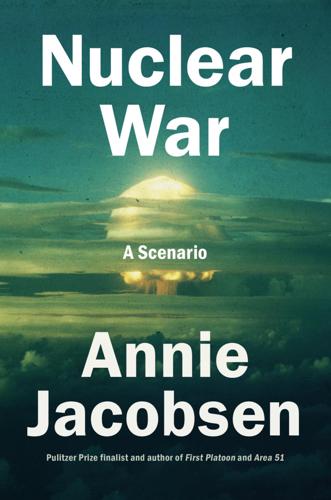
Nuclear War: A Scenario
by
Annie Jacobsen
Published 25 Mar 2024
To note: Robock and colleagues, in modeling nuclear winter effects, almost always use degrees Celsius in their papers; some news outlets convert these numbers in error, and report them incorrectly. GO TO NOTE REFERENCE IN TEXT called nuclear winter: R. P. Turco et al., “Nuclear Winter: Global Consequences of Multiple Nuclear Explosions,” Science 222, no. 4630 (1983): 1283–92. GO TO NOTE REFERENCE IN TEXT Parade magazine: For a summation of the drama that unfolded around the initial reporting on nuclear winter, see Matthew R. Francis, “When Carl Sagan Warned the World about Nuclear Winter,” Smithsonian, November 15, 2017.
…
“They said nuclear winter is irrelevant,” recalls Professor Brian Toon, one of the original authors. “They called it Soviet disinformation.” But behind closed doors and in writings that have only recently seen the light of day, those at the very heart of the nuclear weapons complex knew the threat of nuclear winter was real. The result of a large-scale nuclear exchange, wrote scientists with the Defense Nuclear Agency, would be “atmospheric trauma”—and with “serious potential for severe consequences” for Earth’s “weather and climate.” “Of course there are uncertainties with nuclear winter scenarios,” physicist Frank von Hippel tells us today.
…
“Of course there are uncertainties with nuclear winter scenarios,” physicist Frank von Hippel tells us today. “But there’s no uncertainty if you inject that much soot into the atmosphere after a [full-scale] nuclear war.” In the original nuclear winter paper, the authors acknowledged their modeling had limitations. It was 1983. Computers were still in their infancy. And now, decades later, state-of-the-art modeling systems show atmospheric trauma from nuclear winter will, in fact, be even more severe. “Our first models [in 1983] said nuclear winter would last about one year,” Toon explains. “New data suggests the Earth’s recovery time would be more like ten years.” That the sun’s warming rays will reduce by roughly 70 percent.

The Precipice: Existential Risk and the Future of Humanity
by
Toby Ord
Published 24 Mar 2020
Skeptics of the nuclear winter scenario often point to these remaining uncertainties, as they show that our current scientific understanding is compatible with a milder nuclear winter. But uncertainty cuts both ways. The effect of nuclear winter could also be more severe than the central estimates. We don’t have a principled reason for thinking that the uncertainty here makes things better.41 Since I am inclined to believe that the central nuclear winter scenario is not an existential catastrophe, the uncertainty actually makes things worse by leaving this possibility open. If a nuclear war were to cause an existential catastrophe, this would presumably be because the nuclear winter effect was substantially worse than expected, or because of other—as yet unknown—effects produced by such an unprecedented assault on the Earth.
…
The world’s major crops would fail, and billions could face starvation in a nuclear winter. Nuclear winter was highly controversial at first, since there were many uncertainties remaining, and concerns that conclusions were being put forward before the science was ready. As the assumptions and models were improved over the years, the exact nature of the threat changed, but the basic mechanism stood the test of time.33 Our current best understanding comes from the work of Alan Robock and colleagues.34 While early work on nuclear winter was limited by primitive climate models, modern computers and interest in climate change have led to much more sophisticated techniques.
…
But we may also face a breakdown in law and order at all scales, continuing hostilities, and a loss of infrastructure including transport, fuel, fertilizer and electricity. For all that, nuclear winter appears unlikely to lead to our extinction. No current researchers on nuclear winter are on record saying that it would and many have explicitly said that it is unlikely.38 Existential catastrophe via a global unrecoverable collapse of civilization also seems unlikely, especially if we consider somewhere like New Zealand (or the southeast of Australia) which is unlikely to be directly targeted and will avoid the worst effects of nuclear winter by being coastal. It is hard to see why they wouldn’t make it through with most of their technology (and institutions) intact.39 There are significant remaining uncertainties at all stages of our understanding of nuclear winter: 1.

Active Measures: The Secret History of Disinformation and Political Warfare
by
Thomas Rid
Once a nuclear attack surpassed this threshold, it would trigger global mayhem, thus ensuing the attacker’s own self-destruction. The Science piece used data and technical language. Nuclear winter wasn’t political science; these were hard, cold facts. Sagan also placed a less technical article about nuclear winter in Foreign Affairs. One month earlier, on November 23, the CIA sent a classified memo to the National Intelligence Council. The memo mentioned the nuclear winter theory with concern, referring to “a new analysis and conclusion which apparently throws all previous estimates on recovery out the window.”5 Recovering from a nuclear war might not be possible, the CIA concluded, and the climate effects would have strategically “profound implications.”
…
“This man literally held the keys to a Russian intelligence gold mine,” one unnamed FBI source said.9 Vladimir Alexandrov, a Soviet climate researcher, studied nuclear winter models on American supercomputers. (UCAR) Nuclear winter, it appeared, was a Soviet hoax. The KGB itself saw it as one of the most successful disinformation operations of all time. Yet, on closer examination, the story brings into sharp relief a finding that is even more surprising—and even more dangerous. At the heart of the tale of nuclear winter is the mysterious death of Vladimir Alexandrov. In the early 1980s, Alexandrov was one of the USSR’s most prominent climate scientists.
…
Richard Turco, co-author of the original TTAPS study, told Science that Alexandrov’s paper was “a very weak piece of work, crude and seriously flawed … The Soviets have contributed little to the international ‘nuclear winter’ study effort thus far, and quite a few people are extremely disappointed,”18 he said. The CIA reiterated this skeptical assessment internally: “Soviet research on Nuclear Winter is not convincing.” Russian scholars made only modest conceptual advances when measured against the original TTAPS study. Instead, the scientific work on nuclear winter under way in Russia was not backed up by independent research and was derived “almost entirely from U.S. ideas, data, and models.”19 Soviet science had bad data, limited computer equipment, and a politically fueled appetite for extreme findings, all of which pushed Soviet scientists to make wild exaggerations.
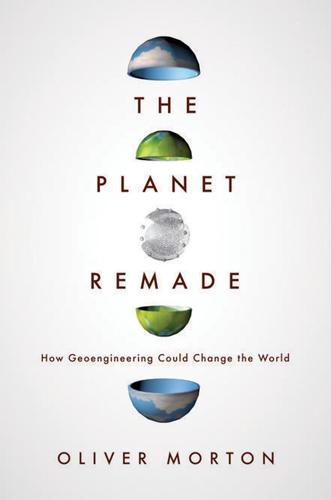
The Planet Remade: How Geoengineering Could Change the World
by
Oliver Morton
Published 26 Sep 2015
Returning to the willful blindness as to the climate effects of nuclear war, though, how was it that, eventually, the possibility of nuclear winter came to be discovered? The answer piles irony on irony. The catastrophic turn in the imagination that had been shaped by fears of a nuclear apocalypse was not restricted to novels, disaster movies and generalized dread. It moulded the course of science as well. Specific insights derived from studies of nuclear explosions led to a widened scientific appreciation of other ways in which the world might end. It was the search for possible examples of such natural catastrophes that eventually led to predictions of nuclear winter. In the first part of the twentieth century geology was ideologically and methodologically committed to ‘uniformitarian-ism’ – the belief that although the Earth’s features change, the processes by which those features come into being and pass away are constant.
…
The idea that climate science was a rat’s nest of left-wingers stretching their computer models to unreasonable lengths in order to try and subvert America’s national interests flourished in the minds of the Wall Street Journal’s editorial board, among other places; a decade later it would be reused more or less unchanged in attacks on attempts to curb carbondioxide emissions. Sagan and Turco later claimed that fears of a nuclear winter were instrumental in ending the cold war. There is no strong evidence for this, and it is not a common view – indeed, it is quite easy to find histories of the cold war that make no mention of nuclear winter at all. In 1983, after a pre-publication briefing on the TTAPS paper, an arms-control expert told Sagan that ‘if you think that the mere prospect of the end of the world is sufficient to change thinking in Washington and Moscow you clearly haven’t spent much time in either of those places’.
…
In the past few years the idea of aiming for a world with no nuclear weapons has gained increasing currency in policy circles, and it is possible to see the shadow of nuclear winter, and the metamilitary threat it poses to combatant and non-combatant countries alike, behind the impulse to change the basic terms of the nuclear debate. But that may be projection; the idea is rarely evoked specifically. When President Obama spoke about moving towards a post-nuclear age in a 2009 speech given in Prague he made no mention of nuclear winter; he did, though, make mention of global warming as one of the new threats to which the world must turn its attention.
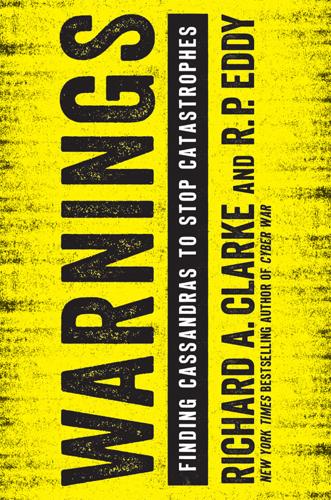
Warnings
by
Richard A. Clarke
Published 10 Apr 2017
ROBOCK’S WARNING It is hard to know precisely what the political effects of the nuclear-winter theory were, but those who were the leaders of the U.S. and USSR at the time later admitted that it had helped prompt them to act. Ronald Reagan was the U.S. President at the time and was widely thought to be eager for a fight with the Soviet Union. Yet after reading about the nuclear-winter theory, Reagan met with his Soviet counterpart, Mikhail Gorbachev, in Iceland and proposed the abolition of nuclear weapons. The Russian leader, who also had a growing concern about a nuclear winter, agreed in principle, but suggested that the two countries start by limiting the deployment of new weapons and then later reducing their stockpiles.
…
In 2007, he recalculated the effects of a nuclear war, using vastly more sophisticated global climatic, atmospheric, and ocean data and simulations than had been available in the 1980s. He confirmed the nuclear winter theory. The effects of nuclear war had not been exaggerated in the slightest, but, in fact, were worse than originally predicted. A nuclear winter would require less soot ejected into the upper atmosphere, and the effects would be longer lasting than had earlier been thought to be the case. Thus, Robock argued, even though the United States and Russia had far fewer nuclear warheads than they possessed decades earlier, they still had more than enough to create a global nuclear winter. In 2009, with Owen Toon, he looked at the possibility that some similar effect might occur even without the involvement of either the U.S. or Russia.
…
Sagan responded that it was impossible fully to test the hypothesis, as science normally demanded, without having a nuclear war. Anti–nuclear weapons groups in Europe and the United States had been seeking a “nuclear freeze,” a ban on the creation of any additional nuclear weapons. The nuclear-winter theory gave these activists additional impetus, and their movement became a significant political force on both sides of the Atlantic. Sagan, along with TTAPS partner Richard Turco, reflected on their cause in another book, A Path Where No Man Thought: Nuclear Winter and the End of the Arms Race, arguing for further nuclear weapons reductions. In it, they recall the story of Cassandra as told in Aeschylus’s play Agamemnon: “Nobody paid attention. . . .

Global Catastrophic Risks
by
Nick Bostrom
and
Milan M. Cirkovic
Published 2 Jul 2008
The scientists considered a nuclear exchange involving 100 Hiroshima-size bombs ( 1 5 kilotons) on cities in the subtropics, and found that: Smoke emissions of 100 low-yield urban explosions in a regional nuclear conflict would generate substantial global-scale climate anomalies, although not as large as the previous 'nuclear winter' scenarios for a full-scale war. H owever, indirect effect on 1 9 Turco, R.P., Toon, O.B., Ackerman, T.P., Pollack, J.B., and Sagan, C. (1983). Nuclear winter: global consequences of mutliple nuclear explosions. Science, 222, 1290. 20 Turco, R.P., Toon, O.B., Ackerman, T.P., Pollack, J . B . , and Sagan, C. ( 1990). Climate and smoke: an appraisal of nuclear winter. Science, 247, 166. 21 Ibid., p. 1 7 4. 22 Sagan, C. and Turco, R.P. ( 1 993). Nuclear winter in the Post-Cold War era. journal of Peace Research, 30(4), 369. 392 Global catastrophic risks surface land temperatures, precipitation rates, and growing season lengths would be likely to degrade agricultural productivity to an extent that historically has led to famines in Africa, India and Japan after the 1 784 Laki eruption or in the northeastern U nited States and Europe after the Tambora eruption of 1 8 1 5 .
…
However, it was also found that the maximum continental interior land cooling can reach 40° C, more than the 30-35 degrees estimate in the 1 980s, 'with subzero temperatures possible even in the summer'. 20 In a Science article in 1 990, the authors summarized: Should substantial urban areas or fuel stocks be exposed to nuclear ignition, severe environmental anomalies - possibly leading to more human casualties globally than a remote possibility, but a likely the direct effects of nuclear war - would be not just outcome.2 1 Carl Sagan and Richard Turco, two of the original scientists developing the nuclear winter analysis, concluded in 1993: Especially through the destruction o f global agriculture, nuclear winter might b e considerably worse than the short-term blast, radiation, fire, and fallout o f nuclear war. It would carry nuclear war to many nations that no one intended to attack, including the poorest and most vulnerable.22 In 2007, members of the original group of nuclear winter scientists collectively performed a new comprehensive quantitative assessment utilizing the latest computer and climate models.
…
Thus, the ice-core evidence suggests that the Toba signal occurred during the transition from a warm interglacial climate and was preceded and followed by abrupt climate oscillations that preceded the start of the most recent major early glaciation (Zielinski et al., 1 996a, 1 99Gb). 10.3 Volcanic winter Since Toba is a low-latitude volcano, dust and volatiles would have been injected efficiently into both Northern and Southern Hemispheres ( Rampino et al., 1988), although the season of the eruption is unknown. These estimated 208 Global catastropic risks aerosol optical effects are roughly equivalent in visible opacity to smoke-clouds (Turco et al., 1 990) , which is within the range used in nuclear-winter scenarios of massive emissions of soot emanating from burning urban and industrial areas in the aftermath of nuclear war. Although the climate conditions and duration of a nuclear winter have been much debated, simulations by Turco and others ( 1990) predicted that land temperatures in the 30°-70° N latitude zone could range from approximately soc to approximately 15°C colder than normal, with freezing events in mid latitudes during the first few months.
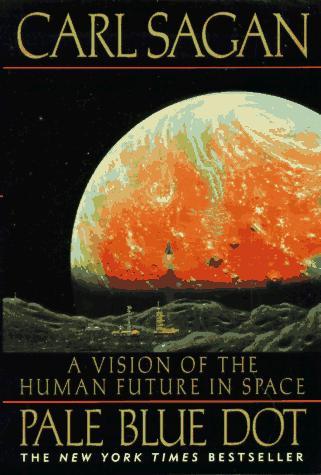
Pale Blue Dot: A Vision of the Human Future in Space
by
Carl Sagan
Published 8 Sep 1997
Although it's hard to be certain about such things, a case can be made that nuclear Winter played a constructive role (there were other causes, of course) in convincing the nuclear-armed nations, especially the Soviet Union, of the futility of nuclear war. Nuclear winter was first calculated and named in 1982/83 by a group of five scientists, to which I'm proud to belong. This team was given the acronym TTAPS (for Richard P. Turco, (even B. Toon, Thomas Ackerman, James Pollack, and myself). Of the five TTAPS scientists, two were planetary scientists, and the other three had published many papers in planetary science, The earliest intimation of nuclear winter came during that same Mariner 9 mission to Mars, when there was a global dust storm and we were unable to see the surface of the planet; the infrared spectrometer on the spacecraft found the high atmosphere to be warmer and the surface colder than they ought to have been.
…
The climatological history of our planetary neighbor, an otherwise Earthlike planet on which the surface became hot enough to melt tin or lead, is worth considering—especially by those who say that the increasing greenhouse effect on Earth will be self-correcting, that we don't really have to worry about it, or (you can see this in the publications of some groups that call themselves conservative) that the greenhouse effect itself is a "hoax." (3) Nuclear winter is the predicted darkening and cooling of the Earth—mainly from fine smoke particles injected into the atmosphere from the burning of cities and petroleum facilities—that is predicted to follow a global thermonuclear war. A vigorous scientific debate ensued on just how serious nuclear winter might be. The various opinions have now converged. All three-dimensional general circulation computer models predict that the global temperatures resulting from a worldwide thermonuclear war would be colder than those in the Pleistocene ice ages.
…
A volcanic eruption in Taupo, New Zealand, in the year 177 cooled the climate of the Mediterranean, half a world away, and dropped fine particles onto the Greenland ice cap. The explosion of Mt. Mazama in Oregon (which left the caldera now called Crater Lake) in 4803 B.C. had climatic consequences throughout the northern hemisphere. Studies of volcanic effects on the climate were on the investigative path that eventually led to the discovery of nuclear winter. They provide important tests of our use of computer models to predict future climate change. Volcanic particles injected into the upper air are also an additional cause of thinning of the ozone layer. So a large volcanic explosion in some unfrequented and obscure part of the world can alter the environment on a global scale.
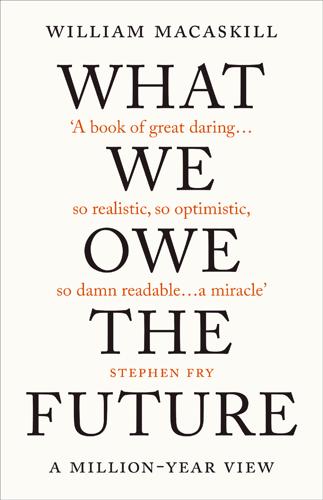
What We Owe the Future: A Million-Year View
by
William MacAskill
Published 31 Aug 2022
Luisa Rodriguez (2019) estimates that with current arsenals, an all-out Russia-NATO nuclear war would lead to fifty-one million fatalities. 56. Coupe et al. 2019, Figure 7; Robock et al. 2007, Figure 2. 57. Coupe et al. 2019, Figures 10, 12. 58. Robock 2010. Note that these nuclear winter models are controversial, and some models suggest that the cooling would be considerably smaller. The possibility of nuclear winter has been controversial since it was first proposed in the 1980s (see, e.g., Maddox 1984; Penner 1986). Reisner et al. (2018) have criticised estimates of nuclear winter using modern climate models. 59. IFLA 2021. More at whatweowethefuture.com/notes. 60. Roser 2013c; Rapsomanikis 2015, 9. About two-thirds of the developing world’s three billion rural people live in about 475 million small farm households, working on land plots smaller than two hectares. 61.
…
Two billion people today work in agriculture, with a sizable fraction working in smallholder subsistence farms, so it is exceptionally unlikely that we would lose all knowledge of agriculture.60 Finally, any large-scale catastrophe would be quite diverse in its impacts. Because all countries with nuclear weapons are in the Northern Hemisphere, the impacts of a nuclear winter would be more limited in the Southern Hemisphere; and because oceans retain heat, coastal areas would be much less affected.61 For coastal South America or Australia, a nuclear winter would result in a summer about five degrees cooler than usual,62 which would be bad but manageable. Similarly, if bioweapons were used, some island nations that were not involved in the conflict might be better able than other countries to defend against them by closing their borders.
…
If there were a reignition of serious military tensions between the United States and Russia, or new military tensions between other nuclear powers like the United States and China, or India and Pakistan, nuclear arsenals could grow significantly.54 An all-out nuclear war would potentially kill a much larger percentage of the world than any catastrophe we have seen. The direct death toll alone would be measured in the tens to hundreds of millions.55 Even worse, some modelling suggests that such a war could result in a “nuclear winter”: if soot from the burning cities were lofted high enough to reach the stratosphere, then global average temperatures would drop by eight degrees Celsius, returning to normal only over the course of ten to twenty years.56 This would make it impossible to grow food across much of the Northern Hemisphere for several years, though agriculture would still be feasible across much of the tropics and the Southern Hemisphere, albeit hampered by reduced rainfall in many places.57 Some argue that this could lead to widespread famine, potentially putting billions at risk of starvation.58 For concreteness, let’s consider what I would regard as an absolute worst-case nuclear scenario, in which 99 percent of the world population dies in the aftermath of an all-out war, leaving a global population of around eighty million.
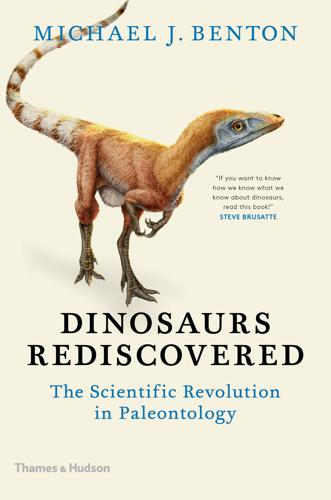
Dinosaurs Rediscovered
by
Michael J. Benton
Published 14 Sep 2019
The debate rumbles on, with revivals of the idea in papers in 2016 and 2017, but most have abandoned the idea of periodicity. One other consequence of the Alvarez model has had more traction, and that is the idea of nuclear winter. Three years after publication of the Alvarez paper, several climatologists began to speculate about the effects of all-out nuclear war. Richard P. Turco coined the term ‘nuclear winter’ in 1983 to describe the main outcome of mass bombing, which would be the lofting of ash into the upper atmosphere that would blot out the sun, leading to freezing conditions as the warming effect of sunlight was removed.
…
Quickly the climatologists, modellers, and futurists saw the parallels with the Alvarez extinction model, and the assumptions are all now accepted, both for the impact at the end of the Cretaceous, and for the consequences of a similarly massive energy release from explosion of the Earth’s nuclear arsenals. Periodicity may have bitten the dust, but nuclear winter and impact killing of dinosaurs survived scrutiny. Then the crater was found. The killer crater The impact theory, periodicity, and nuclear winter idea set scientists, and the public, talking, and in 1985 the BBC made a Horizon programme about the proposed end-Cretaceous asteroid impact. The journalists asked the rather obvious question: where was the crater, the smoking gun?
…
But despite their ignorance, the geochemists feel that all you have to do is crank up some fancy machine and you’ve revolutionized science.’ Well, Bakker was wrong, as were many (perhaps most) other palaeontologists and geologists at the time. The impact really did happen, as we now know, based on hard evidence from field research, as we shall see. Periodicity and nuclear winter The idea of an asteroid impact 66 million years ago immediately spawned another, perhaps more startling consequence. If an impact happened once, why not many times? The suggestion was made in 1984 by David Raup and his colleague Jack Sepkoski, based on their preliminary analysis of the fossil record.

Enlightenment Now: The Case for Reason, Science, Humanism, and Progress
by
Steven Pinker
Published 13 Feb 2018
Reviews of nuclear weapons today: Evans, Ogilvie-White, & Thakur 2014; Federation of American Scientists (undated); Rhodes 2010; Scoblic 2010. 67. World’s nuclear stockpile: Kristensen & Norris 2016a; see also note 113 below. 68. Nuclear winter: Robock & Toon 2012; A. Robock & O. B. Toon, “Let’s End the Peril of a Nuclear Winter,” New York Times, Feb. 11, 2016. History of nuclear winter/autumn controversy: Morton 2015. 69. Doomsday Clock: Bulletin of the Atomic Scientists 2017. 70. Eugene Rabinowitch, quoted in Mueller 2010a, p. 26. 71. Doomsday Clock: Bulletin of the Atomic Scientists, “A Timeline of Conflict, Culture, and Change,” Nov. 13, 2013, http://thebulletin.org/multimedia/timeline-conflict-culture-and-change. 72.
…
Fewer states with fissile materials: “Sam Nunn Discusses Today’s Nuclear Risks,” Foreign Policy Association blogs, http://foreignpolicyblogs.com/2016/04/06/sam-nunn-discusses-todays-nuclear-risks/. 119. Disarmament without treaties: Kristensen & Norris 2016a; Mueller 2010a. 120. GRIT: Osgood 1962. 121. Small arsenal, no nuclear winter: A. Robock & O. B. Toon, “Let’s End the Peril of a Nuclear Winter,” New York Times, Feb. 11, 2016. The authors recommend that the United States reduce its arsenal to 1,000 warheads, but they don’t say whether this would rule out the possibility of nuclear winter. The number 200 comes from a presentation by Robock at MIT, April 2, 2016, “Climatic Consequences of Nuclear War,” http://futureoflife.org/wp-content/uploads/2016/04/Alan_Robock_MIT_April2.pdf. 122.
…
If India and Pakistan went to war and detonated a hundred of their weapons, twenty million people could be killed right away, and soot from the firestorms could spread through the atmosphere, devastate the ozone layer, and cool the planet for more than a decade, which in turn would slash food production and starve more than a billion people. An all-out exchange between the United States and Russia could cool the Earth by 8°C for years and create a nuclear winter (or at least autumn) that would starve even more.68 Whether or not nuclear war would (as is often asserted) destroy civilization, the species, or the planet, it would be horrific beyond imagining. Soon after atom bombs were dropped on Japan, and the United States and the Soviet Union embarked on a nuclear arms race, a new form of historical pessimism took root.
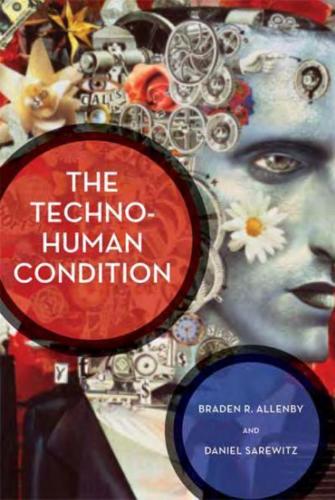
The Techno-Human Condition
by
Braden R. Allenby
and
Daniel R. Sarewitz
Published 15 Feb 2011
But when A Long, Transhuman Trip 11 Vishnu, in the Bhagavad Gita, first spoke those words, many centuries earlier, it was as a true god; when Oppenheimer did, he was a mere mortal in awe not of what God or Nature had visited upon us, but what we had built for ourselves-even as that creation equaled the destructive powers that humans had always attributed to their gods. We have since gotten used to, even blase about, the possibility of nuclear winter, in the way a two-year-old gets used to a loaded .357 magnum lying on the floor within easy reach. We are as gods? No, for we have created the power but not the mind. And as technological evolution continues to outpace the grasp of human intent, we have little time to waste. These are the questions of our time, and they cannot be engaged though flights into tradition.
…
A population of some 7 billion humans, each seeking a better life and thirsting for technologies used and perceived at the shop-floor level of complexity, ensures that our overall role in global systems will increase unless there is some sort of population crash. And be careful if you wish for this under your breath, for such a catastrophe, whether from nuclear winter, terrorism and response, ecosystem collapse, or some other source, would create havoc among all systems, human, natural, and built. 68 Chapter 4 Another topical example is provided by the current "crisis in biodiversity," as human activity causes extinction to increase dramatically.4 On the one hand, ecologists may be justifiably concerned about whether key ecosystems-the depleted wetlands surrounding New Orleans, for example-are able to fulfill the functions upon which our societies depend (protecting a city from hurricane surges, in this case).
…
Looked at in another light, this is truly technology as Vishnu, "destroyer of worlds," for the world that existed before rails, with its small local businesses, parochial cultures, charming fragmentation of time, small-scale capitalism, and quaint worldview of Edenic pastoralism-that world was destroyed as surely and as effectively as ever Vishnu wrought, or nuclear winter threatened. 17 Level III Technology 79 And just like the dinosaurs, those who were there were unaware of what was truly bearing down on them, and could not have imagined the world that came after. Not unlike us. This constellation of social, economic, cultural, ethical, theological, institutional, and policy patterns associated with a core technology is by no means unique to railroads.
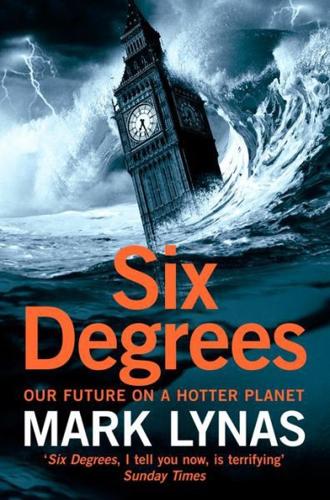
Six Degrees: Our Future on a Hotter Planet
by
Mark Lynas
Published 1 Apr 2008
In addition, temperature swings were astonishingly rapid-several degrees in the space of a decade as the climate warmed and then cooled again. At one point, about 70,000 years ago, a huge supervolcano eruption in Indonesia blew thousands of cubic kilometres of dust and sulphur into the atmosphere, cutting off the Sun's heat and causing global temperatures to plummet. Humans were nearly wiped out in the ensuing ‘nuclear’ winter: the entire global human population crashed to somewhere between 15,000 and 40,000 individuals, a survival bottleneck which is still written in the genes of every human alive today. By implication, if six degrees of cooling was enough to nearly wipe us out in the past, might six degrees of warming have a similar effect in the future?
…
No rain fell, but black hail pounded the ground 30 kilometres to the east. An F2-strength tornado touched down just to the west of the city's fringe. Smoke was thrown into the air with such explosive force that it penetrated the stratosphere and began to circulate the globe-cutting off some of the Sun's rays in a small-scale ‘nuclear winter’. When calm was restored, four people were dead and five hundred buildings reduced to ashes. Since politicians had refused to consider the future, the future had paid a visit to the politicians-in their own home town. Houston, we have a (hurricane) problem Houston, Texas: 5 August 2045, 9 p.m.: As the evening light fades, an oily swell has begun to rise in the Gulf of Mexico.
…
As the chemical engineer Gregory Ryskin writes, in a paper specifically addressing ‘kill mechanisms’ at the end-Permian, this methane ‘could destroy terrestrial life almost entirely’. A major oceanic methane eruption, he estimates, ‘would liberate energy equivalent to 108 megatonnes of TNT, around 10,000 times greater than the world's stockpile of nuclear weapons’. This global conflagration might even cause short-term cooling akin to a nuclear winter, before boosting global warming further with the CO2 produced by the combusted methane. (And any uncombusted methane would have an even more serious warming effect.) The methane killing agent may not have acted alone. As vegetation and animal carcasses rotted in the stagnant oceans, large quantities of hydrogen sulphide were building up in the depths.

On the Future: Prospects for Humanity
by
Martin J. Rees
Published 14 Oct 2018
For my part, I would not have chosen to risk a one in three—or even a one in six—chance of a catastrophe that would have killed hundreds of millions and shattered the historic fabric of all European cities, even if the alternative were certain Soviet dominance of Western Europe. And, of course, the devastating consequences of thermonuclear war would have spread far beyond the countries that faced a direct threat, especially if a ‘nuclear winter’ were triggered. Nuclear annihilation still looms over us: the only consolation is that, thanks to arms control efforts between the superpowers, there are about five times fewer weapons than during the Cold War—Russia and the United States each have about seven thousand—and fewer are on ‘hair trigger’ alert.
…
But these events weren’t global; for instance, the Black Death didn’t reach Australia. But in our networked world, there would be nowhere to hide from the consequences of economic collapse, a pandemic, or a collapse in global food supplies. And there are other global threats; for instance, intense fires after a nuclear exchange could create a persistent ‘nuclear winter’—preventing, in worst-case scenarios, the growing of conventional crops for several years (as could also happen after an asteroid impact or a super-volcano eruption). In such a predicament it is collective intelligence that would be crucial. No single person fully understands the smartphone—a synthesis of several technologies.
…
See also electricity grids; internet neutron stars, 162–63 New Horizons spacecraft, 142 Newton, Isaac, 165, 171, 187, 194, 195, 196–97, 205 normal science, Kuhnian, 205 nuclear deterrence, 19 nuclear energy, 53–57; based on twentieth-century physics, 64; for low-carbon energy generation, 48; prospects for fusion, 48, 54–55; public fear of radiation and, 53, 55; for spaceflight, 148 nuclear fusion: as energy source, 48, 54–55; in Sun and stars, 122, 123 nuclear weapons: Cold War and, 17–20; collapse in global food supplies and, 216; not necessarily an existential threat, 110; public engagement of atomic scientists and, 222; in response to cyberattack, 21 nuclear winter, 19, 216 Obama, Barack, 48 ocean acidification, 58 online courses, 98–99 On the Origin of Species (Darwin), 121, 196 Open University of U.K., 98 optimism: about life’s destiny, 227; about moral progress, 6; about technological fixes for climate change, 42; about technology, 5, 225–26; machines surpassing human capabilities and, 108; Wells’s mix of anxiety and, 14 organ transplants, 71–72 origin of life, 128–29, 135–36 Our Final Hour (Rees), 12–13 ozone depletion, 31–32 pale blue dot, 10, 120, 133, 164 Paley, William, 197–98 pandemics: advances in microbiology and, 72; air travel and, 109; as global threat, 216, 217; magnitude of fallout from, 76–77 paradigm shifts, 205 Parfit, Derek, 116–17 Paris climate conference of 2015: Mission Innovation of, 48; papal encyclical and, 35; protocols following on, 219; temperature goal of, 41; uncertain results of, 44, 57 particle accelerators: Large Hadron Collider, 206–7; speculation on risks of, 110–16, 118; teams working on big projects of, 205–6 Pauli, Wolfgang, 209 Peierls, Rudolf, 222 personal identity, 105 pessimism, 226–27 Petrov, Stanislav, 18 Pfizer, abandoning neurological drugs, 212 philosophers of science, 203–5 physical reality: aliens with different perception of, 160, 190; human-induced threats and, 118; limited power of human minds and, 9, 189–90, 194; observable universe and, 181; our constricted concept of, 184.
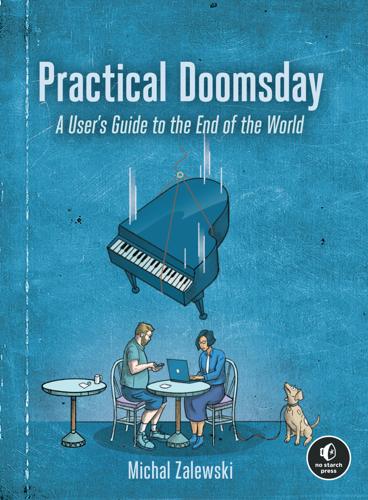
Practical Doomsday: A User's Guide to the End of the World
by
Michal Zalewski
Published 11 Jan 2022
To be sure, some doomsday prophets use dazzling and convincing science—but just like religion, science isn’t immune to being twisted in the service of decidedly unscientific causes and beliefs. Consider the perception of the atom bomb that emerged at the height of the Cold War: the prophecy of a prolonged nuclear winter that snuffs out most life on Earth, leaving a barren radioactive wasteland that would remain inhospitable for thousands of years. This apocalyptic vision took hold not because it was scientifically sound, but because it served important interests. For the military top brass, it boosted the strategy of nuclear deterrence, striking fear in the hearts of rogue nations; and for anti-war and pro-USSR activists in the West, it helped rally the masses against the anti-communist hardliners in the government, portraying them as lunatics who wouldn’t hesitate to blow up the planet if it kept the Soviets out of Cuba or Afghanistan.
…
For the military top brass, it boosted the strategy of nuclear deterrence, striking fear in the hearts of rogue nations; and for anti-war and pro-USSR activists in the West, it helped rally the masses against the anti-communist hardliners in the government, portraying them as lunatics who wouldn’t hesitate to blow up the planet if it kept the Soviets out of Cuba or Afghanistan. Except, the prediction was almost certainly not true: a fully fledged thermonuclear exchange would be an unspeakable tragedy and would kill tens of millions, but most of the population would survive, and the survivors would likely face a fairly hospitable world. The hypothesis of nuclear winter—a global cooling event triggered by the smoke from the resulting firestorms—is the most robust aspect of the prediction, but its magnitude and impacts are far from clear.1 The fears of radiation, on the other hand, seem greatly overstated. About 4,000 deployed nuclear warheads exist in the world, setting an immediate upper bound on the scope of a large-scale exchange;2 it’s a staggering number, but also not far off from the about 500 atmospheric and 1,500 underground nuclear tests previously conducted by the United States, Russia, and other countries around the globe.3 The testing had some adverse effects on local populations, but few ecosystem consequences to speak of.
…
“America’s Two Largest States Are Fighting COVID-19 Differently,” The Economist, February 4, 2021, https://www.economist.com/united-states/2021/02/06/americas-two-largest-states-are-fighting-covid-19-differently/. 20. Mark Memmott, “Sniper Attack On Calif. Power Station Raises Terrorism Fears,” National Public Radio, February 5, 2014, https://www.npr.org/sections/thetwo-way/2014/02/05/272015606/sniper-attack-on-calif-power-station-raises-terrorism-fears/. Chapter 4 1. Brian Martin, “Nuclear Winter: Science and Politics,” Science and Public Policy 15, no. 5 (October 1988): 321–334, https://www.bmartin.cc/pubs/88spp.html. 2. “Nuclear Weapons: Who Has What at a Glance,” Arms Control Association, August 2020, https://www.armscontrol.org/factsheets/Nuclearweaponswhohaswhat/. 3. “The Nuclear Testing Tally,” Arms Control Association, July 2020, https://www.armscontrol.org/factsheets/nucleartesttally/. 4.
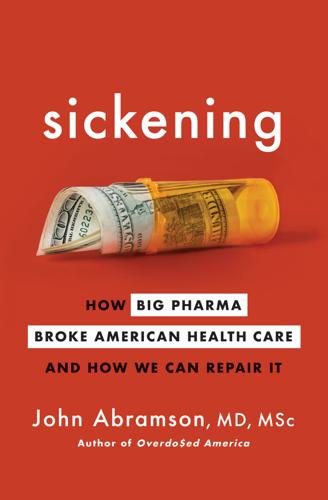
Sickening: How Big Pharma Broke American Health Care and How We Can Repair It
by
John Abramson
Published 15 Dec 2022
Cummings Lower Drug Costs Now Act: How It Would Work, How It Would Affect Prices, and What the Challenges Are,” Commonwealth Fund, April 9, 2020, https://www.commonwealthfund.org/publications/issue-briefs/2020/apr/lower-drug-costs-now-act-hr3-how-it-would-work. a “nuclear winter”: Jonathan Gardner, “House Passes Drug Pricing Bill That Pharma Warned Would Bring ‘Nuclear Winter,’” BiopharmaDive, December 12, 2019, https://www.biopharma dive.com/news/house-approves-hr3-drug-pricing-bill-pharma/568966/. $456 billion: Phillip L. Swagel, Congressional Budget Office, letter to Frank Pallone Jr., chairman, Committee on Energy and Commerce, U.S.
…
It would have required price negotiation with the manufacturers of at least the 50 (and up to a total of 125) drugs Americans spend the most on, aiming at a price ceiling of no more than 120 percent of the average paid in six European countries. Predictably, PhRMA was up in arms, hyperbolically warning the bill would cause a “nuclear winter” in biotech innovation. The Congressional Budget Office (CBO) came to a very different conclusion. They calculated that, had this bill been approved by the Senate and signed by the president, it would have reduced Big Pharma’s revenues by $456 billion for the decade starting in 2020. However, said the CBO, a reduction in Pharma revenues of this magnitude would likely mean that the total number of new drugs approved over the next ten years (estimated at three hundred) would be reduced by only “approximately 8.”
…
And the campaign skillfully obscured the fact that most newly approved drugs — despite being labeled innovative — do not provide previously unavailable benefit. PhRMA’s PR campaign against the bill to limit drug prices in the United States shows just how shameless drug companies are willing to be to protect their excess profits. The $456 billion that the bill would save over ten years — ostensibly causing a “nuclear winter” in drug innovation — was dwarfed by the $577 billion the drug industry had awarded its investors in the form of stock buybacks and dividends in just the five years between 2016 and 2020. To be clear, PhRMA was threatening the public with dire health consequences if legislation brought exorbitant drug prices back in line with prices in other wealthy countries, yet at the same time its companies were skimming off more than twice as much for their investors!
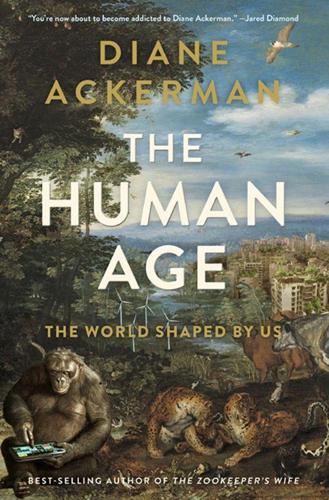
The Human Age: The World Shaped by Us
by
Diane Ackerman
Published 9 Sep 2014
WILD HEART, ANTHROPOCENE MIND Knee-deep in the blizzard of 1978, when wind-whipped sails of snow tacked across Lake Cayuga, and the streets looked like a toboggan run, I was a student in upstate New York. Despite the weather, classes met, and scientists with souls luminous as watch dials were talking about nuclear winter, the likely changes in Earth’s climate in the aftermath of a nuclear war: the sun white cotton in a perishable sky, dust clouds thickening over the Earth, plants forgetting how to green, summer beginning at twenty below zero, and then the seasons failing all living things. It seemed a possible scenario, since in Washington and Moscow, politicians were outdaring each other with playground bravado.
…
Only moments before, in geological time, we were speechless shadows on the savanna, foragers and hunters of small game. How had we become such a planetary threat? As the lectures and snow squalls ebbed, we students seemed small radiant forms in a vast white madness. A quarter of a century later, Nobel laureate Paul Crutzen (who discovered the hole in the ozone layer and first introduced the idea of nuclear winter) stepped onto the world stage again, arguing that we’ve become such powerful agents of planetary change that we need to rename the geological age in which we live. Elite scientists from many nations agreed, and a distinguished panel at the Geological Society of London (the official arbiter of the geologic time scale) began weighing the evidence and working to update the name of our epoch from its rocky designation, Holocene (“Recent Whole”), to one that recognizes, for the first time, our unparalleled dominion over the whole planet, Anthropocene—the Human Age.
…
G., 231 bamboo, 132 Bangladesh, 51–53, 271 basil, 89, 90 Bat Bomb Project, 145 bats, 115 Bavaria, Germany, 107 Baylis, Françoise, 266 beans, 190 beavers, 135 bee balm, 125 beebots, 181 bees, 147, 166 beetles, 164, 180–81 Bell Museum of Natural History, 115 beluga whales, 135, 144 Benenson, Peter, 98 Benyus, Janine, 92 Berridge, Matt, 5–7, 25–28, 202 Bespoke Innovations, 236–37 Bhutan, 72 big agriculture, 154 Big Sur, 115 biofuels, 64 bioluminescent foliage, 83 biomimicry, 91–92 bionic fingers, 13 bionic suits, 13 bioprinting, 238, 245–46 bipolar disorder, 285 birds, 216 extinction of, 139 bird’s-foot trefoil, 166 black bears, 126 “Black Marble” photograph, 17 Blade Runner (film), 228, 253 Blanc, Patrick, 79–82, 84–85, 207 bleeding hearts, 125 Blizzard Nemo, 58 bloomers, 191 blue-jay feathers, 91 “Blue Marble” photograph, 17–18, 305 bobcats, 129 Boeing, 236 Bonassar, Lawrence, 243–52, 253 bonobos, 201–3 books, 171 Borges, Jorge Luis, 236 Borneo, 107, 132, 313 Boulogne, France, 83 Boulter, Nicky, 298–99 Bracken Cave, 145 brain, 150, 281 rewiring of, 191 scans of, 176–78 Bramel, Paula, 155 Brand, Stewart, 150 Branson, Richard, 54 Brazil, 46, 88, 123 breast milk, 301 breeding, 149–50 Breezy Point, N.Y., 45 Brittany, France, 62–63 Bronen, Robin, 48 Brooklyn Battery Tunnel, 45 Brooklyn Navy Yard, 82 Brown, Charles, 115–16 brown bears, 132 brown tree snake, 139 Budi (orangutan), 4–7, 25–26, 27, 28, 44, 122–23, 202, 269 iPad of, 4–7, 25–26, 27, 28, 71 building, heating of, 96–98 buildings, 90–94 bullfrogs, 132 burdock, 132 Burtynsky, Edward, 23–25 Bush, George W., 315 butterflies, 133, 166 Bygren, Lars Olov, 277–80 Byström, Joakim, 99 cadmium, 271 Café Trussardi, 82 California, 77, 117, 132 Callahan, Gerald N., 263 “Cambridge Declaration on Consciousness in Non-Human Animals, The,” 216 camels, 140 in war, 144, 145–46 Canada, 40, 43, 88, 124, 132, 266 Canada geese, 13, 135, 153, 194 Canadian rose, 39 Canadian War Museum, 82 cancer, 271, 316 cane beetles, 139 cane toads, 139 canning, 318 canola rapeseed, 153 Cape Town, South Africa, 78 carbon blade legs, 13 Carbon Capture Storage, 54 carbon dioxide, carbon dioxide levels, 34, 53 and acidification of oceans, 66 kelp’s ingestion of, 64 methods for pulling from air, 54 recent rise in, 36 Swedish lowering of, 99 urban gardens and, 74, 80 Carpenter, Rollo, 227 carpets, 87 cars, 87, 171, 191 cartilage, 244, 251 Case, Amber, 262 cats, 140, 146, 298 parasites of, 296–97 cattle, 194–95 Center for Nano Science and Technology, 183 Centers for Disease Control and Prevention, 298 Central Park, 78 Central Station, 96, 101 cerebral palsy, 253 Cerf, Vent, 202–4 Chamonix, France, 314 chatbots, 226–31 cheetahs, 132 chemputer, 237 Cher Ami (pigeon), 144–45 cherry tomatoes, 90 Chicago, Ill., 77, 78, 117 Chicago Botanic Gardens, 82 chicken coops, 88 childhood mortality, 13 Chile, 46, 99, 175 chimeras, 251, 262, 264–68 chimpanzees, 148, 216 China, 46, 88, 102, 124, 235 solar power in, 107 urban population of, 72 Chincoteague, 137–38 chipmunks, 126 chives, 90 chlorophyll, 53 chloroplasts, 291 Church, George, 151–52 cicadas, 41, 173–75 cilantro, 90 cingulate, 178 cities, 11, 13, 71–72 enviromental impact of, 72–73 growth of, 18–19, 72 limited species in, 113–14 nature vs., 112–17 population of, 72 as seen from space, 16–17, 18, 19 sky parks in, 77–78 City Hall, Chicago, 83 city parks, 83 clams, 57 Clarke, Ann, 157–67 Clarke, Bryan, 156–67 Cleverbot, 227–28 cliff swallows, 115–16 close work, 192 Clostridium difficile, 301–2 clouds, 12 coal, 21, 106 Coan, James, 178 cocaine, 298 cochlear implants, 253 cockatoos, 202 cod, 59–60 Cold War, 146 Collins, Francis, 289 colon disease, 302 Colorado, 40 compassion, 176 computers, 13, 87, 175, 187, 194, 197, 203, 211, 220, 222, 224, 226, 230, 256, 261, 270 condors, 132 consciousness, 200, 216, 217, 219, 228–29 cooking, 190 Copenhagen, 78 copper, 21 coral bells, 80–81 cordite, 153 corn, 71, 153 corncrakes, 133, 137 Cornell University, 209–25 corpus callosum, 177 cosmos, 125 cottontails, 129 cougars, 117 Council House 2 building, 94 courtly love, 190 cows, 71 coyotes, 117, 118 crabs, 138 “cradle to cradle,” 87 cranes, 124 Creative Machines Lab, 218, 223–24 creativity, 196 Crick, Francis, 274 crickets, 173–74 Cronin, Lee, 237 crops, 71 Crutzen, Paul, 9, 313 cucumbers, 89 cuneiform, 235 Curitiba, Brazil, 107 cyborg anthropology, 262 cyborg dragonflies, 146–47 cyborgs, 146–47, 251, 260, 262–63 daffodils, 125 Dakar, Senegal, 314 dandelions, 132 Dantuluri, Phani, 261 dark energy, 172 dark matter, 172 Darwin, Charles, 156, 268, 276 Dayak people, 107 day lilies, 125 deception, 219 Decker Yeadon, 92 deer, 133 Defense Advanced Research Projects Agency (DARPA), 146–47, 209, 225, 236, 256, 258–59 dengue fever, 302 Denmark, 101 depression, 196 Desertec, 106 diabetes, 301 diamondbacks, 118–19 dianthus, 125 Dietikon, Switzerland, 82 digoxin, 302 dinosaurs, 31, 154 Djairam, Dhiradj, 104, 105 DNA, 160, 263, 274–75, 278–79, 281, 282, 287 of extinct species, 151–52, 153–54, 160–63, 166–67 dodos, 163 dog roses, 132 dogs, 140, 144, 145–46, 147, 148, 149 dolphins, 147, 202, 204, 216 domestic animals, 11, 71, 140 Dominoni, Davide, 114 dopamine, 298 Dourada, Fazenda, 123 droughts, 41, 46 Duckworth, Tammy, 259, 260 dung beetles, 164 Dust Bowl, 41 Dutch Hunger Winter, 283 ears, 245–46 Earth: as seen from air, 20–21 as seen from space, 16–18, 19, 305 Earthmasters: The Dawn of the Age of Climate Engineering (Hamilton), 314 Eastgate Centre, 92, 93–94 echolocation, 147 École Polytechnique de Montréal, 181 eczema, 301 Edison, Thomas, 191, 306 Edmonton Airport, 83 education, 286 Edwards, Andres, 88 Eggerthella lenta, 302 Eggleson, Kathleen, 183–84 eggs, 160–61, 279 Eisenberger, Naomi, 177 electricity, 76, 78, 91, 97, 99, 100–103, 104, 184–87, 191, 213 electronic campfires, 193 elements, 34–35 elephants, 202, 217 underpass for, 124 in war, 144, 145–46 Ellis, Erle, 126 Eloxochitl, 112 emotions, 214, 222–23 empathy, 190, 219, 228 Energy Department, U.S., 64 England, 132 English ivy, 132 EnsnAired, 98 Environmental Protection Agency, U.S., 86–87 epigenetics, 279–86 Estonia, 77 eucalyptus, 132 Eureqa machine, 219–20, 221 European badgers, 124 Eve (robot), 221 Everglades, 129, 130, 133, 315 evolution, 208, 211, 219, 224, 251, 276–77, 279 microbes’ effects on, 292–93 extinction, 12 of birds, 139 of Miami blue butterfly, 131 orangutans and, 27–28 of Partula, 156–59 of plants, 315 and resurrection of species, 151–52, 153–54, 161–63, 208 of trilobites, 29, 30 extinctions, great, 60, 154, 305 eyeglasses, 171 factories, 71 false indigoes, 125 famine, 276, 277, 285, 286 Fantastic Voyage, 181 farming fish, 60 Faroe Islands, 78 farsightedness, 192 fecal transplants, 302 Ferrer, Miguel, 136 ferrets, 132 fertilizers, 36, 64 fiber optics, 97 field mice, 134 fighting, 190 finches, 156 Finger Lakes, 31, 131 fire ants, 132 fireflies, 181 fishermen, 56–60 fleecy electricity, 35 Flegr, Jaroslav, 297 floods, 41 Florida, 117, 131 Florida rosy wolfsnail, 157 flounder, 65 food, 7 Forbes, 235 Forbidden City, 235 Ford Motor Company, 87–88 forests, 54 fossil fuels, 10, 34, 51, 307 fossils, 9, 29–30, 31, 32, 33–34, 35, 36, 43, 57 Fountainhead, The (Rand), 59 foxes, 129, 133, 134 foxgloves, 125 France, 72, 124, 296, 298 Frankenstein (Shelley), 212–13 Franklin, Rosalind, 274 Fraser, Bill, 135 frogs, 80, 125, 131, 132 Frozen Ark, 155, 160, 163–64 frozen food, 317 fruit flies, 293–95 fungi, 289-90, 300 G8 Summit, 315 Gabriel, Peter, 201–3 Galileo Galilei, 220 Galveston, Tex., 50 Gambia, 131 gardening, hydroponic, 83 gardens, 38–39 urban, 74 vertical, 79–85 Gardens by the Bay, 78 gas, 106 Gaudi, Antoni, 236 geckos, 180 genetic mutations, 277 Genghis Khan, 272–73, 274 geoengineering, 53–54 geographic change, 11 Geological Society of London, 9 Geological Survey, U.S., 299 geothermal warmth, 95 Germany, 72, 78, 83, 101, 124, 132, 298 solar panels in, 106–7 Gershenfeld, Neil, 202–3 gestures, 26–27 giraffes, 276 global consciousness, 18 global warming, 11, 38–42, 154, 307–8 agriculture and, 56 in Bangladesh, 51–53 and development of seas, 64–65 evidence of, 108 extreme weather and, 36–43, 314 fishermen and, 56–57 gardens affected by, 38–39 habitats rearranged by, 133–40 human rights and, 48 glowworms, 144 glucocorticoids, 283 golden eagles, 132 Golden Lion Tamarin Conservation Program, 123 golden toads, 162 Golding, William, 162 Google, 192, 210 Google Glass, 260–61 gophers, 115 gorgonian, 38 grains, 71 Grand Canyon, 126 granite, 58–59 GraphExeter, 184–85, 317 grasshoppers, 173–74 Grassy Key, 131 great apes, 202 great auks, 151 Great Depression, 108 Greece, 124 Green Apple concept car, 103 Green Belt Corridor, 124 greenhouses, 90 Greenland, 42 green mussels, 131 Green over Grey, 83 growing season, 42 Guam, 139, 157 Guam rail, 139 Guatemala, 88 Gulag Archipelago (Solzhenitsyn), 218 Gurdon, John, 150, 160 Gut Erlasee Solar Park, 106–7 Guthrie, Barton, 261 habitat loss, 154 Haiyan, Typhoon, 46 Hamilton, Clive, 314 Hansen, James, 314 Hansmeyer, Michael, 236 Harvard University, 235 Hastings, Battle of, 190 heart, 150, 239, 248, 249, 250–51, 281 heat, 41 heaters, 87 heat recycling, 95–108 Helm, Barbara, 114 Henri, Pascal, 84 herbs, 89 Hernandez, Isaias, 264–65 herons, 193–94 Heuchera plants, 80–81 High Line, 77 Hitler, Adolf, 273 hockey, 40 Holocene, 9 Homer, 262 Honda, 236 Hong Sun Hye, 102 horse chestnut trees, 153 Horse Island, 58 horses, 137–38, 140, 145–46 hostas, 125 Hudson River, 54–55 hulls, 91 human genome, 13 Human Genome Project, 270, 274, 282, 285, 289, 300 Human Microbiome Project, 289 human rights, global warming and, 48 humans: as eusocial, 288 geographic expansion of, 10 geography changed by, 11 history of, 71 orangutan genes shared by, 3 population growth of, 10 technological changes to bodies of, 13 tools used by, 7, 9 humans, environmental effects of: climate change, see global warming and possibility of nuclear winter, 8–9 hummingbirds, 126 hunter-gatherers, 71 Huntington’s disease, 271 Hurricane Irene, 57 Hurricane Katrina, 46 hurricanes, 31, 41, 43, 55 Hurricane Sandy, see Sandy, Hurricane hybrid cars, 100 Hyde Park, 142 hydroelectronic power, 100, 107 hydroponic gardening, 83, 89, 90 Icarus, 224 icebergs, 195–96, 197 Iceland, 77 ice packs, 41–42 iCub, 218–19 iGlasses, 261 igloos, 86 iguanas, 131 Ike Dike, 50 Iliad (Homer), 262 India, 88, 107, 132, 175 Indian mongoose, 132 Indonesia, 132, 313 induced pluripotent stem cells (IPS), 150–51, 160–63 industrial farming, 60 Industrial Revolution, 34, 106, 185–86, 232, 235, 267 Inheritors, The (Golding), 162 insects, 166 insulin pumps, 253 intelligence of plants, 205–7 International Union for Conservation of Nature, 313 Internet, 199–200, 235 Inuit, 86 invasive species, 132, 154 Iran, 147 Iraq War, 258 Ireland, 132 Irene, Hurricane, 57 irises, 125 iron fertilization, 53 Island of Dr.
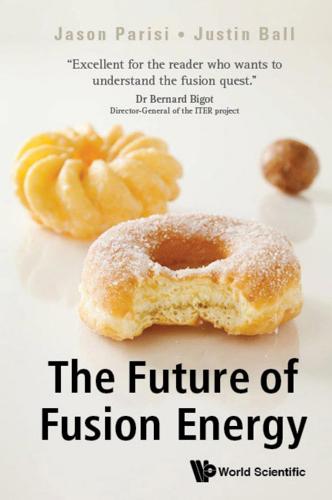
The Future of Fusion Energy
by
Jason Parisi
and
Justin Ball
Published 18 Dec 2018
Scary as it is, it is worth spending some time contemplating the actual consequences of a nuclear war. Simply put, nuclear weapons provide us with the tools to destroy modern civilization through nuclear holocaust. Even the most tepid nuclear conflict, say the detonation of 100 Trinity-scale warheads, could still cause significant global cooling. This is known as nuclear winter. Nuclear winter is caused by soot reducing the amount of sunlight that reaches the Earth’s surface — the vast majority of which is literally the ashes of the cities hit by the nukes.4 Estimates indicate that this would lead to the deaths of hundreds of millions to billions of people. A total nuclear war between the United States and Russia would almost certainly result in the majority of humanity dying within a year, although the total extinction of the human species appears much less likely.5 While there is some uncertainty in the scientific models used for calculating the effects of nuclear winter, when a large number of peer-reviewed results point to civilization-terminating effects, it would be absurd not to minimize the risk.
…
A total nuclear war between the United States and Russia would almost certainly result in the majority of humanity dying within a year, although the total extinction of the human species appears much less likely.5 While there is some uncertainty in the scientific models used for calculating the effects of nuclear winter, when a large number of peer-reviewed results point to civilization-terminating effects, it would be absurd not to minimize the risk. If the more damning research is correct, the next conflict in which nuclear weapons are used may well be our last. Such a conflict could set human civilization back for centuries, millennia, or even forever.
…
Index A agriculturalists energy sources, 4 air conditioners, 12 Al-Qaeda, 308 Alcator C-Mod, 231, 280, 301, 361 Alpha Centauri, 348 aneutronic see p-B, 292 ARC, 248 Argentina see Ronald, 179 Arkhipov, Vasili, 305 arsenals by country nuclear weapons, 304 ASDEX-U, 129, 193, 277 Aston, Francis, 177 atmospheric pollution, 238 B B-59 submarine, 305 bald spot, 103 banana orbits see super-bananas, 118, 190 baseload sources, 46 bell curve, 39, 83 Bell Telephone Laboratory, 184 Beria, Lavrenti, 189 beryllium, 162, 224, 324 Bethe, Hans, 178 Big Bang, 12 binding energy, 70–71 biomass, 35 Boeing 747 airplane, 353 Boltzmann constant, 69 bootstrap current, 189 bootstrap multiplication see bootstrap current, 254 brains, 59 bravery, 59, 335 brawn, 59 breakeven, 135 Breakthrough Starshot, 353 breeder reactors, 26, 330 fuelling proliferation, 333 bremsstrahlung see p-B, 293 burning plasma see ignition, breakeven, triple product, Lawson criteria, 136, 214 C C-2U, 278 Californium, 316 CANDU reactors, 327 capital cost, 240 carbon capture and storage, 39 Carnot limit, 31 catalyzed D–D fuel cycle, 85, 355 central solenoid, 145, 283 chain reaction, 314 chemical propulsion, 352 Chernobyl, 24 Chicago Pile-1, 311 classical transport, 123 climate change, 238–239 CNO cycle see stars, Bethe, Hans, 178 cold fusion, 77 Commonwealth Fusion Systems, 301 confinement, 82 electrostatic, 112 empirical scaling laws, 251 energy confinement time, 90 toroidal magnetic, 109 volume to surface area ratio argument, 256 conservation of momentum, 349 frozen lake argument, 350 convective eddies, 32 conventional spacecraft, 350 Coriolis force, 32 cost of electricity, 239 critical mass, 315 cross-section, 77–78 Cuban Missile Crisis, 304 current drive, 144 electron cyclotron, 152 electromagnetic wave, 150 inductive, 145 neutral beam, 148 cusp geometry see Lockheed Martin, 288 D D–3He fusion, 85, 300, 354 D–D fusion, 20, 85, 202, 301, 354 D–T fusion, 20, 83, 161, 202, 269, 281, 287, 292, 337 Darwin, Charles, 175 Debye length, 99 dense plasma focus see Lawrenceville plasma physics, 297 deuterium abundance on Earth, 22 diagnostics, 164–165 diffusion see random walk diffusion, 123 DIII-D, 277 direct drive see indirect drive, inertial confinement fusion, 272 dirty bombs, 321 dispatchable sources, 46 disruptions, 153–154, 222, 244, 267 mitigating, 155 divertor, 157, 194, 220, 256 double-edged sword nuclear energy as blueprint, 345 nuclear physics, 310 technologies, 311 E early hominids, 3 Earth–Moon system, 16, 41 Eddington, Arthur, 178 edge localized modes see ELMs, 194 Edison, Thomas, 6 electric field, 94, 150 electromagnetic force, 74 electromagnetic induction, 5, 12 electromagnetic repulsion, 67 electromagnetic waves, 269 electromagnetism, 90 electromagnets, 93 electrons, 65 in light bulbs, 6 electrostatic, 95 ELMs, 194, 222 ELMO bumpy torus, 114 empirical scaling law, 130, 251 enrichment, 333 energy conservation of, 11 flows of, 13 energy hierarchy, 58 energy storage, 50 Enola Gay, 305 entropy, 11 EPED, 197 exhaust velocity, 350 expanding electrical grids, 54 external power, 249 F Faraday, Michael, 5 Fat Man, 305 fissiled percent, 322 fertile material, 330 field-reversed configuration, 290 first wall, 153, 222 fission proliferation, 333 fission reactors, 325 climate versus nuclear security tradeoff, 335 fission–fusion hybrids, 332 flow, 197, 245 Fokker–Planck simulations see gyrokinetics, 209 formation of fossil fuels, 37 Forrest, Michael, 188–189 fossil fuels, 37 Fukushima, 24 fusion, 13, 16, 19 enrichment in fusion blanket, 337 proliferation, 336 fusion fuels, 83 fusion power density, 243 fusion reactor design, 237 disabling a proliferator, 338 small fusion system, 339 smallest planned, 159 timescale for blanket proliferation ramp-up, 340 fusion thruster, 354 G gas centrifuges, 318 gaseous diffusion, 317 General Atomics, 198, 279 General Fusion, 284 geopolitics, 343 geothermal, 16, 27 global zero, 343 gravitational confinement, 89 gravity, 13, 89 gravity-assist, 351 Greenwald limit, 251 gun-type bomb, 323 gyrokinetic simulations, 252 gyrokinetics, 206, 252 scale separation, 207 gyroradius, 92 H H-mode, 130, 193, 206, 252 hairy ball theorem, 103 Halite-Centurion, 274 half-life, 20 Harwell, 187 heat death of the Universe, 12 heat flux, 221 heating, 14, 218 electron cyclotron, 152 ion cyclotron, 152 heavy element synthesis, 15 heavy elements, 16 heavy water reactors, 327 Heisenberg’s Uncertainty Principle, 79 Helion Energy, 300 heliotron, 114 helium-3 abundance, 354 hex, 317 Hiroshima, 322, 336 hohlraum see inertial confinement fusion, 272 hydroelectric, 39 hydrogen bomb, 89, 304, 324 hydropower, 17 I IAEA, 334, 339 ignition, 131, 250, 269 MCF and ICF ignition differences, 274 implosion bomb, 323 inboard see torus terminology, 110 indirect drive see direct drive, inertial confinement fusion, 272 inductive heating, 147 Industrial Revolution, 4 inertial confinement fusion, 269 weaponization propspects, 271 intercontinental ballistic missiles see ICBM, 309 intercontinental electrical grids, 55 Intergovernmental Panel on Climate Change, 9 internal transport barriers see pedestal, 196 intermittency, 30, 46 INTOR, 225 IPA, 278 Iron Curtain, 181 isotopes, 20, 73 isotope effect, 204 isotopic semantics, 73 ITER, 137, 203, 211, 237, 248, 257, 273, 302, 353, 361 ignition, 214 Q, 213 strategy, 216 Ivy Mike, 304 J JET, 140, 155, 169, 198, 200, 260, 273, 277 jet engine, 349 JT-60, 260 JT-60SA, 140, 169, 361 JT-60U, 140, 277, 361 Juno spacecraft, 347 K K-DEMO, 361 Kelvin, Lord, 177 Khrushchev, Nikita, 187 kink limit, 246 Kremlin, 186 Kurchatov, Igor, 188 Kurchatov Institute, 185 L L-mode, 193, 252 Lamb, Horace, 127 Landau energy levels, 298 Landau damping, 151 Landau, Lev, 151 Langmuir, Irving, 165 Langmuir probes, 165 laser enrichment, 320 lattice structure, 156 Lavrentyev, Oleg, 186 Lawrenceville Plasma Physics, 296 Lawson criterion see triple product, 131, 324 Lawson, John, 131 levitated dipole, 114 limiter see divertor, 157, 194 linear magnetic, 100 lithium, 21, 242 lithium pebbles, 163 lithium-6, 84, 161 lithium-7, 161 lithium-ion batteries, 22, 51 Little Boy fissiled percent, 322 Lockheed Martin, 287 Lufthansa Flight 181, 199 M magnet(s), 139 permanent, 93 magnetic confinement fusion, 247 magnetic field, 91, 150, 247 magnetic islands, 117, 265 magnetic mirror, 100, 355 magnetic surfaces, 114, 144, 158, 191, 265 open versus closed, 158 magnetized target fusion see MTF, 284 magnetohydrodynamics see MHD, 121 Manhattan Project, 318 Mars, 347 mass–energy equivalence, 77 material survivability, 255 matter–antimatter annihilation, 352 mechanical stress, 142, 283 Mercury, 181 Mercury laser see NIF, 276 messy engineering endeavor, 259 MHD, 209, 246 MHD stability, 153 mini-golf, 68 Mini-Sphere, 278 MIT, 301 Model C stellarator, 189 moderator, 326 Moore’s Law see triple product, 136, 205 MRI machines, 140 MTF, 284, 300 Munich, 199 N Nagasaki, 305, 322 neoclassical transport, 126, 265 net electric power, 241–242 net electricity, 169 neutral beam, 220 negative ion acceleration, 220 neutral beams, 291 efficiency, 149 neutron capture cross-section, 331 neutron flux, 156 neutron multiplication, 224 neutron multiplication factor, 162 neutron multipliers, 162 neutron shielding, 292 New York Times, 180 NIF, 273, 336 niobium–titanium, 184 niobium–tin, 184, 248 Nixon, Richard, 224 Nobel Peace Prize, 186 Nobel Prize, 183 non-inductive see current drive; neutral beam, 149 non-renewable, 19 North Korea, 339 nucleons, 65 nuclear energy transition, 341 nuclear fission, 16, 23 nuclear proliferation, 238, 359 nuclear potential, 66 nuclear security, 336 nuclear weapon, 303 boosted implosion bomb, 323 defenses, 309 gun-type bomb, 322 hydrogen bomb, 323 implosion bomb, 322 inspectors, 340 neutron initiator, 324 proliferation with increased tritium availability, 342 significant quantity, 334 tamper, 322 Teller–Ulam design, 325 weapon designs, 321 yield, 303 nuclear winter, 308 O ocean waves, 44 Onnes, Heike, 181 outboard see torus terminology, 110 Oxford, 199 P p-B fusion, 290 particle drifts, 104 E × B drift, 106, 128 B drift, 106, 194 curvature drift, 106 Pauli exclusion principle, 183 pedestal, 193 Pelamis, 46 Perhapsatron, 114, 181, 285 photosynthesis, 35 plasma, 86 plasma current, 114, 264 maximization, 246 plasma flow, 197, 245 plasma gain, 169 plasma heating, 144 plasma power engineering multiplication factor, 170 plasma power multiplication factor, 135 plasma pressure, 244 plasma shaping, 198 Pluto, 321, 347 plutonium, 90 plutonium-239, 25 production, 320 reactor-grade, 329 weapons-grade, 321 poloidal field coils, 144 poloidal see torus terminology, 110 polonium-210, 162 power multiplication, 170 Princeton, 189, 198 Princeton University, 180 profits, 238 proliferation, 333 propellant, 349 proton–proton chain see CNO cycle, stars, Bethe, Hans, 179 proton–proton fusion, 28 public relations, 359 pure fission weapons, 325 Q quasineutrality, 97–98, 150 R radioactive waste, 167 random walk diffusion, 123 rate of energy consumption, 18 Rayleigh–Taylor instability, 271, 285 remote maintenance system, 204 renewable, 19, 57 resistivity, 141 Richter, Ronald, 179, 187 right-hand rule, 93 robotic maintenance, 169, 257 rocket equation, 351 role model effect of fusion technology, 344 S safety factor, 115 Sakharov, Andrei, 186 Saturn, 347 scattering collision, 67 scientific notation, 26 seasonal energy storage, 52 Seebeck effect, 6 seeds, 35 shaping, 198 D-shape, 198 shattered pellet injection see disruptions, 156 significant quantity, 340 solar, 16, 28 Solar System, 17, 348 energy flows, 15 space capsules see divertor, 160 space colonization, 349 SPARC, 301 spent fuel current world production, 334 spherical tokamaks, 281 spheromak, 114, 287 Spitzer, Lyman, 113, 180, 263 ST40, 278 Stalin, Joseph, 187 stars, 175 possible fusion reactions, 178 red giant phase, 15 steam engine, 4 steam turbine, 6 stellarator(s), 114, 263 ignited, 267 stochastic regions, 117, 265 strong nuclear force, 66 Sun, 347 lifetime of, 176 super-bananas see banana orbits, 118 super-duper H-mode, 259 supercomputers, 204 superconductivity, 141, 181, 248 Cooper pairs, 183 type I, 184 type II, 184 superconductor, 283 high-temperature, 185, 283, 301 REBCO, 186 materials, 182 problem with neutrons, 163 supernovae, 14–15 surface-to-air missiles, 309 Sword of Damocles, 306 Symmetric Tokamak, 189 T T-1, 188 T-3, 113, 189, 263, 278 T-7, 185 T4, 278 TAE Technologies, 280, 290 Tamm, Igor, 186 TCV, 201, 280 technetium, 24 temperature, 83 TFTR, 203, 277 tritium detection, 339 thermal equilibrium, 82 thermodynamic efficiency, 31 thermonuclear bomb see nuclear weapons — hydrogen bomb, 324 thermotron, 180 Thor, 110 Thomson scattering, 166 thorium, 321 Three Mile Island, 24 tidal, 16, 41 TNT, 304 toast making of, 7 tokamak, 113 Tokamak Energy Ltd., 281 Tore Supra, 141 toroidal torus terminology, 110 toroidal field, 140 toroidal field coils, 198 toroidal symmetry, 264 torsatron, 114 torus, 104 torus terminology, 110 trapped particles, 118 TRIAM-1M, 185 Trinity, 303, 344 triple product, 135, 267 tritium, 20, 161, 338 cost, 202 current reserves, 341 detecting use in fusion reactor, 339 increased availability proliferation risk, 342 tritium breeding, 215 tritium breeding blanket, 160, 247 Troyon limit, 243, 282 game of chicken, 244 violation, 245 Tsar Bomba, 304 Tuck, James, 181 tungsten, 224 turbulence, 206, 255 turbulent eddy, 128, 197 turbulent transport, 126 U U.S.S.
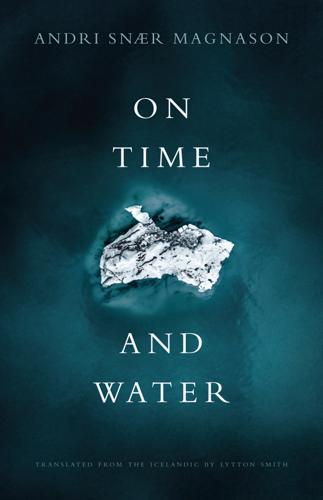
On Time and Water
by
Andri Snaer Magnason
Published 15 Sep 2021
I remembered a line from Hindu scripture, the Bhagavad Gita: Now I am become Death, the destroyer of worlds.26 My generation had recurring nightmares about Oppenheimer’s discovery. Were our worries unnecessary? Or were the worries the reason the world had survived? I was brought up with photos of Hiroshima, and the terms “nuclear winter” and “nuclear fallout” hung over my childhood like dark clouds. These words were charged, fully so; there was no buzz in them, no white noise. And now scientists have drawn up new horror scenarios about the consequences of a three-to-five-degree rise in Earth’s temperature. The Earth has abandoned geological speed; it is changing at human speed.
…
We hold a conference to determine the location for the next conference. Perhaps this increase does not contain enough of a sense of urgency, a fast-enough rate of change, not compared to sudden flashes and shock waves. We look quite calmly up at a slowly developing disaster. “Global warming” sounds totally different from “nuclear winter.” A few more forests burn here, a little more heat there, things even improve a bit for a little while—until suddenly a thousand-year flood rushes down on the calmly rising sea level, with slowly expanding deserts and slightly stronger hurricanes. All the while, the dying out of one species or another ceases to be newsworthy.
…
But now the astonishing rate of change in the ocean’s acidification has come to our attention.52 To prevent global warming of 1.5 degrees Celsius, the calculations suggest humans have a maximum aggregate “budget” of three hundred to eight hundred gigatons of CO2 emissions.53 Assuming thirty-six gigatons as the annual emission rate, our quota will be exhausted after less than twenty years. After that, we mustn’t release anything. But as things stand today, we’re headed for a three-to-four-degree rise in Earth’s temperature by the century’s end. Such warming is on the same scale as a nuclear winter. Rising temperatures will increase the forces of hurricanes and storms, leading to more extreme climate scenarios, including droughts and floods that damage crops and wash away arable land. Refugee migrations will likely increase from uninhabitable parts of Africa, China, India, and the Middle East; forests in Australia, America, the Amazon, and the Nordic countries will erupt into flame; the Siberian permafrost will thaw and release methane gas, and this will increase the pace of global warming still further.

Command and Control: Nuclear Weapons, the Damascus Accident, and the Illusion ofSafety
by
Eric Schlosser
Published 16 Sep 2013
Carl Sagan conjured an even worse environmental disaster: Sagan became concerned about the atmospheric effects of nuclear war in 1982, and it seems almost quaint today—as global warming looms as a pending threat—that a generation ago Americans worried that the world might get dangerously cold. But the threat of a nuclear winter never went away. And recent calculations suggest that the detonation of fifty atomic bombs in urban areas would produce enough black carbon smoke to cause another “Little Ice Age.” For the summation of Sagan’s work on the issue, see Carl Sagan and Richard Turco, A Path Where No Man Thought: Nuclear Winter and the End of the Arms Race (New York: Random House, 1990). For the latest findings on the global environmental impact of a nuclear war, see Alan Robock, “Nuclear Winter Is a Real and Present Danger,” Nature, vol. 473 (May 19, 2011).
…
He called for the abolition of nuclear weapons, offered a chilling description of what a single hydrogen bomb would do to New York City, and presented the latest scientific evidence on how nuclear detonations could harm the ozone layer of the earth’s atmosphere. Later that year the astronomer Carl Sagan conjured an even worse environmental disaster: nuclear winter. The vast amount of soot produced by burning cities would circle the earth after a nuclear exchange, block the sun, and precipitate a new ice age. Sagan warned that the effects of nuclear winter would make victory in a nuclear war impossible; a nation that launched a first strike would be committing suicide. On June 12, 1982, perhaps three quarters of a million people gathered in New York’s Central Park, demanding a different kind of freeze—a worldwide halt to the production of nuclear weapons.
…
“Through the Nuclear Strategic Looking Glass, or Reflections off the Window of Vulnerability,” Journal of Conflict Resolution, Vol. 31, No. 4, 1987, 725–37. Ralph, William W. “Improvised Destruction: Arnold, LeMay, and the Firebombing of Japan,” War in History, Vol. 13, No. 4, 2006, 495–522. Robock, Alan. “Nuclear Winter Is a Real and Present Danger,” Nature, Vol. 473, May 19, 2011, 275–76. Roman, Peter J. “Ike’s Hair-Trigger: U.S. Nuclear Predelegation, 1953–60,” Security Studies, Vol. 7, No. 4, 121–64. Rosenberg, David Alan. “American Atomic Strategy and the Hydrogen Bomb Decision,” Journal of American History, Vol. 66, No. 1, June 1979, 62–87. _____.
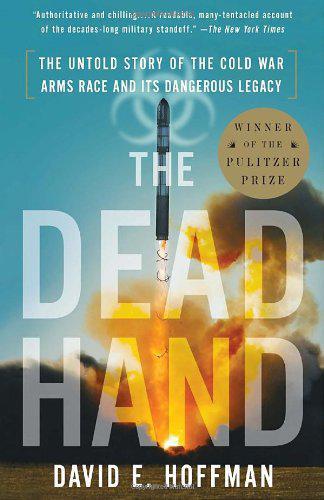
The Dead Hand: The Untold Story of the Cold War Arms Race and Its Dangerous Legacy
by
David Hoffman
Published 1 Jan 2009
Willens had fled the Soviet Union with his parents when he was eight years old and settled in Los Angeles, where he became a successful businessman. 8 See "Memorandum of Conversation," meeting with British Prime Minister Margaret Thatcher, Dec. 22, 1984, Camp David. http://www.margaretthatcher.org. 9 Gorbachev, interview, June 30, 2006. 10 In the Dec. 23, 1983, issue of Science, two articles by teams of scientists argued that a nuclear war would have devastating environmental and ecological effects on the globe. In January 1984, a Vatican working group issued a report describing nuclear winter. "Nuclear Winter: A Warning," Pontificiae Academiae Scientiarvm Docvmenta, 11, Jan. 23-25, 1984. Among the scientists who participated was Yevgeny Velikhov, who became a key adviser to Gorbachev. 11 Thatcher interview with John Cole, BBC, Dec. 17, 1984. 12 See www.margaretthatcher.org. 13 Memorandum of conversation, Dec. 22, 1984. 14 Gorbachev's maternal grandfather had become a supporter of the Bolsheviks because the family was given the land they worked on after the revolution.
…
When Robards urges a pregnant woman who survived the blast to have hope, she retorts, "Hope for what? We knew the score, we knew all about bombs and fallout, we knew this could happen for forty years and no one was interested! Tell me about hope!" The film highlighted many of the fears of the day about nuclear war. It called attention to nuclear winter--that after a nuclear blast, the climate would change and snow would fall in summer. In his diary, Reagan wrote: Columbus Day. In the morning at Camp D. I ran the tape of the movie ABC is running on the air November 20. It's called "The Day After." It has Lawrence, Kansas wiped out in a nuclear war with Russia.
…
Even as he unfolded the paper with all the squares and dots in front of Thatcher, he had no idea how to reduce the nuclear arsenals. He wondered, "How could all of it be stopped?" Thatcher wasn't impressed with the Gorbachev diagram, but remembered he carried off the presentation with "a touch of theatre." Gorbachev also warned of the dangers of a "nuclear winter" that would follow a war with atomic bombs.10 But Thatcher said, "I was not much moved by all this." She responded with a heartfelt lecture on the virtues of nuclear deterrence: the weapons, she said, had kept the peace. This was one of her core beliefs. Thatcher was "eloquent and emotional," Gorbachev remembered.
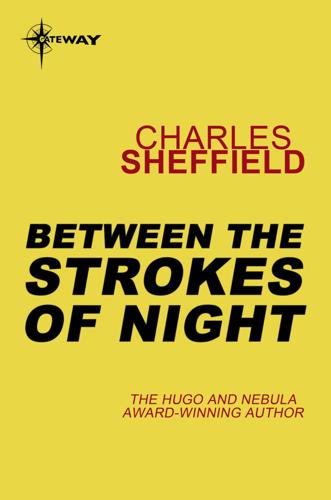
Between the Strokes of Night
by
Charles Sheffield
Published 28 Apr 2013
The science ought to be consistent with what we believe to be true today. No swamps on Venus, no canals on Mars, no anti-gravity machines; but dinosaur extinction through meteorite impact, and braided rings around Saturn, and the Oort Cloud, and an Earth that might possibly be subject to global warming and nuclear winter. Now, in the past few years our view of the universe as a whole has changed radically. Fifteen years ago, a writer could be comfortable with one of three plausible choices: the universe was expanding, and the expansion would never slow down; or, second choice, the universe was expanding, but the expansion would proceed slower and slower, to produce a universe that was ultimately flat in a geometrical sense; or, the third alternative, the universe was expanding, but would eventually stop that expansion, reverse direction, and ultimately collapse back again in a “Big Crunch” fireball beyond which no information from our present universe could possibly survive.
…
And there was no chance that they would choose to live on Earth, even if it were to be colonized again in the near future. Pentecost was more beautiful in every way. They left the information service on all the time. It described a link between the old, fertile Earth of legend and the present wilderness. The post-nuclear winter had been the first cause of the trouble. It was far more influential as an agent of change than the Ice Age that now held Earth in a frozen grasp. Immediately after the thermonuclear explosions, temperatures below the thick clouds of radioactive dust dropped drastically. Plants and animals that fought for survival in the sunless gloom of the surface did so in a poisoned environment that forced rapid mutation or extinction.
…
Some of them were totally vegetarian, browsing on the sparse, chlorotic plant life that still grew in the dust-filtered twilight. They developed thick layers of blubber, for food storage and insulation. The other survivors became super-efficient predators, preying on their herbivorous relatives. As the nuclear winter slowly ended the insects moved north and south again, away from the tropics. But the mutated mice and woodchucks were ready for them. They had increased in size and ferocity, to become a match for any pre-civilization wolf; and now they wore thick coats of fur and protective fat that rendered impotent the fierce mandibles and poison stings.
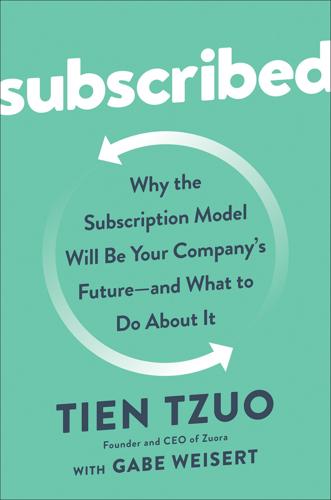
Subscribed: Why the Subscription Model Will Be Your Company's Future - and What to Do About It
by
Tien Tzuo
and
Gabe Weisert
Published 4 Jun 2018
The other option was to double down on Creative Suite and turn Adobe’s core franchise into something that could embrace both worlds, which meant continuous innovation, digital services, and lower monthly costs in order to organically increase the user base. Mark Garrett’s pitch for Adobe’s shift to subscriptions during that November 2011 meeting was informed and methodical. The next day the stock tanked (though not as much as Adobe’s management feared it might). SOFTWARE’S NUCLEAR WINTER Today the technology industry is a $3 trillion juggernaut, growing at a healthy 4 percent clip. VC funding is at a decade high, with roughly $84 billion invested in 2017, a one hundred percent increase from 2007. And while those numbers are starting to approach the dizzying highs of the dot-com era, this time the vast majority of the investment volume is driven by the late-stage funding rounds of established companies with solid fundamentals.
…
, but technology is undoubtedly a growing, vibrant, and increasingly diverse industry. But it didn’t always used to be this way! Ten to fifteen years ago, Adobe wasn’t the only software company in the doldrums. Growth across the entire industry was flat or down—the 2001 crash wiped out a decade of gains, and there was talk of a “Software Nuclear Winter.” Multibillion-dollar companies like Siebel were being acquired or went out of business. Venture capitalists refused to fund new software start-ups. Tumbleweeds were rolling down Sand Hill Road (metaphorically, anyway). Wall Street declared that the industry had permanently matured and that firms should start paying out dividends like (gasp!)
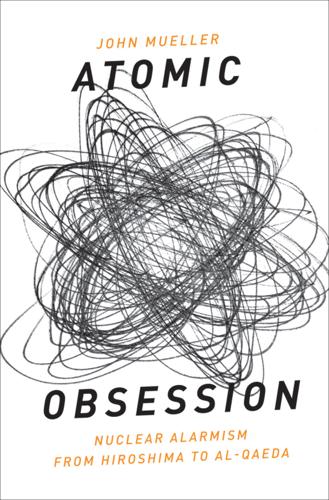
Atomic Obsession: Nuclear Alarmism From Hiroshima to Al-Qaeda
by
John Mueller
Published 1 Nov 2009
Depending on the extent of the attack, these effects could also have widespread and longer-term consequences, potentially leading to famine, epidemics, and societal disruptions or even breakdown. In addition, some scientists have controversially argued that the smoke and debris lofted into the atmosphere by an attack with thousands of large bombs might well block the sun’s rays for a considerable period of time, leading to a “nuclear winter” that would have devastating long-term consequences not only for the bombed country but for the world at large, or at least for the northern hemisphere.14 All-Out Thermonuclear War To begin to approach a condition that can credibly justify applying such extreme characterizations as societal annihilation, a full-out attack with hundreds, probably thousands, of thermonuclear bombs would be required.
…
In this extreme scenario, the study calculates—or, to use its word, speculates—that something like 20 to 55 million would likely perish in the lowest set of estimates, and between 155 and 165 million in the highest. And there would also be, needless to say, catastrophic negative societal aftereffects.16 The study concluded as well that under either attack scenario, there could be considerable ecological impact—including, potentially, a nuclear winter effect—that could conceivably be as devastating in the long run as the attacks themselves.17 Hiroshima and Nagasaki An examination of the destruction wreaked by the atomic bombs that were exploded by airburst over the Japanese cities of Hiroshima and Nagasaki in the last days of World War II is particularly useful for present purposes.
…
See also overstatement alarm, 162 all-out thermonuclear war, 8–9 atomic theater, 69–70 blast, 5 “certainty,” ix–x contamination, 6 deterring potential attack, 143 direct radiation and nuclear bomb, 4 disadvantages to acquiring, 103 economic and organizational cost, 110–112 ego trip, 143 electromagnetic pulse, 4 enhancing appeal, 143–149 existence of, and security, 251n.26 fallout, radiation and “dirty bombs,” 5–7 groundburst Hiroshima-size device, 10–11 Hiroshima and Nagasaki, 9–10 historical impact, 236–237 horizontal proliferation, 73 hostility, 25–26 indirect and longer-term effects, 8 influence on history, xii lacking technological imperative, 104–105 military attacks, 147 military value, 108–110 overstatement, 27–28 overstating importance of existence, 23 proliferation, 237 sanctions, 145–147 spread within and to states, xii–xiii status effects, 147–149 status symbol, 105–108 taboo, 61–63 thermal pulse of heat and light, 5 threats, 144–145 United States and USSR freezing programs, 79 vertical proliferation, 73, 76 weapons designers, 167 weapons of mass destruction (WMD), 11–13 WMD and battlefield messiness, 14–15 nuclear weapons laboratories, 266–267n.43 nuclear weapon state, definition, 148–149 nuclear winter, nuclear attack, 8 Obama, President B., potential atomic bomb, x–xi obsession, ix, xiii, 237, 237 Office of Technology Assessment, sarin, 12 oil shocks, American politics and security, 139–140 Oklahoma City, truck bomb, 19 Olympics, China’s quest to host, 108 Omar, Mullah, Taliban leader, 211 On the Beach, nuclear fears, 57 Oppenheimer, J.
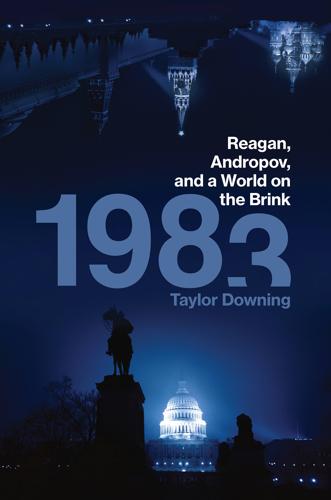
1983: Reagan, Andropov, and a World on the Brink
by
Taylor Downing
Published 23 Apr 2018
And it climaxes with a night on which the Soviet nuclear arsenal was put on to maximum alert, when missiles were deployed to action stations in submarines and mobile launchers, when aircraft were put on stand-by and when silo commanders were preparing to launch dozens of missiles each one of which had hundreds of times the explosive yield of the Hiroshima bomb. If these missiles had been fired it would have prompted a nuclear exchange that would have destroyed much of North America, most of Asia, probably all of Europe. The fallout would have brought down a nuclear winter that would have covered Earth for years or decades to come. The death toll would have been counted in the hundreds of millions, dwarfing every conflict in human history. This is the story of the time when fingers really did hover over the nuclear button, when the world really was ‘a button push away from oblivion’. 1983: Reagan, Andropov, and a World on the Brink aims to create a new and accessible narrative about what President Reagan called the ‘really scary’ events of that year.
…
Tens of millions of Soviet men, women and children would have perished. Hundreds of millions more around the world would have lost their lives as a consequence of the nuclear radiation that would be scattered across continents, carried by winds and rain, and countless millions more as a result of the starvation and chaos that would follow in what was called the ‘nuclear winter’. It would not only have been the end of human civilisation but probably the end of most forms of life on Earth. Some people believe that only the cockroach and the scorpion would have survived. 16 Night On the evening of Wednesday, 9 November 1983, everything came to a head. In their bunker in Mons, NATO commanders reached the most dramatic phase of their war game: they received the message that their request to launch 350 nuclear weapons against targets across the Soviet Union and the Eastern bloc had been given approval by their respective political leaderships.
…
Edgar 24 House Un-American Activities Committee (HUAC) 24 Howe, Sir Geoffrey 211, 218, 259, 270, 271, 272, 288 Hubbard, Carroll 149 human intelligence (HUMINT) operations 82 human rights issues 14, 48–9, 114, 270, 303, 306, 313, 314, 322 Hungary 42, 264 Hungarian Revolution 43–4 political reforms 328 HVA 128, 129, 130, 131, 133, 134, 135, 251–2, 253, 336 and Operation RYaN 85–6 hybrid warfare 342 Ikle, Fred 142 India, nuclear arsenal 343 intercontinental ballistic missiles (ICBMs) 9, 12–13, 34, 53, 60, 194, 198, 239, 313 Intermediate Nuclear Force (INF) Treaty 320, 321–2, 333 verification processes 322 intermediate-range ballistic missiles (IRBMs) 13 Iran 209 Iranian Revolution 29, 202 Tehran embassy hostage crisis 20, 29 Iran-Contra scandal 319–20 Iraq, US military incursions 342, 343 Irgun 203 Iron Curtain 23, 24, 332 Islamic fundamentalism 76, 202, 209, 323 Israel Israel Defence Forces (IDF) 203–4, 205, 206–7 Israeli Air Force 205 nuclear arsenal 343 Israeli-Palestinian conflict 202–9 Ivy League 82 exercise 59, 61–3, 97 Japan Hiroshima and Nagasaki 1–4, 93 listening stations 161–2, 183 Joan (MI6 case officer) 121–2, 291 John Birch Society 149 Johnson, Lyndon B. 26 Jones, General David 56 Jones, Nate 348–9 Kádár, János 43 Kalinin 159 Kalugin, Oleg 85, 240 Kamchatka peninsula 136, 138, 139–40, 155, 156, 157, 158, 159, 160, 168, 180, 183 Kardunov, Marshal Alexandr 163 Karelian Republic 40–2 Kazakhstan 5, 333, 334 KC-135 tanker aircraft 191 Kennedy, John F. 10, 11, 320 Kennedy, Robert 114 KGB 43, 45–7, 49, 338 and the Able Archer 83 exercise 250–1 Andropov as head of 35, 45, 46–7, 48, 69, 74, 80, 83, 106, 341 directorates 73 First Chief Directorate (FCD) (Foreign Intelligence) 73–4 foreign residencies 46, 81, 118–20, 122–5, 218, 227, 228, 277, 278, 279 intelligence successes 125–8, 134–5 moles within see Gordievsky, Oleg; Martynov, Valery; Vetrov, Captain Vladimir role 45–6, 70 see also Operation RYaN Kharbarovsk 161, 163, 164 Khomeini, Ayatollah 29, 202 Khrushchev, Nikita 9, 10, 42, 43, 45 Cuban missile crisis 11, 114 denounces Stalin 42 Kim Eui-dong 150, 152 Kirghizia 333 Kirkpatrick, Jeane 183 Kissinger, Henry 99, 114 Kline, Major John 56 Kohl, Helmut 319 Korean Air Lines (KAL) Flight 007 149–56, 157–88, 165 downing of 157–69 intelligence community’s verdict on 187 Soviet defence of action 181–2, 183–5, 186–7, 216 Soviet propaganda disaster 176–7, 180 US response 169–79, 187–8 Kosygin, Aleksei 68–9 Kremlinologists 37, 214 Kryuchkov, Vladimir Aleksandrovich 74, 75, 80, 127, 229, 255, 279, 281, 282, 333 Kuklinski, Colonel 110–11 Kulikov, Marshal Viktor 248 Kuntsevo Clinic 234–5, 236, 242, 250, 255, 275 Kurchatov, Igor 5 Kurile islands 136, 139, 155, 171, 187 labour camps 46 Lang, Admiral 137 Laos 29 Latvia 329 Launch Under Attack option 15, 60, 238–9 Leahy, Patrick 176 Lebanon 202–9, 220 Israeli bombardment of Beirut 205–7, 228 Israeli invasion of 203–4 Multinational Force 206, 207, 208, 209 UN peacekeepers 203 Lee Kuan Yew 259 LeMay, General Curtis 8 Libya 110, 310 limited nuclear war concept 10, 15, 55, 88, 343 Line X operation 123, 143, 144, 285 listening stations 163–4, 168, 170, 176, 183, 217, 227, 231, 267–8 lithium H-bomb 7–8 Lithuania 329 Lockheed 54 Lokot, Sergei 246–7 Los Angeles Olympic Games (1984) 268 Lubyanka 46, 284 M-1 Abrams Main Battle Tank 53 McDonald, Larry 149–50, 171 McFarlane, Robert ‘Bud’ 208–9, 262, 297, 320 and Able Archer exercise 231, 260, 261, 265–6 and SDI 99, 100 McNamara, Robert 12 malware 144–5 Manchuria 4, 330 Mao Zedong 44–5 Martynov, Valery 285–6 Marxism-Leninism 36, 45, 50, 65, 69, 71, 134 maskirovka 160, 227, 253 Massive Retaliation doctrine 8, 9, 10 Matlock, Jack 312 Mauroy, Pierre 37 Meese, Edwin 32, 169 MI6 (British Secret Intelligence Service) 110, 121, 122, 126, 281, 336 exfiltration of Oleg Gordievsky 286–92 MiG 204, 205 MiG-23 248 military-industrial complex 74, 303, 310 Minsk 138 Minuteman missiles 195 Misawa 162, 170, 171, 172 missile silos 13, 194, 195, 200, 239, 242–3 Mitterrand, François 143 Moldavia 333 Mondale, Walter 269 Mons 223–4, 225, 229, 250, 256 Moorestown 193 Morrow, Douglas 91 Moscow Olympics (1980) 30, 49, 268 Moscow summit (1988) 323–5 Mozambique 29 Mujahideen 76, 77, 110, 310, 323 multiple independently targetable re-entry vehicles (MIRVs) 12, 242, 244 Munich Olympic Games (1972) 203 Murmansk 126 Mutual Assured Destruction (MAD) 12, 13, 15, 17, 63, 93, 97, 103, 114, 344 MX missiles 53, 98, 99 Nagasaki, bombing of (1945) 4, 93 Nagy, Imre 43 Nakasone, Yasuhiro 183 National Association of Evangelicals 66 National Command Authority 241 National Emergency Airborne Command Post (Boeing 747) 59, 61 National Intelligence Council 269 National Military Command Center 61, 91, 193 National Security Advisors 189, 309, 320 National Security Agency (NSA) 141, 156, 161, 187, 258, 299 expansion of 54–5 National Security Archive (NSA) 17, 348–9, 350 National Security Council 144, 145, 208, 209, 231 NATO 55, 82, 86, 88, 100, 124, 126, 127, 130, 131, 140, 318, 320 Abel Archer 83 exercise 222–56, 344 Allied Command Europe (ACE) 222 Autumn Forge 83 exercises 223 Current Intelligence Group 131 East German agent in 130–5 MC 161 document 132–3 Political Affairs Directorate 131 response to SDI 134 neo-Nazis 129 Nicaragua 29, 70, 319, 323 Contras 110, 319–20 Nicholson, Major Arthur 295–6 Nine Lives exercise 61, 63 9/11 241 1983–The Brink of Apocalypse (documentary) 346 Nitze, Paul 313 Nixon, Richard 32, 114, 298, 320 anti-ballistic missiles (ABM) Treaty 92 signs Strategic Arms Limitation Treaty (SALT I) 13 Watergate 14, 28, 74 NKVD 5 nomenklatura 70, 220 North American Air Defense Command (NORAD) 90–1, 145, 189, 190, 193 North Korea 4, 44 nuclear capability 343 North, Lieutenant-Colonel Oliver 320 Norway 126, 127 intelligence service 157 Norwegian Labour Party 127 nuclear accidents 190–2 Chernobyl nuclear disaster 310–11 nuclear arms race 6–9, 12–13 nuclear arsenal 200 Soviet 223 US 8 nuclear ‘football’ system 55–6, 240–1 Nuclear Freeze peace movement 96, 103 Nuclear Non-Proliferation Treaty 13 nuclear war Counterforce strategy 10 Defense Readiness Condition (DEFCON) 204, 230 false alerts 189–201, 239 Launch Under Attack option 15, 60, 238–9 limited nuclear war 10, 15, 55, 88, 343 Massive Retaliation doctrine 8, 9, 10 Mutual Assured Destruction (MAD) 12, 13, 15, 17, 63, 93, 97, 103, 114, 344 probable consequences 8, 60, 63, 68, 248–9 protocols for launching nuclear weapons 10, 15–16, 55–6, 62–3, 240–1 simulated nuclear attack 61–2 Withhold Options 60 nuclear war scare (1983) 344 Able Archer 83 exercise and 222–56, 344 CIA report on 339–40 Soviet arsenal on maximum alert 16, 240, 242, 243–9, 255, 257, 307 Soviet paranoia and miscalculation 16, 224, 227–9, 232–3, 239, 240, 242, 250–1, 254, 256, 258–61, 344 nuclear winter 16, 249 Nyerere, Julius 259 Obama, Barack 256, 343 observation satellites 90, 111, 194–5, 196, 248, 256 October War (1973) 204, 230 Odom, William 189 Office of Strategic Services (OSS) 107 Ogarkov, Marshal Nikolai 73, 183–4, 184, 198, 236, 241, 245, 250, 255 oil and gas pipelines 65, 143, 145, 285 Okinawa 138 Oko satellite network 194–5 O’Malley, General 173 ‘open labs’ proposal 304, 314 Operation Barbarossa 80–1, 247 Operation Chrome Dome 190–2 Operation RYaN 80, 81–7, 88, 105, 118, 124–5, 216, 217–18, 227, 228–9, 237, 251, 255, 257, 340 categories of intelligence 81–2 confirmation bias 81, 86 information processing 83–4 spurious reports 81, 84, 86, 124–5, 227–8, 250–1 Organisation of Eastern Caribbean States 210 Ossipovich, Major Gennady 162–3, 164–7, 168, 178, 184–5 Pakistan, nuclear arsenal 343 Palestine Liberation Organisation (PLO) 203–4, 205, 206 Palestinian-Israeli conflict 202–9 Palmerston, Lord 273 Palomares incident (1966) 191–2 Parr, Jerry 56–7 Partial Test Ban Treaty 13 peace movement 66, 95–7, 96, 103, 123–4, 237 Pelše, Arvids 214 Pentecostal Christians 59, 116 perestroika 311, 325, 329 Perroots, Lieutenant-General Leonard 253–5 Pershing II missiles 14, 53, 78, 79, 88, 94, 95, 123, 135, 216, 220, 239, 258, 270, 299, 309, 319, 321 Petropavlosk 138, 158 Petrov, Lieutenant-Colonel Stanislav 195–200, 239 Pfautz, Major General James 172–3 Phalangist militiamen 207 Philby, Kim 278, 292 PL-5 missiles 157 plutonium implosion bomb 4, 6 Podgorny, Nikolai 69 Poindexter, Admiral John 320 Poland 65, 94 political reforms 328 popular protests 42–3 Solidarity 65, 110, 111, 328 Polaris 13 Politburo 34, 47–8, 64, 70, 76, 78, 181, 214, 215, 236, 255, 264, 275, 312, 317, 319 Prague Spring 47 President’s Foreign Intelligence Advisory Board (PFIAB) 339, 349–50 protective missile system see Strategic Defense Initiative (SDI) psychological operations (PSYOPS) 139–43, 147, 162, 182, 187, 310, 340 Putin, Vladimir 341 Pym, Francis 37 radiation sickness 3–4, 249 radioactive contamination 192 RAF Lakenheath 190 Ramstein Air Force Base 253 RAND Corporation 12 RC-135 spy planes 140–1, 156–7, 170, 178, 182 Reagan, Nancy 19, 25, 32, 66, 114, 302, 306 Reagan, Ronald 108 and Able Archer 83 exercise 231–2, 261, 262, 263, 265–6 anti-communism and anti-Soviet rhetoric 23, 24, 25, 26, 30–1, 51–2, 64–7, 77–8, 93, 94–5, 110, 114–15, 116, 177, 182, 216, 266 appearance and personality 21, 22, 33 approval ratings 28, 97, 265, 323 approves technological sabotage 144 attempted assassination of 56–8 background of 20–2 belief in personal diplomacy 51, 93–4, 268 ‘bombing Russia’ poor-taste joke 267–8 and Brezhnev 59 Cold War warrior 31, 267, 321 on the decision to launch nuclear weapons 15–16 demands Berlin Wall be pulled down 321 diary entries 64–5, 98, 99–100, 102, 116, 206, 262, 268, 294, 308 and the downing of KAL 007 169, 174, 177, 178, 179, 182, 188 economic policies 27–8, 31 elected President 15, 31–2 ‘evil empire’ rhetoric 66–7, 89, 117, 176, 182, 216, 324 film career 22, 25–6, 301 Geneva summit 297–9, 300–9, 305 Governor of California 27–8 ‘Great Communicator’ 268 and human rights issues 114, 270, 303, 306, 313, 314, 322 and invasion of Grenada 210, 211, 212 and Israeli-Palestinian conflict 202–9 leadership style 27 and Margaret Thatcher 211–12 meets Gordievsky 337, 337 Moscow summit 323–5 and nuclear policy 51, 58–9, 63–4, 91–3, 97–101, 103–4, 114, 261 political philosophy 22–3, 26 populism 19, 27, 33 president of Screen Actors Guild 24, 25 presidential inauguration 19–20, 21, 32–3 protocol for launching nuclear weapons 55–6, 62–3 re-election 265, 266–7, 269 Reykjavik summit 311, 312–18, 317 and SDI 98, 99–105, 117, 134, 298, 306, 313–14, 324 secret meeting with Soviet ambassador 115–17 signs INF Treaty 321 spouses see Reagan, Nancy; Wyman, Jane suggests rapprochement with Soviet Union 266–7, 268, 294 and total abolition of nuclear weapons 51, 93, 315, 318 visits Berlin 320–1 visits London 65 visits NORAD base 90, 91 war games, participation in 61–3, 62, 97, 262 Washington summit 321–3 Reagan Doctrine 110 Red Integrated Strategic Offensive Plan (RISOP) 55, 60 Red Scares 23, 24–5 Reed, Thomas 61, 62, 143–4 Reforger 83 exercise 223 Regan, Don 208 reunification of Germany 332 Rex 82 Alpha exercise 61, 63 Reykjavik summit 311, 312–18, 317 Rivet Joint operations 141, 162 Rogers, William 61 Romania 332 Romanov, Grigory 238, 270 Roosevelt, Franklin D. 27, 146 Rubin, Professor 213 Rupp, Rainer 128–34, 135, 251–3, 336 Russia 334 hybrid warfare capabilities 342 military exercises 342 Sabra and Shatila massacres (1982) 207 Sadat, Anwar 202 Sakhalin island 136, 160, 168, 171, 172, 173, 180, 183, 184 Sakharov, Andrei 48 Sandinistas 29 Saudi Arabia 208, 343 Scarlett, John 121, 125, 218, 259 Schmidt, Helmut 94 Schneider, Dr William 142 Scowcroft, Brent 327 Screen Actors Guild 24, 25 Sea of Okhotsk 136, 138, 156, 159, 162, 168, 180, 187, 299 Second World War 40–1, 107, 146, 255 end of 4 German invasion of Soviet Union 40, 80–1, 247 Serpukhov-15 194, 195–200 Severomorsk 245 Sharansky, Anatoly 49 Sharon, Ariel 203, 207 Shchelokov, Nikolai 88 Shemya 156, 157 Shevardnadze, Eduard 297, 309, 313, 320, 330 Shultz, George 37, 113–16, 117, 146–7, 208, 219, 262 and the downing of KAL 007 169, 174, 175, 176, 179, 185 and the Geneva summit 297, 303 on Gorbachev 295 and the Intermediate Nuclear Force (INF) Treaty 320 meets with Gromyko 185, 240, 296–7 meets with Shevardnadze 320 and the Reykjavik summit 313, 314, 315, 318 and SDI 100, 298 and the Soviet ‘peace offensive’ 309 signals intelligence (SIGINT) 82, 141, 170, 176, 183 Single Integrated Operational Plan (SIOP) 10, 11, 55, 56, 60, 62, 262 Six Day War (1967) 203 ‘snap-ons’ 161, 163, 164, 170 Snow, Jon 324 Sokol 164 Solidarity 65, 110, 111, 328 Solzhenitsyn, Alexander 48 Son Dong-hui 150, 155, 161, 166, 167 South Korea 138 South Korean Navy 137 US-South Korean Mutual Defense Treaty 149 Soviet Air Force 247–8 expansion of 138 Far East Air Defence Command 139, 158, 162, 163, 180–1 Soviet embassy, London 81, 118–20, 122, 218, 228, 279 Soviet embassy, Washington 81, 277, 278 Soviet Far East 136–40, 137, 149–88 Soviet missile systems intercontinental ballistic missiles (ICBMs) 9, 34, 194, 239 PL-5 missiles 157 SS-18 missiles 90 SS-19 missiles 242 SS-20 missiles 29, 53, 75, 75, 78, 94, 238, 244, 254, 299, 309, 314, 321 SS-N-8 missiles 246 SS-N-20 missiles 246 surface-to-air missiles (SAMs) 161 Soviet Navy Northern Fleet 126, 140, 245, 246 Pacific Fleet 138 submarine fleet 245–7 Soviet Union anti-Jewish purges 46 centralised planning 6, 69 civil defence programme 30 communist orthodoxy 36–7 Congress of People’s Deputies 329 corruption and organised crime 87–8, 333 defence budget 30 dismantling of 329, 333 economic stagnation 37, 48, 50, 64–5, 69, 71, 111 Five Year Plans 39–40 German invasion of 40, 80–1, 247 Great Terror 36, 39–40 human rights issues 14, 48–9, 114, 270, 303, 306, 313, 314, 322 intelligence community see GRU; KGB; SVR invasion and occupation of Afghanistan 30, 76–7 and the Israeli-Palestinian conflict 204–5 Kremlin nuclear paranoia 85, 86, 112, 125, 233, 238, 240 see also Able Archer 83 exercise; Operation RYaN Middle East policies 220 military strength and personnel 222–3 nuclear arsenal 223 nuclear programme 4–6, 8, 9, 12 office of head of state 35, 36 oil and gas pipelines 65, 143, 285 outrage over Strategic Defence Initiative (SDI) launch 104–5, 106 political reforms 311–12, 329 post-Soviet problems 333 post-war reconstruction 41 reduced nuclear stockpile 333–4 reduction of Soviet forces in Europe 328, 333–4 Second World War 4, 40–1, 80–1, 247, 255 Sino-Soviet relations 44, 45, 220, 330 social conditions 69–70 support for global liberation struggles 29, 30, 52, 70, 94, 109, 301 suspected of influencing American presidential elections 269, 342 suspicion and fear of the West 14, 71–2, 73, 78, 80, 85, 240 technology gap 72, 73, 104, 120, 143, 144 The Soviet War Scare, 1983 (documentary) 346 Soyuz spacecraft 14 space weapons see Strategic Defense Initiative (SDI) Speakes, Larry 169, 176 Sputnik 9, 194 SS-18 missiles 90 SS-19 missiles 242 SS-20 missiles 29, 53, 75, 75, 78, 94, 238, 244, 254, 299, 309, 314, 321 SS-N-8 missiles 246 SS-N-20 missiles 246 stagflation 28–9 Stalin, Joseph 5, 23, 24, 35, 146, 237, 329 anti-Jewish purges 47 death of 42 and the Great Terror 36, 39–40 ‘Star Wars’ see Strategic Defense Initiative (SDI) Stasi 85, 128, 130, 133, 335 Stewart, Nina 349 Stinger anti-aircraft missiles 310 Stombaugh, Paul, Jr 284 Strategic Arms Limitation Treaty (SALT I) 13, 14, 94, 156 Strategic Arms Limitation Treaty (SALT II) 30, 77 Strategic Arms Reduction Talks (START) 94, 105, 270, 334 Strategic Defense Initiative (SDI) 103 costs 102 Geneva summit and 298, 299, 304 Gorbachev’s hostility to 273, 298, 299, 304, 305, 306, 309, 313, 314, 315, 316, 319 ‘open labs’ proposal 304, 314 origins of 97–100 proposed limits on 313 public attitudes towards 102 Reagan’s enthusiasm for 98, 99–105, 117, 134, 298, 306, 313–14, 324 Soviet fears of 104–5, 106, 117, 216 ‘strip alert’ 248, 254 Su-24 248 submarines Delta class 138, 246 nuclear weapon-carrying submarines 13, 136, 140, 200, 246 Ohio class 54 Typhoon class 246 suicide bombers 208–9 Supreme Headquarters, Allied Powers Europe (SHAPE) 223, 229 surface-to-air missiles (SAMs) 140–1, 161 Suslov, Mikhail 45 SVR 285, 334 Symms, Steve 149 Syria 204, 205, 209, 220 Syrian Air Force 205 systems failures 192, 193, 200, 201, 239 T-72 tank 204 Tadzhikistan 333 Taliban 77, 323 Tass news agency 182 Tehran embassy hostage crisis (1979–81) 20, 29 telemetry intelligence (TELINT) 156 Teller, Edward 6–7, 97–8, 101 ter Woerds, Margreet 347 terrorism 108–9 Thatcher, Denis 272 Thatcher, Margaret 124, 134, 210, 211–12, 217, 218, 231, 259, 264, 293 and British–Soviet relations 270 and Gordievsky 337, 338 meets Gorbachev 272–4, 274 on nuclear deterrence 318–19 thermonuclear weapons 7–8, 45, 190–1 Thor missiles 13 Thule 192 Tiananmen Square massacre (1989) 330 Titan missiles 13 Titov, Gennadi 127 Tkachenko, Captain Viktor 243–4 Tolkachev, Adolf 283–4 Tomahawk Cruise missiles 53 Topaz see Rupp, Rainer Treholt, Arne 127–8 Trident missiles 54, 319 ‘Trinity’ atomic test 5 Tripoli 310 ‘Trojan horses’ 144–5 Trudeau, Pierre 271 Truman, Harry 6, 7, 107 Trump, Donald 31, 269, 342, 343 Tsygichko, Vitalii 239 Tupolev TU-22M ‘Backfire’ bomber 138, 247 United States budget deficit 55, 102 Ukraine 333, 334, 341 United Nations 185 Lebanese operations 203 peacekeeping force (UNIFIL) 203 Security Council 183 United States declining superpower role 342–3 defence budget 52, 66, 79, 342 intelligence community see Central Intelligence Agency (CIA); National Security Agency (NSA); Office of Strategic Services (OSS) and the Israeli-Palestinian conflict 203–4 military rearmament 52–4, 116 military-industrial complex 74, 303, 310 nuclear arsenal 8 nuclear programme 6–8, 9, 12 peace movement 66, 96, 96, 103 Red Scares 23, 24–5 Second World War 107 Washington KGB residency 81, 277, 278 US Air Force Air Force Intelligence 172–3, 178 PSYOPS 140–1, 142 Strategic Air Command 8, 10, 58, 90–1, 156, 190–1, 193 US Marines 206, 207, 208, 209, 210, 212, 217 US missile systems anti-ballistic missiles (ABMs) 12, 13 Cruise missiles 53, 78, 88, 94, 95, 123, 135, 216, 220, 258, 270, 299, 309, 321 intercontinental ballistic missiles (ICBMs) 12–13, 53, 198 Minuteman missiles 195 multiple independently targetable re-entry vehicles (MIRVs) 12 MX missiles 53, 98, 99 Pershing II missiles 14, 53, 78, 79, 88, 94, 95, 123, 135, 216, 220, 239, 258, 270, 299, 309, 319, 321 Stinger anti-aircraft missiles 310 submarine-launched ballistic missiles 13 surface-to-air missiles (SAMs) 140–1 Trident missiles 54 Vanguard missiles 9 US Navy 142 expansion 54, 138 Pacific Fleet 138 PSYOPS 142 US presidential elections 1964 26 1976 28 1980 30–1 1984 265–9 2016 269, 342 suspected Soviet influence 269, 342 USS Coral Sea 137 USS Eisenhower 140 USS Enterprise 136–7 USS Midway 137, 139 USS New Jersey 208 Ustinov, Marshal Dmitri 34–5, 87, 180, 181, 198, 215, 236, 241, 242, 255 US-South Korean Mutual Defense Treaty 149 Uzbekistan 333 Vanguard missiles 9 Velikhov, Yevgeny 104 Velvet Revolution 332 Vessey, Admiral 262 Vetrov, Captain Vladimir 143 Vietnam war 27, 29 Vladivostok 138 Volk Field Air Base 192–3 Wakkanai 162, 168, 170, 172, 174 Warsaw Pact 43, 47, 55, 86, 88, 132, 222, 318 Washington summit (1987) 321–3 Watergate 14, 28, 74 Watkins, Admiral James D. 98–9, 139–40 Weinberger, Caspar 32, 52, 58, 100, 131, 179, 262, 296, 320 Weiss, Dr Gus 144, 145 West Germany 14, 128, 319 peace movement 95 Winter War (1939–40) 40 Withhold Options 60 Wolf, Markus 85, 86, 135, 335 Wright, Oliver 260 Wyman, Jane 22, 25 Yeltsin, Boris 329, 333, 338 Yesin, General-Colonel Ivan 245 Yom Kippur War (1973) 204, 230 Yugoslavia 44 Yurchenko, Vitaly 299–300 Zapad 17 exercise 342 Zeleny 139 zero-zero option 94–5, 315, 316, 318, 321, 321–2 Zil limousines 74, 111, 112, 236 Zionists 74, 202, 203 US lobby 204 Zubok, Vlad 348

The Quest: Energy, Security, and the Remaking of the Modern World
by
Daniel Yergin
Published 14 May 2011
The same year Time magazine was reporting, “Climatologists still disagree on whether earth’s long-range outlook is another Ice Age, which could bring mass starvation and fuel shortages, or a warming trend, which could melt the polar icecaps and flood coastal cities.”23 By the early 1980s, discussion about global cooling had taken a new form—the harsh “nuclear winter,” the extreme cooling that could be set off by a nuclear war between the United States and the Soviet Union. This would be the result of the vast smoke and dust clouds triggered by the atomic explosions, which would cut off sunlight and darken the earth, lead to “subfreezing temperatures” even in summer, and “pose a serious threat to human sur vivors.” The best-known proponent of the threat of nuclear winter was Carl Sagan, who as a young man had achieved fame among astronomers for identifying the extreme greenhouse atmosphere of Venus, and then went on to achieve much greater fame as host of the PBS television series Cosmos (and his much imitated refrain about “billions and billions of stars”).24 Notwithstanding the fear of nuclear winter, by the end of the 1970s and the early 1980s, a notable shift in the climate of climate change research was clear—from cooling to warming.
…
Some people thought maybe an Ice Age is coming.” However, by the end of the 1970s, the weight had clearly shifted away from cooling, toward warming, except for the “nuclear winter.” In short, there was no obvious “consensus” either way that characterized the entire decade. 23 Newsweek, April 28, 1975; “What Is Happening to Our Climate,” National Geographic, November 1976, Time magazine, August 19, 1976. 24 R. P. Turco, O. B. Toon, T. P. Ackerman, J. B. Pollack, and Carl Sagan, “Nuclear Winter: Global Consequences of Multiple Nuclear Explosions,” Science 222, no. 4630 (1983), pp. 1283–92. 25 Hart and Victor, “Scientific Elites,” pp. 657–61 (“advertant”); Weart, The Discovery of Global Warming, p. 5 (Kennedy); Martin Campbell-Kelly and William Aspray, Computer: A History of the Information Machine (Boulder, CO: Westview Press, 2004), p. 79 (“considerable temerity”). 26 Norman Macrae, John von Neumann: The Scientific Genius Who Pioneered the Modern Computer, Game Theory, Nuclear Deterrence, and Much More (American Mathematical Society, 2008), pp. 5, 248 (“last words”). 27 Macrae, John von Neumann, pp. 52, 250, 266, 325, 369; Stanislaw M.
…
The best-known proponent of the threat of nuclear winter was Carl Sagan, who as a young man had achieved fame among astronomers for identifying the extreme greenhouse atmosphere of Venus, and then went on to achieve much greater fame as host of the PBS television series Cosmos (and his much imitated refrain about “billions and billions of stars”).24 Notwithstanding the fear of nuclear winter, by the end of the 1970s and the early 1980s, a notable shift in the climate of climate change research was clear—from cooling to warming. Keeling’s Curve was beginning to flow into a larger realm of scientific research, ranging from direct observations in the air, on land, and on sea, to what would prove most crucial indeed: advances in modeling climate in computer simulations.
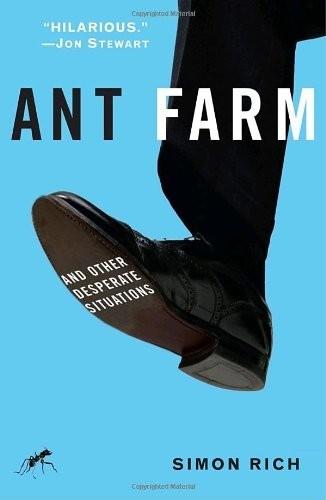
Ant Farm and Other Desperate Situations
by
Simon Rich
Published 10 Nov 2005
You know, the kind of guy who can build me a fort and protect my children from forest beasts. SCRAWNY GUY: What forest beasts? We’re the last remaining species on the planet! WOMAN: I’m sorry. I’m just not attracted to you. SCRAWNY GUY: Listen, I have a unique genetic mutation that allows me to breathe radon gas like it was air! I’m the only person on earth who can survive the nuclear winter. If you don’t mate with me, all human life will die out! THE LAST MUSCULAR GUY ON EARTH: (coughing from the radon gas) Hey, baby. Nice ass. WOMAN: (Giggles.) SCRAWNY GUY: What’s happening? This is completely insane. THE LAST MUSCULAR GUY ON EARTH: (sweating) Let’s go to my fort, babe. (Cough.)
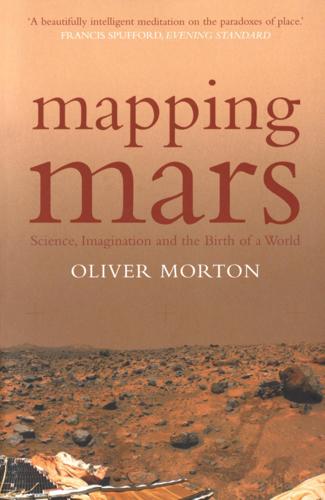
Mapping Mars: Science, Imagination and the Birth of a World
by
Oliver Morton
Published 15 Feb 2003
Such cooling was to be put forward in the early 1980s as the mechanism by which a large impact by an asteroid or comet—an event guaranteed to kick up a lot of dust—might have killed off the dinosaurs. This new mechanism for mass extinction led to Pollack and his colleagues being asked to model the sun-obscuring effects of nuclear war, and thus to the idea of “nuclear winter.” Having gone to Mars to look for signs of life, Sagan found intimations of planetary mortality. As the cooling planet-wide pall of dust started to ebb down the volcanoes’ flanks in late 1971, the television team began to pick out the outlines of other features: Depressions, in which there was more airborne dust to reflect sunlight back into space, started to stand out as bright blotches.
…
Humankind had never really seen a planet-wide weather phenomenon before Mariner 9 sent back images of the great dust storm of 1971; within a decade or so, spurred on in part by those observations of Mars, researchers at Ames and elsewhere had shown that a similar atmospheric shroud might be brought about in days by means of a nuclear winter. Though we don’t have tools designed for terraforming, we do have many tools of the same general kind, even if they are abacuses to computers. We don’t know how to design complex ecosystems, or long-term life-support systems; but we know how to build spacecraft and hydrogen bombs and genetically engineered organisms and greenhouse gas factories.
…
See NASA National Space Society, 267 Naval Observatory (Washington, D.C.), 81 Neptune, 214 Netlander, 287 Neukum, Gerhard, 138 New Mars, The (Hartmann/Raper), 130 New Scientist, 169, 174 Nilosyrtis Mensae, 104 Nirgal Vallis, 96, 167 Niven, Larry, 36, 213n Nix Olympica. See Olympus Mons Nixon, Richard, 60 Noachian period, 117, 138 Noachis Terra, 103, 117 Noctis Labyrinthus, 100–101, 135 Noguchi, Isamu, 297, 319n North Spot (Ascraeus Mons), 44, 46, 98–99 Nowell, Lisa, 176 nuclear weapons, 298 nuclear winter, 46 Nye, Bill, 36 Oberg, James, 304 Oceanus Borealis. See Mars (ocean) Olympus Mons, 44, 45–46, 47–48, 96, 99, 110, 115n, 137–38, 140, 146, 179 difficulties involved in representing, 135 “On the Origin of Hypotheses” (Gilbert), 71, 83 Ophir, 101 O’Sullivan, Timothy, 237 Our Mutual Friend (Dickens), 9 Out of the Cradle (Hartmann/Miller/Lee), 289 Oyama, Vance, 300 Pacific Edge (Robinson), 176 Paine, Thomas, 238, 260, 272 Panetta, Leon, 253–54 Pardee, Joseph Thomas, 190–91 Parker, Tim, 184–88, 200–206, 213, 228, 234, 298 Pavonis Mons, 98, 102 Penrose, Roger, 213n Pesek, Ludwig, 130, 319 Phlegra Montes, 123 Pieri, David, 164, 188 Pigwad (Planetary Interactive GIS-on-the Web Analyzable Database), 240 Pilcher, Carl, 67–68, 70 Pioneer Astronautics, 273 Pioneer mission, 61 “Pioneering the Space Frontier” (Paine), 246, 260 Place and Placelessness (Relph), 222–23 Planetary Explorer program, 65 Planetary Society, 30 Planetfest, 32, 35–36, 42 Planum Australe, 104, 105–6 Pohl, Frederik, 173–75, 178, 179 Pollack, James, 46, 100, 121, 158–60, 304 Poor, Kim, 92, 131 Poss, Richard, 132, 133 Poundstone, William, 100 Pournelle, Jerry, 178 Powell, John Wesley, 79, 148 Proctor, Richard, 14 Protonilus Mensae, 104, 186 Ptolemaus (crater), 2 Rainbow Mars (Niven), 213n Raine, Craig, 19 RAND Corporation, 23, 24 Rawlings, Pat, 32, 134, 290 Reagan, Ronald, 185 Red Mars (Robinson), 36, 108n, 177, 179, 186, 289, 319, 322 Red Planet (film), 290, 290n Red Planet (Hemlein), 178 “Red Star: The First Bolshevik Utopia, The” (Bogdanov), 178 Relph, Edward, 222–23 Return to Utopia (Rawlings), 32 Robinson, Kim Stanley, 36, 108n, 173–83, 205n, 213n, 257n, 281, 289, 308, 310–11, 319, 322, 323 Roddenberry, Gene, 264 Romeo and Juliet (Shakespeare), 324–25 Royal Astronomical Society, 12 Royal Greenwich Observatory, 10–11 Sacks, Oliver, 19 Sagan, Carl, 30, 42, 46, 95, 96, 100, 108n, 158, 197, 227, 234, 240, 257, 268, 303, 304–5 San Juan Mountains (Colorado), 91 Sanchez, Anthony, 53, 55 Sand Dunes, Carson Desert, Nevada (O’Sullivan), 237 Sands of Mars, The (Clarke), 219, 303 Saturn, 131, 132, 133 Saturn V, 31, 316 Saunders, Steve, 188 Schama, Simon, 324n Schiaparelli, Giovanni, 15–16, 21, 44, 96, 100, 101n, 102 Schiaparelli (crater), 102–3 Schrödinger, Irwin, 301 Schmitt, Harrison, 57 Schubert, Frank, 275, 276 Schultz, Peter, 144–45, 150, 222 Science (journal), 68, 190, 210, 211, science fiction, 17, 36, 93, 135–36, 173–83, 289–90, 319–23 and Martian giganticism, 108n See also individual authors Scott, Dave, 112–16, 115n, 117, 150, 167–72, 324 Scott, Robert Falcon, 30 Scout missions, 287 Secchi, Father Angelo, 14, 155 Secchi Continent, 14 Secret of Life, The (McAuley), 271n Seed, David, 175 Service, Robert W., 141 Shakespeare, William, 324–25 Sharp, Bob, 24, 163, 164 Sheffield, Charles, 180 Shergotty meteorites, 139, 247 Shelley, Percy, 173 Shiner, Lewis, 289 Shirley, Donna, 61n Shoemaker, Gene, 84–92, 95, 148, 150, 162, 254, 324–25 Shultz, Peter, 254 “Significance of the Frontier in American History, The” (Turner), 263, 264 “Significance of the Martian Frontier, The” (Zubrin), 265 Silent Spring (Carson), 300 Simud Vallis, 96, 102 Sinai Planum, 101 Sleep, Norm, 122–23, 124, 313 Smith, Brad, 40, 42 Smith, David, 63–64, 65, 69–70 Smith, Peter, 69, 100, 233–34, 235, 236, 239, 239, 315n Smithsonian Air & Space Museum (Washington, D.C.), 322 SNC meteorites, 249 Snell, Willebrord, 25 Snyder, Gary, 180n Soderblom, Larry, 42, 166–67 Solis Lacus, 16 Solis Planum, 101, 102 South Spot (Arsia Mons), 44, 46, 98 Space Shuttle, 60–61 Space Task Group, 60 “Spell of the Yukon, The” (Service), 141 Sputnik, 85 Squyres, Steve, 119 Star Trek, 93 Stoker, Carol, 244, 246, 263, 276, 293 Storm, Bob, 196 Stranger in a Strange Land (Heinlein), 19, 156, 302n Strickland, Ed, 134n Sturgeon, Theodore, 319 Surface of Mars, The (Carr), 163 Syria Planum, 101 Syrtis Major Planum, 13, 14, 15, 103 See also Hourglass Sea Taber, Frank, 324–25 Tanaka, Kenneth, 112, 211, 240 Teapot Ess, 86 Tempe Terra, 186 Tennyson, Alfred Lord, 18, 48 Terra Meridiani, 102, 143, 203, 205–206, 232, 287 Terraforming: Engineering Planetary Environments (Fogg), 315 Tharsis, 15, 46, 98–101, 112, 145, 179 Titan, 316 Tithonium Chasma, 101 Tiu Vallis, 41–42, 96, 102 Tolkien, J.R.R., 309 TOPS probes, 61 “Transit of Earth” (Clarke), 319 Traveler’s Guide to the Solar System, The (Hartmann/Miller), 130–31, 136 See also Grand Tour, The Triton, 96, 214 true polar wander, 144–45 Truman, Harry, 264 Tucson Mafia, 196, 209 Turner, Frederick Jackson, 110–11, 263–64 Turner, J.M.W., 131, 132 Turrell, James, 73, 297 Tyrrhena Patera, 103 Tyrrhenian Sea, 15 “Under the Surface” (Brown), 153 Understanding Comics (McCloud), 116 United States Geological Survey (USGS), 40, 84, 88 Apollo missions, contribution to, 167 Gilbert building, 93, 94, 94n given Mars mapping role, 50 as link between Mars and the West, 85–88 Mars Digital Image Mosaic, 57 1:15,000,000 maps, 3–4 1:5,000,000 maps, 57 Pigwad, development of, 240 University of Washington Department of Nuclear Engineering, 254 Utopia Planitia, 2, 16, 104, 119–21 Valles Marineris, 46–47, 57, 101, 101n, 102, 121, 135, 143, 169 Grand Canyon, compared with, 146–48 influence on fictional landing sites, 289–90 “Value of Outrageous Geological Hypotheses, The” (Davis), 184 van Hoogstraten, Samuel, 49 Van Sant, Tom, 297 Vastitas Borealis, 97, 119 Venus, 81, 109n, 170, 214, 236n, 304 Verne, Jules, 295 Victoria, Queen, 58n Viking (missions), 2, 28, 39–40, 61, 184, 234n, 322 color cameras, 99–101, 228–30 crater pictures, 76 exobiology experiments, 301–2 landing sites, 227–28 picture archive, 193, 198, 234 replica lander, 322 success of, 61 Thomas Mutch Memorial Station, 322 “Viking Results—The Case for Man on Mars, The” (Clark), 243, 245 Vishniac, Wolf, 247, 300 von Braun, Wernher, 132, 260 Von Braun Planitia, 275 Voyage (Baxter), 289 Voyage to the Red Planet (Bisson), 289 Voyager, 214 Wagner, Richard, 267 Wallace, Alfred, 211–12 Wanderer Above the Sea of Mist (Friedrich), 134–25 Watchmen (Moore/Gibbons), 134–37 Watkins, Carleton, 235, 237 Watson, Ian, 174–75, 178, 179 Weinbaum, Stanley, 3 Wells, H.
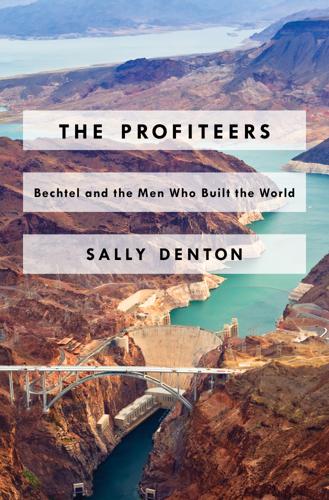
The Profiteers
by
Sally Denton
The brilliant Cornell University astronomer Carl Sagan entered what he saw as a grotesquely anti-intellectual debate on a subject that was undebatable. He penned a three-page hypothesis of the Doomsday Machine—as a 1967 Star Trek episode called it—that would result. Sagan’s 1983 article, “The Nuclear Winter,” a stark and terrifying warning, was published in Parade magazine, the Sunday newspaper supplement that reached an estimated 20 million readers. Using a model of a five-thousand-megaton nuclear exchange, Sagan wrote that land temperatures would drop to minus 25 degrees Celsius and stay below freezing for months, creating a climate catastrophe.
…
Mello saw the plan to “freshen up our bombs and cut down the number of nuclear warheads,” as a former presidential science advisor put it, as a red herring. He thought America was walking “back down the limb we got ourselves out on with nuclear weapons.” Comparing the lab’s confidence in the nuclear deterrent to confidence in the tooth fairy, Mello wrote: “What with fallout, reactor meltdowns, and nuclear winter, nuclear ‘deterrence’ amounts to a suicide vest for humanity. . . . The labs are political heroin. As long as our politicos remain addicted to them, they won’t think straight.” Advocating for the nuclear mission to be minimized rather than maximized—to maintain existing facilities rather than expand them—Mello was up against an ever more potent force in Bechtel.
…
Christopher, 235 mining and minerals, Bechtel projects in, 9, 80, 87, 104, 111, 152, 157, 304 Mississippi, 246–47 Mobutu, Joseph, 80 Mohammad Bin Fahd, Prince, 127 Mojave Desert, California, Ivanpah Solar Power Facility in, 7, 206, 296–97 Moore, John L., 157 Moral Majority, 136 Morgan Guaranty Trust Company, 112 Mormans, 23, 29, 285–86 Morris, Edmund, 114–15 Morris, Roger, 37, 65, 167 Morrison and Knudsen, 30 Mossad, 178 Mossadegh, Mohammad, 65 Motorola facility, Tianjin, China, 208 Moyers, Bill, 81 Mumm, Cliff, 239, 242, 243 MX missile system, 162 Nagasaki bombing, Japan, 10, 68–69 Nation (magazine), 309 National Academy of Sciences, 70, 259 National Aeronautics and Space Administration (NASA), 206 National Business Advisory Council, 74 National Committee for a Free Asia, 75 National Environmental Policy Act, 270 National Ignition Facility (NIF), 265–66 National Industrial Conference Board, 87 nationalization policies, 65, 95, 96–97, 209 National Laboratory System, 256 see also Lawrence Livermore National Laboratory; Los Alamos National Laboratory function of, 157 government owned and contractor operated (GOCO) model of, 157, 258 privatization of management of, 10, 11, 251, 255, 256–60, 261, 263, 265–66, 270, 272, 290, 292 University of California management of, 10–11 National Nuclear Security Administration (NNSA), 253, 256, 257, 260, 263, 265, 266, 271, 282, 292, 294, 295 National Reactor Testing Station, Arco, Idaho, 10 National Research Council, 259 National Resources Defense Council, 265 National Security Act (1947), 64, 67 National Security Agency, 14, 79, 276 National Security Archive, 200, 302 National Security Council (NSC), 76, 132, 171, 190, 198 Natsios, Andrew, 233, 234, 238 natural gas industry, Bechtel’s projects in, 7, 86, 87, 205 natural gas pipeline projects, 101–02, 110–11, 240 Naval Intelligence Anti-Terrorism Unit, 184 Naval Ocean Surveillance Information Center (NOSIC), 177, 181 Netanyahu, Benjamin, 13, 299, 300 Nevada Test Site, Las Vegas, 256 new cities projects, 9, 122–23, 127 New Deal, 30, 118, 214 Newmont Mining Company, 122 New Right, 136 New START (Strategic Arms Reduction Treaty), 274–75, 280, 281–82, 283 Newsweek (magazine), 6, 11, 88, 143 New Yorker (magazine), 219–20, 235, 272 New York Times, 5, 20, 36, 43, 46, 75, 110, 111, 128, 140, 166, 173, 189, 191, 192, 195, 201, 225, 230, 233, 238, 239, 246, 251, 252, 265, 276, 279, 283, 300, 311 Nicaragua, 185, 187–88 Nidal, Abu, 170 Nies, Judith, 30, 122, 151, 207 Nixon, Richard arms control efforts of, 163 Bechtel contracts and, 90, 95, 100, 104, 105 China’s nationalization of ITT and, 97 CIA covert operations and, 95, 96, 97 energy policy of, 103 McCone’s relationship with, 78 Pacific Rim strategy of, 88, 89, 100 presidential run of, 89–90, 119 Shultz’s Cabinet posts with, 105, 109–11, 123, 143 Soviet policy of, 101–02, 110–11 Steve Jr. and, 87–88, 89, 90 Steve Sr. and, 75, 95, 101 Weinberger and, 119 Nixon Doctrine, 100 Nobel Peace Prize (2000), for Obama, 280, 281, 282 Norquist, Grover, 11 Norris, Stan, 163 North, Oliver, 139, 347n185 North Atlantic Treaty Organization (NATO), 68, 167, 229, 306 North Korea, 178, 274, 281 Northwestern Pacific Railroad, 23, 24 Nuclear Energy Institute (NEI), 261 Nuclear Nonproliferation Treaty, 158 nuclear power plants AEC’s policy on, 70–71 Bechtel’s construction of, 10, 68, 70–71, 79, 104 in China, 158 cleanup after accidents in, 10, 149–50, 152, 216 construction of first nuclear plant, 10 Davis as champion of, 153–55 decline in contracts for, 151, 153 DOE’s program for, 156–57 Nixon’s push for, 103 potential for catastrophe in, 120, 121 public opposition to, 71 Reagan’s s policy on, 153–54, 157–58 in South Korea, 10 Steve Jr.’s focus on safety of, 149–50 switch to coal from, 121–22 nuclear test ban treaty proposals, 70, 158, 274 nuclear weapons development and testing Bechtel’s involvement in, 70–71 Cold War arms race on, 69–70 DOE’s program for, 156–57 Eisenhower’s “Atoms for Peace” speech (1953) on, 69 nuclear test ban proposals on, 70, 158, 274 opposition to, 72 nuclear weapons laboratories. See National Laboratory System nuclear weapons production facilities Bechtel as global leader in, 10 Oak Ridge, Tennessee, 67 Rocky Flats Plant, Colorado, 269 “Nuclear Winter, The” (Sagan), 164–65 Nunn, Sam, 215, 276, 284, 318 Oak Ridge, Tennessee, nuclear weapons plant, 67 Obama, Barack New START treaty proposal of, 281–82, 283 Nobel Peace Prize (2000) for, 280, 281, 282 nuclear facilities modernization and, 272, 279, 281–82 nuclear-free world doctrine of, 274–76, 279, 283 nuclear material safeguards promoted by, 280–81 Pollard affair and, 13, 298–300, 301, 303 Prague speech (2009) on disarmament by, 274–75, 279, 280 Shultz on disarmament policies of, 278–79 Occidental Petroleum, 94, 101, 155 Office of Management and Budget (OMB), 109, 114, 116, 119, 247, 264 Office of Strategic Services (OSS), 8, 55, 56, 59, 64, 132 Office of the Special Inspector General for Iraq Reconstruction (SIGIR), 240–41, 243 oil industry Bechtel’s Middle Eastern projects and, 58, 59, 60, 62 Dad Bechtel’s move into, 26 in Iran, 65, 96, 168 in Libya, 94, 96 Mideast crisis (1970s) in, 103 Reagan’s policy in Iraq and, 172 in Saudi Arabia, 60–61, 62, 85, 96 Steve Sr. and, 48–49, 58, 59, 60, 62, 63, 124 US financial inducements to, 59 oil refinery construction projects, 26, 48–49, 50, 53, 58, 62, 96, 122, 134, 191, 201, 202, 225, 305 O’Konski, Alvin, 72 O’Leary, Hazel, 260 Olmert, Ehud, 299 Olympics (1992), 208 Oppenheimer, J.
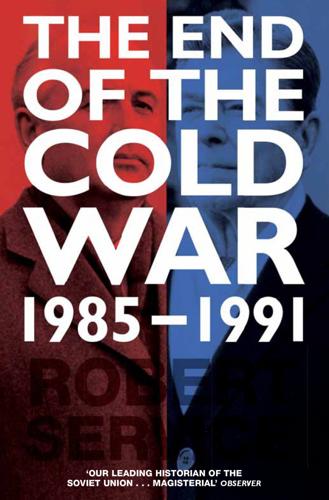
The End of the Cold War: 1985-1991
by
Robert Service
Published 7 Oct 2015
Birks, ‘The Atmosphere after a Nuclear War: Twilight at Noon’, Ambio, nos. 2–3 (1982), pp. 115–25. 32. L. Gouré, ‘“Nuclear Winter” in Soviet Mirrors’, Strategic Review, 3 September 1985, p. 22. 33. C. Sagan, ‘Nuclear War and Climatic Catastrophe: Some Policy Implications’, Foreign Affairs, no. 2 (Winter 1983–1984), pp. 259–60 and 291. 34. C. Sagan to E. Teller, 23 February 1984: Edward Teller Papers (HIA), box 283, folder: Carl Sagan. 35. Pravda, 23 March 1980, p. 4. 36. Gouré, ‘“Nuclear Winter” in Soviet Mirrors’, p. 25. 37. A. L. Adamishin Papers (HIA), box 1: Diaries 1987, 27 February 1987. 38.
…
Sagan asked why, if Reagan genuinely wanted peace, he gave 10,000 times greater financial support to the Defense Department than to the Arms Control and Disarmament Agency.33 When Edward Teller poured scorn on him as a ‘propagandizer’ who did not know what he was talking about, Sagan wrote a letter deploring that Teller himself had written that ‘nuclear winter’ was the only possible outcome of a war involving nuclear ballistic missiles; he objected to Teller’s readiness to engage in personalized polemics.34 Sagan’s article was manna from heaven for Soviet leaders and propagandists. Already in March 1980 an appeal had gone from 654 American scientists to Presidents Carter and Brezhnev.
…
72 Though Gorbachëv denied that the USSR was sending aid to the strikers, he carefully added ‘as far as I am aware’.73 He anyway promised that there would be no further subsidy. (He kept his word: when Soviet trade union leaders asked permission to send a million rubles to the strikers, the Politburo turned them down.)74 He adduced the New York Times to warn that any war with atomic bombs would create ‘nuclear winter’.75 He expressed alarm about people in Washington like Weinberger and Perle.76 His coup de théâtre occurred when he took a top-secret General Staff map from his briefcase with coloured arrows marking the Soviet missile targets in the United Kingdom. Thatcher did not know whether to take him seriously.
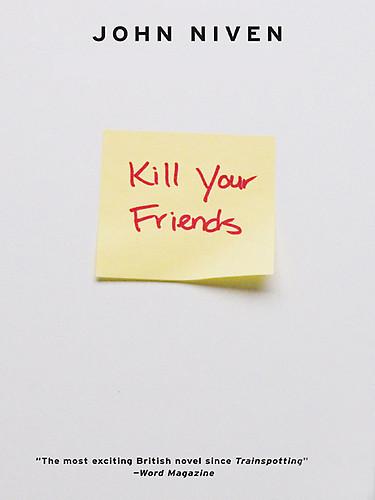
Kill Your Friends
by
John Niven
Published 7 Feb 2008
Copies of Music Week are scattered all over the floor, all opened at the album charts where we’ve been scanning the producers’ names for ideas. Waters thinks hard. Or rather he makes the expression he imagines humans use when thinking—furrowed brow, gaze focused somewhere in the mid-distance—while whatever goes on in his mind goes on. I picture the inside of his head as a sleeping donkey, a 747 exploding on the tarmac, a nuclear winter. “How about…” I say sitting forward, picking up his Amex, scooping some powder towards me, pausing dramatically as Waters looks up hopefully, “…Guy Stevens?” I wait a few seconds while his brain turns, as swift as a container of near-set concrete tipping over. There’s the vaguest light somewhere in his eyes, the tiniest hint that something like a mind lives and functions in there.
…
shops and Alabama Fried Chicken dives—and take the M25 South. I come along a flyover and, for a moment, the Saab is suspended so high in the air that it feels like you are in a video game. On my right, stretching back towards Docklands and the City, and on my left, oozing out into Kent, is the nuclear winter of east London—hundreds of square miles of power stations and freight yards, pylons, construction sites and chemical plants, motorway and flyover, ring road and tunnel, endless miles of red tail lights, yellow headlights and sodium street lights. The air outside the blue-tinted windows of the car is smoke, dust and dirt.
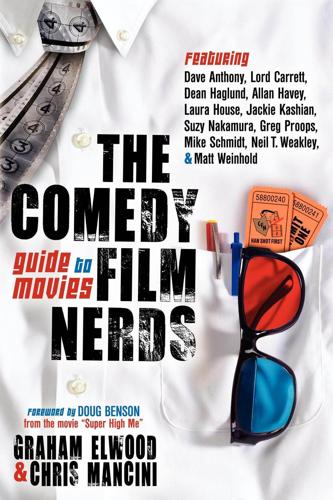
The Comedy Film Nerds Guide to Movies
by
Graham Elwood
and
Chris Mancini
Published 31 May 2012
I related to this because I feel like those of us who are podcasting are on the forefront of something, and maybe twenty to thirty years from now a film will be made about a bunch of frustrated comics in LA talking into laptop microphones in garages, closets, and above 7-11’s, and it is this point in history that will be referred to as how podcasting changed everything. Or society will have collapsed and this book will be used in a fire to light up the sunless sky in a nuclear winter. Either way we will have an impact on the future. One of the reasons why in the last ten years there has been such an explosion of remarkable docs is the changing technology. Thirty to forty years ago a filmmaker had to take 16mm film cameras and expensive, bulky sound equipment out in the field to document something or someone.
…
It uses the Underdog Template to full advantage, but scores huge points for not treating sports like some titanic struggle of men. Instead, it points out that because these guys have spent their entire lives playing a kids game, they’re essentially giant kids themselves—and in doing so the film demonstrates just how important chemistry is in sports. Rather than treating every fastball like a nuclear winter, it showed the players partying and acting stupid—precisely what 90 percent of us would do if we were young and rich. It lends vicariousness to the film that makes it eminently watchable . . . as the cable companies have discovered. If Major League came close to capturing a Major League clubhouse, White Men Can’t Jump absolutely NAILED life on the Venice Beach basketball courts.
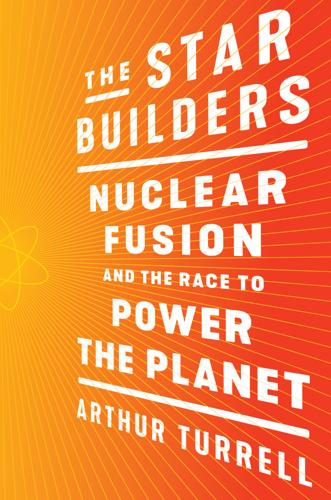
The Star Builders: Nuclear Fusion and the Race to Power the Planet
by
Arthur Turrell
Published 2 Aug 2021
The destruction wrought by nuclear weapons is so effective at making entire cities vanish that, paraphrasing Arthur C. Clarke, it’s as if the technology were magic, albeit of the darkest and most terrible kind. Nuclear weapons are among the most dangerous threats to humans. A big enough nuclear war would likely plunge the world into a nuclear winter in which the Sun’s rays would be blocked by soot and debris, temperatures would dip to levels not seen for twenty thousand years, and those not killed immediately would likely starve to death. There are more than ten thousand nuclear weapons in existence today. We must all do what we can to ensure that they’re never used.4 There are two types of nuclear weapons, those based on fission (atomic bombs) and those based on fusion and fission (hydrogen bombs).
…
Engel, “Twenty-three Fishermen and a Bomb: The Voyage of the Lucky Dragon,” New York Times (1958); B. Kendall, “The H-Bomb,” Cold War: Stories from the Big Freeze, BBC Radio 4 (2016). 3. C. Bernardini and L. Bonolis, Enrico Fermi: His Work and Legacy (London: Springer Science & Business Media, 2013). 4. A. Robock, L. Oman, and G. L. Stenchikov, “Nuclear Winter Revisited with a Modern Climate Model and Current Nuclear Arsenals: Still Catastrophic Consequences,” Journal of Geophysical Research: Atmospheres 112 (2007); M. Roser and M. Nagdy, “Nuclear Weapons,” Our World in Data (2013), https://ourworldindata.org/nuclear-weapons. 5. A. Glaser and R. J.
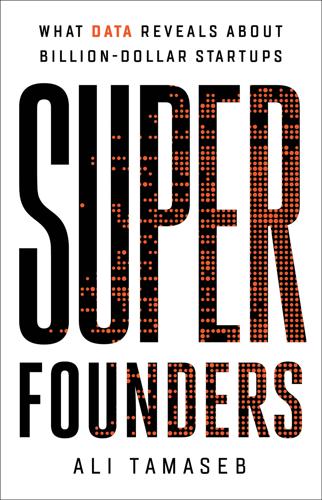
Super Founders: What Data Reveals About Billion-Dollar Startups
by
Ali Tamaseb
Published 14 Sep 2021
The fundamental thing that happened was the internet bubble collapse of 2000. There are only a few companies of that generation that survived: companies like Google, PayPal, and Netflix. Everything else that wasn’t already super successful got completely obliterated with a “nuclear winter” in Silicon Valley. The benefit of having had some success going into this nuclear winter was that we had this philosophy—“we” being Peter Thiel, Reid Hoffman, Roelof Botha, Max Levchin, and Jeremy Stoppelman—that even though everybody thought the internet and consumer technology were dead, we actually felt there was going to be another wave.
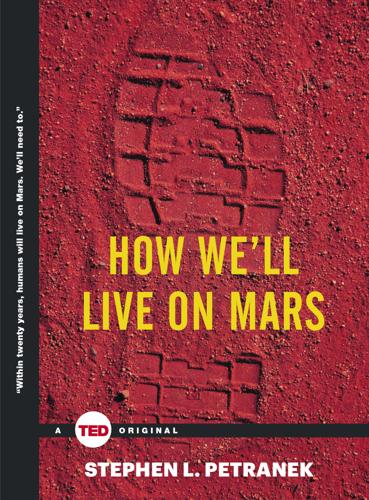
How We'll Live on Mars (TED Books)
by
Stephen Petranek
Published 6 Jul 2015
If an asteroid with a lot of ammonia could be steered into a collision course with Mars, the resulting impact would do at least two things: create heat to help warm Mars and raise the level of greenhouse gases. The impact alone of a large asteroid on the planet’s surface could raise the temperature of Mars by 5 degrees Fahrenheit. Unfortunately, there could also be disastrous results: an asteroid colliding with Mars could create a nuclear winter scenario, throwing up so much debris into the atmosphere that the planet would actually cool before it warms, thus greatly postponing the time frame for terraforming. Furthermore, ammonia is caustic, and a large amount of it in the atmosphere could create worse conditions for humans than would more carbon dioxide.
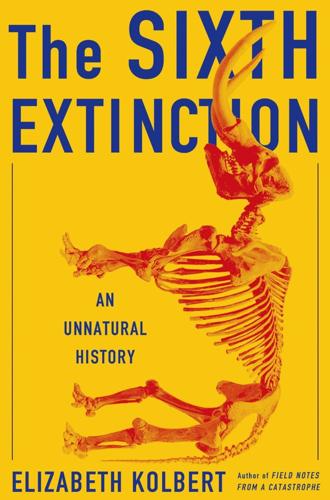
The Sixth Extinction: An Unnatural History
by
Elizabeth Kolbert
Published 11 Feb 2014
One commentator observed that “to connect the dinosaurs, creatures of interest to but the veriest dullards, with a spectacular extraterrestrial event” seemed “like one of those plots a clever publisher might concoct to guarantee sales.” Inspired by the impact hypothesis, a group of astrophysicists led by Carl Sagan decided to try to model the effects of an all-out war and came up with the concept of “nuclear winter,” which, in turn, generated its own wave of media coverage. But among professional paleontologists, the Alvarezes’ idea and in many cases the Alvarezes themselves were reviled. “The apparent mass extinction is an artifact of statistics and poor understanding of the taxonomy,” one paleontologist told the New York Times.
…
See also Big Five extinctions; Sixth Extinction; and specific periods and species causes of defined fossil record and impact of lesser events and ocean chemistry and rate of change and unified theory of uniformitarians vs. catastrophists and mastodons American (Mammut americanum) Max Plack Institute for Evolutionary Anthropology McPherron, Shannon megafauna megaherbivores Megatherium melastome Mendelson, Joseph mesocosms Mesosaurus Mesozoic era Mesquita, Rita methane microbial communities Millar, Ian Miocene epoch moas mollusks monkeys black spider brown capuchin howler woolly mosasaur (Maastricht animal) mosses Muir, John multiflora rose Museum of Natural History (Paris) mussels Mytilus galloprovincialis zebra Napoleon National Geographic National Institute of Amazonian Research National Wildlife Federation Native Americans Natural History Museum of London Natural History Museum of Los Angeles Natural History (Pliny) natural selection Nature Nature Conservancy nautiluses Neanderthals Nemesis Affair NEMESIS (National Exotic Marine and Estuarine Species Information System) neocatastrophism Neogene period New England New Pangaea Newsweek Newton, Alfred New York State Department of Environmental Conservation New York Times New Zealand nitrogen Noah’s Ark mollusk (Arca noae) noddies, black Notes on the State of Virginia (Jefferson) nuclear winter ocean acidification coral reefs and marine life and rate of Oceanography oceans. See also sea level; sea temperature atmosphere and dispersal of species and sulfate-reducing bacteria and tropical octopuses One Tree Island Research Station On the Origin of Species (Darwin) orangutans Sumatran orchids Ordovician period extinction at end of Ordovician radiation overkill hypothesis oystercatchers oysters ozone hole Pääbo, Svante Paleogene period paleogenetics Paleozoic era palms Panama pandas Pangaea Papua New Guinea paradigm shifts parakeets, golden-winged parrots, green pathogens Pauly, Daniel Peale, Charles Willson peccaries penguins peppershrike, rufous-browed Permian period extinction at end of Phillips, John Philosophical Transactions of the Royal Society B photosynthesis pH scale.

The Rationalist's Guide to the Galaxy: Superintelligent AI and the Geeks Who Are Trying to Save Humanity's Future
by
Tom Chivers
Published 12 Jun 2019
A 2014 paper suggested that just 100 small nuclear weapons being detonated in a regional war – say between Pakistan and India – could potentially trigger a global famine by hurling black carbon into the atmosphere and reducing growth seasons for plants by up to a month a year for five years.4 There are about 9,000 active nuclear warheads in the world, and another 6,000 or so awaiting dismantlement. That’s a lot lower than the peak number of roughly 65,000 in the late 1980s, but still easily enough to cause a spectacular nuclear winter, and possibly end human life. And we have come astonishingly close to disaster. One of the Rationalist community’s heroes is a former Soviet Air Defence Force officer, Stanislav Petrov, whom I mentioned earlier and who died in 2017. On 23 September 1983 Lieutenant-Colonel Petrov was on duty as the watch officer of the USSR’s missile early-warning system, at a time of enormous geopolitical tension: three weeks earlier, a US congressman had died in a Korean airliner shot down by a Soviet interceptor, and both sides in the Cold War had recently deployed nuclear weapons in threatening positions.
…
Quite a lot of them begin with phrases like ‘A computer error at NORAD …’ But, says Ord, we are probably past the greatest danger. ‘We’ve managed to get through a much riskier period than we have now,’ he said. He thinks the chance of an all-out nuclear war this century is probably no more than one in 20. ‘But even if there is one, it’s not clear what the chance of extinction would be. There’s the nuclear winter theory, but it certainly doesn’t say there’s a 100 per cent chance we’d go extinct. It seems to me that it’s maybe possible, but there haven’t been to my knowledge any real papers analysing it.’ When you multiply the risk of there being a war by the risk that any such war would destroy humanity or permanently ruin its ability to recover, ‘the risk doesn’t seem that high to me,’ says Ord.

The Singularity Is Nearer: When We Merge with AI
by
Ray Kurzweil
Published 25 Jun 2024
Toon et al., “Rapidly Expanding Nuclear Arsenals in Pakistan and India Portend Regional and Global Catastrophe,” Science Advances 5, no. 10 (October 2, 2019), https://advances.sciencemag.org/content/5/10/eaay5478. BACK TO NOTE REFERENCE 5 Seth Baum, “The Risk of Nuclear Winter,” Federation of American Scientists, May 29, 2015, https://fas.org/pir-pubs/risk-nuclear-winter; Bryan Walsh, “What Could a Nuclear War Do to the Climate—and Humanity?,” Vox, August 17, 2022, https://www.vox.com/future-perfect/2022/8/17/23306861/nuclear-winter-war-climate-change-food-starvation-existential-risk-russia-united-states. BACK TO NOTE REFERENCE 6 Anders Sandberg and Nick Bostrom, Global Catastrophic Risks Survey, technical report 2008-1, Future of Humanity Institute, Oxford University (2008): 1, https://www.fhi.ox.ac.uk/reports/2008-1.pdf.
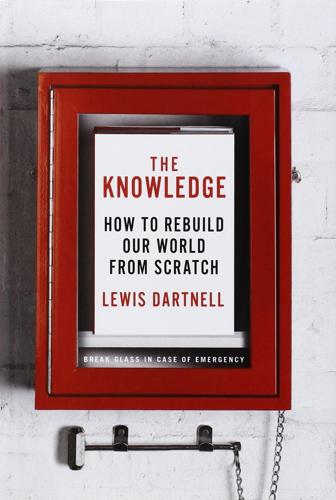
The Knowledge: How to Rebuild Our World From Scratch
by
Lewis Dartnell
Published 15 Apr 2014
The warheads’ distinctive electromagnetic pulses were detected by defense surveillance in China and triggered a round of preemptive launches against the United States, which in turn spurred retaliatory strikes by America and its allies in Europe and Israel. Major cities worldwide were reduced to jagged plains of radioactive glass. The enormous volumes of dust and ash injected into the atmosphere reduced the amount of sunlight reaching the ground, causing a decades-long nuclear winter, the collapse of agriculture, and global famine. Or the event was entirely beyond human control. A rocky asteroid, only around a mile across, slammed into the Earth and fatally changed atmospheric conditions. People within a few hundred kilometers of ground zero were dispatched in an instant by the blast wave of intense heat and pressure, and from that point on most of the rest of humanity was living on borrowed time.
…
People within a few hundred kilometers of ground zero were dispatched in an instant by the blast wave of intense heat and pressure, and from that point on most of the rest of humanity was living on borrowed time. It didn’t really matter which nation was struck: the rock and dust hurled up high into the atmosphere—as well as the smoke produced by widespread fires ignited by the heat blast—dispersed on the winds to smother the entire planet. As in a nuclear winter, global temperatures dropped enough to cause worldwide crop failures and massive famine. This is the stuff of so many novels and films featuring post-apocalyptic worlds. The immediate aftermath is often—as in Mad Max or Cormac McCarthy’s novel The Road—portrayed as barren and violent. Roving bands of scavengers hoard the remaining food and prey ruthlessly on those less well organized or armed.
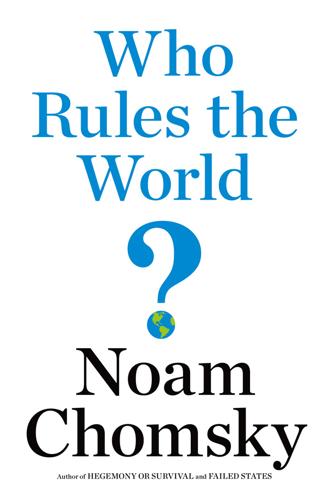
Who Rules the World?
by
Noam Chomsky
He might also read today’s scientific journals. Just about every one you open has a more dire prediction than the last. The other issue is nuclear war. It’s been known for a long time that if there were to be a first strike by a major power, even with no retaliation, it would probably destroy civilization just because of the nuclear-winter consequences that would follow. You can read about it in the Bulletin of the Atomic Scientists; it’s well understood. So the danger has always been a lot worse than we thought it was. We’ve recently passed the fiftieth anniversary of the Cuban Missile Crisis. It was a very close call, and not the only time either.
…
Both sides are practicing rapid mobilization and redeployment of forces to the Russia-NATO border, and “both believe a war is no longer unthinkable.”21 If that is so, both sides are beyond insanity, since a war might well destroy everything. It has been recognized for decades that a first strike by a major power might destroy the attacker, even without retaliation, simply from the effects of nuclear winter. But that is today’s world. And not just today’s—that is what we have been living with for seventy years. The reasoning throughout is remarkable. As we have seen, security for the population is typically not a leading concern of policymakers. That has been true from the earliest days of the nuclear age, when in the centers of policy formation there were no efforts—apparently not even expressed thoughts—to eliminate the one serious potential threat to the United States, as might have been possible.

The Uninhabitable Earth: Life After Warming
by
David Wallace-Wells
Published 19 Feb 2019
Few feel like gods in the face of warming, but that the totality of climate change should make us feel so passive—that is another of its delusions. In folklore and comic books and church pews and movie theaters, stories about the fate of the earth often perversely counsel passivity in their audiences, and perhaps it should not surprise us that the threat of climate change is no different. By the end of the Cold War, the prospect of nuclear winter had clouded every corner of our pop culture and psychology, a pervasive nightmare that the human experiment might be brought to an end by two jousting sets of proud, rivalrous tacticians, just a few sets of twitchy hands hovering over the planet’s self-destruct buttons. The threat of climate change is more dramatic still, and ultimately more democratic, with responsibility shared by each of us even as we shiver in fear of it; and yet we have processed that threat only in parts, typically not concretely or explicitly, displacing certain anxieties and inventing others, choosing to ignore the bleakest features of our possible future and letting our political fatalism and technological faith blur, as though we’d gone cross-eyed, into a remarkably familiar consumer fantasy: that someone else will fix the problem for us, at no cost.
…
Mad Max: Fury Road unfurls like a global-warming panorama, a scrolling saga of a world made desert, but its political crisis comes, in fact, from an oil shortage. The protagonist of The Last Man on Earth is made that way by a sweeping virus, the family of A Quiet Place is hushed by giant insect predators lurking in the wilderness, and the central cataclysm of the “Apocalypse” season of American Horror Story is a throwback—a nuclear winter. In the many zombie apocalypses of this era of ecological anxiety, the zombies are invariably rendered as an alien force, not an endemic one. That is, not as us. What does it mean to be entertained by a fictional apocalypse as we stare down the possibility of a real one? One job of pop culture is always to serve stories that distract even as they appear to engage—to deliver sublimation and diversion.
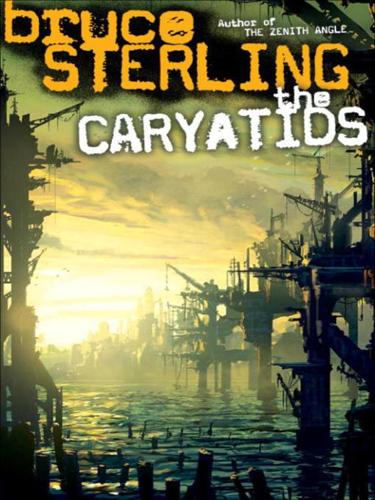
The Caryatids
by
Bruce Sterling
Published 24 Feb 2009
Freddy looked down and slowly quoted from his notepad. “ ‘The massive eruption of a supervolcano would be a planetary catastrophe. It would create years of freezing temperatures as volcanic dust and ash obscured the warmth of the sun. The sky will darken, black rain will fall, and the Earth will be plunged into the equivalent of a nuclear winter.’ ” Guillermo’s face went sour. “Okay, that is total baloney. ‘Nuclear winter,’ that sounds extremely corny to me.” “That’s because this source material is eighty years old. Geologists know a whole lot about supervolcanoes. Nobody else in the world wants to think about supervolcanoes.” Buffy was losing her temper. “But this is so totally unbelievable!

Smart and Gets Things Done: Joel Spolsky's Concise Guide to Finding the Best Technical Talent
by
Joel Spolsky
Published 1 Jun 2007
They earned about $40 an hour, but could be billed out at $250 an hour. The article purported to explain that if you just pay enough, offer well-lit offices, and gave people massages, you shouldn’t have any problem hiring. Shortly after I wrote that article, though, the first Internet bubble burst, and we had something of a nuclear winter in the tech industry. Tons of programmers, developers, web designers, and producers were dumped unceremoniously on the street, many of whom didn’t realize that $60,000 was not really a realistic starting salary for college graduates who had majored in 1. Normally I would put the URL here so you could look it up.
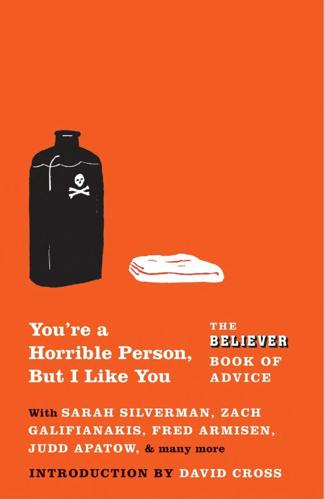
You're a Horrible Person, but I Like You: The Believer Book of Advice
by
The Believer
Published 15 Mar 2010
Yes, you could topple the capitalist system, oust the Pope, end the use of drift nets in the tuna fishing industry, or install Sharia law and a Taliban-style government, but so what? What plastics has to offer is the possibility of replacing organic life with a material that won’t shrink, fade, or biodegrade, available in all colors, shapes, and sizes, and resistant to global warming, environmental degradation, and nuclear winter. Gotta love that. Harold … Dear Harold: If Jews and Muslims were born of the same tribes of Jacob or Isaac or Ronny or whoever killed Jesus, then why are they still fighting today? Also, I can’t get my potato latkes to come out tender on the inside and crispy on the outside like my mother can.
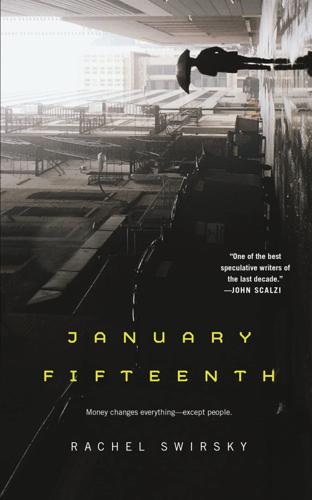
January Fifteenth
by
Rachel Swirsky
Published 13 Jun 2022
And, splashed across everything, blaring like a headache, was that ridiculous bright yellow with which today’s fad-shionistas were assaulting the eyes of the innocent. “Okay, so,” Nevaeh said. “Go over it with me again. UBI got started because everyone was scared after Winter Night.” “Right,” said Janelle. “Because they were afraid of nuclear winter.” “Right.” “Even though it was summer.” “One of life’s great ironies.” “And you were living in D.C.” “Technically commuting from Virginia.” “And everyone was so glad ‘to be alive when dawn impearled, they gathered up to save the world’? Like the poem?” “Sure,” said Janelle. Pursing her lips, she added, “You were around for this.
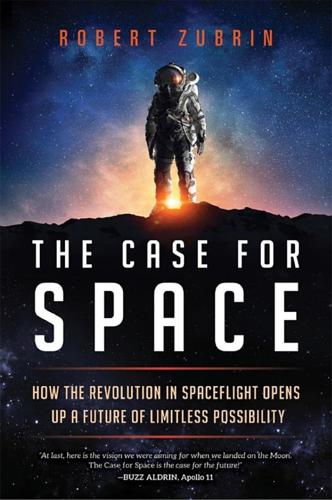
The Case for Space: How the Revolution in Spaceflight Opens Up a Future of Limitless Possibility
by
Robert Zubrin
Published 30 Apr 2019
For example, the kilometer-wide, two-hundred-meter-deep crater in northern Arizona visited by many tourists today is the scar left by the impact of a 150-meter-diameter asteroid that hit the Earth fifty thousand years ago with a force of about 840 megatons (eighty-four thousand Nagasaki bombs), releasing roughly the same explosive power as would have been detonated had an all-out nuclear war occurred between NATO and the Warsaw Pact at the most heavily armed phase of their balance of terror. The impact probably wiped out much of the life in the American Southwest and raised enough dust to throw the entire world into a “nuclear winter” deep freeze for several years. But the 150-meter rock that hit Arizona was still a small asteroid. There are others out there with masses thousands, even millions of times as great. Sometimes they hit too. Table 11.1 provides a rough guide to how much force is released when that happens and the estimated frequency of such events.
…
Any life that could not find a hiding place underground or underwater was killed. The burning only lasted a few days, but afterward the dust released by the impact and consequent smoky fires caused intense, planetwide lethal acid rain and sent the Earth into years or decades of a dust-shrouded deep nuclear winter. Eventually the dust rained out, allowing the blessed sunlight to warm the Earth again, except that the impact and the fires had put a massive amount of carbon dioxide gas into the atmosphere, which the sparse vegetation of the post-holocaust world could do little to clean up. As a result, a powerful greenhouse effect was created, rapidly driving the Earth into an intolerable hothouse that may have lasted for centuries.
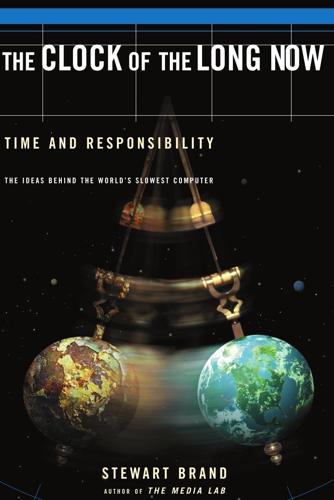
Clock of the Long Now
by
Stewart Brand
Published 1 Jan 1999
He would use an unreliable but accurate timer (solar alignment) to adjust an inaccurate but reliable timer (pendulum), creating a phase-locked loop. A Huygens (swinging) pendulum or torsional (rotating) pendulum would keep the Clock close to accurate, and then a pulse of focused sunlight at exact solar noon would adjust the Clock precisely on any day there was sun. In the event of prolonged cloudiness from volcanic eruptions, nuclear winters, or large meteor impacts, the Clock’s pendulum could keep close-enough time for a few years until the Sun came out again. A second major innovation emerged from analyzing the calculation options. Electronic calculation (as in digital clocks and watches) would be hopelessly invisible and difficult to maintain.
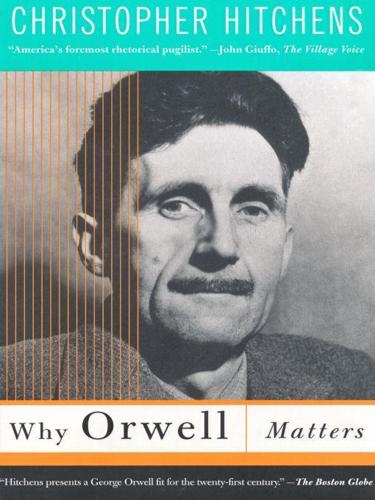
Why Orwell Matters
by
Christopher Hitchens
Published 1 Jan 2002
While those who drown a truth’s empiric part In dithyramb or dogma turn frenetic; — Than whom no writer could be less poetic He left this lesson for all verse, all art. ROBERT CONQUEST: ‘GEORGE ORWELL’ (1969) The stanzas above were written in a glacial time, and refer back to a period of almost polar frigidity — the ‘midnight of the century’ reviewed through the optic of the Cold War, with the additional prospect of a ‘nuclear winter’ never remote enough to be dismissed. Yet the chilliness of the opening is at once redeemed by a friendly gleam, and this gleam is renewed through the subsequent glow of friendship until it suffuses the closing lines with something almost like fire. It’s an open question as to whether or not integrity and honesty are cold or hot virtues, and England can be a dank place in which to locate the question.
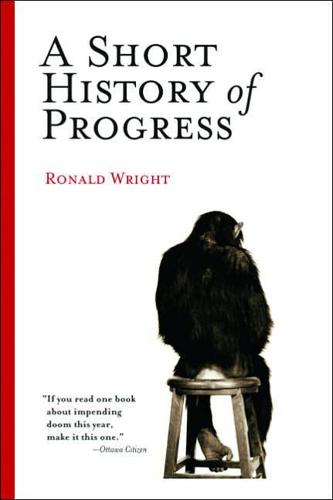
A Short History of Progress
by
Ronald Wright
Published 2 Jan 2004
American Cold Warriors of the last century used to threaten to “bomb the Soviets back into the Stone Age.” Whether the Russians uttered the same threat, I don’t know. But it was certainly a credible one. Even if a nuclear “exchange” (as the euphemism went) failed to extinguish all higher forms of life, it would have ended civilization worldwide. No crops worth eating would grow in a nuclear winter. 8. See Francis Fukuyama, The End of History and the Last Man (New York: Free Press, 1992). 9. Alexander Pope, An Essay on Criticism, 1711; Thomas Henry Huxley, On Elementary Instruction in Physiology, 1877. 10. Quoted in Robert J. Wenke, Patterns in Prehistory (Oxford: Oxford University Press, 1980), p. 79. 11.
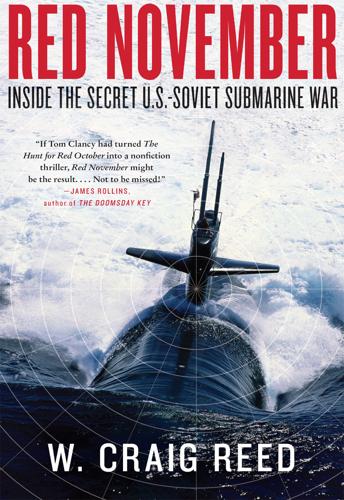
Red November: Inside the Secret U.S.-Soviet Submarine War
by
W. Craig Reed
Published 3 May 2010
Not until then did we learn that the Soviets shipped 161 nuclear warheads to Cuba. Ninety of those were tactical, which would have killed tens of thousands of U.S. soldiers had Kennedy given the order to invade. I spent my entire adulthood believing that President Kennedy saved the world from nuclear winter during the Cuban Missile Crisis. Certainly, he and the members of ExComm were instrumental in forcing Khrushchev to back down at a crucial time during the brewing conflict, but the other heroes of this undeclared war were the commanders of the four Foxtrot submarines. Each had the opportunity, when faced with disaster, to pull the trigger and start a war.
…
Each could have taken a dozen or more American ships with them into the smoldering center of a mushroom cloud, and each could have propelled the world toward a devastating October that would have changed the course of human history. However, each made the right decision in the end, and those of us who survived that time owe them our gratitude and perhaps our lives. The events that transpired in the fall of 1962 brought the world to the edge of nuclear winter not once, but at least a half-dozen times. The Cuban Missile Crisis, perhaps better stated the Cuban Submarine Crisis, spurred the creation of the Moscow–Washington hotline to ensure immediate, direct communications between the superpowers in the event of future potential conflicts. Although critics claim that Kennedy’s actions prior to the crisis—particularly those related to the Bay of Pigs incident—likely caused the escalation in the first place, most agree that the outcome propelled the United States to a more confident stance as an international superpower.
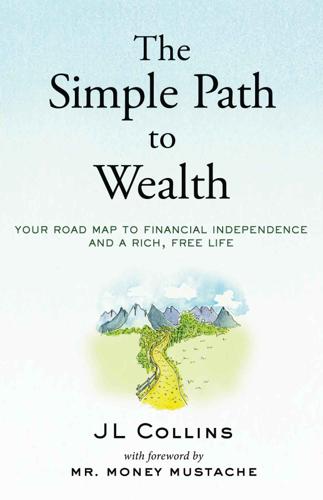
The Simple Path to Wealth: Your Road Map to Financial Independence and a Rich, Free Life
by
J L Collins
Published 17 Jun 2016
OK, let’s be clear. If the world had ended on December 21, 2012 as the Mayan Calendar suggested it might, everything you had invested in Vanguard (or elsewhere) would have gone up in smoke. But, of course, that didn’t happen. If a giant meteor slams into Earth setting the world on fire followed by a nuclear winter, your investments are toast. If space aliens arrive and enslave us all—unless you bought human feedlot futures—it’s gonna mess up your portfolio. But unlikely and beyond our control, not to mention the scope of this book. That said, lesser disasters can and do happen. Vanguard is based in Malvern, Pennsylvania.
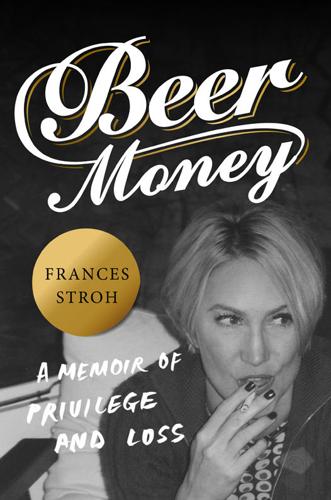
Beer Money: A Memoir of Privilege and Loss
by
Frances Stroh
Published 2 May 2016
The fur rippled rhythmically, and I wondered if it might still be alive, but Caitlin’s sweater was rippling, too. Everything with texture was alive. I imagined thousands of rats all around us, rambling through sewer pipes or thrashing their tails inside little holes in the ground. I’d read a book once about the apocalypse that said only rats and cockroaches would survive a nuclear winter. They’d proliferate and take over the earth for millions of years until new species evolved. Even now, I thought I could feel things crawling on me. I scratched my arms up and down until I’d begun to produce welts. A door slammed from somewhere inside the plant, and the sound ricocheted off the buildings in the silence.
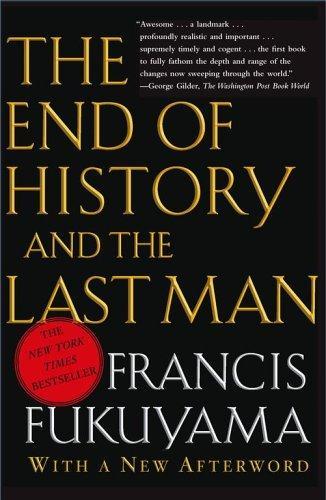
The end of history and the last man
by
Francis Fukuyama
Published 28 Feb 2006
Our deepest thinkers have concluded that there is no such thing as History—that is, a meaningful order to the broad sweep of human events. Our own experience has taught us, seemingly, that the future is more likely than not to contain new and unimagined evils, from fanatical dictatorships and bloody genocides to the banalization of life through modern consumerism, and that unprecedented disasters await us from nuclear winter to global warming. The pessimism of the twentieth century stands in sharp contrast to the optimism of the previous one. Though Europe began the nineteenth century convulsed by war and revolution, it was by and large a century of peace and unprecedented increases in material well-being. There were two broad grounds for optimism.
…
But is it possible to destroy modern natural science itself, to release us from the grip that the scientific method has held over our lives, and return mankind as a whole permanently to a pre-scientific level of civilization?4 Let us take the case of a global war involving weapons of mass destruction. Since Hiroshima we have envisioned this as a nuclear war, but it could now be the result of some new and terrible biological or chemical agent. Assuming that such a war does not trigger nuclear winter or some other natural process that makes the earth completely uninhabitable by man, we must assume that the conflict will destroy much of the population, power, and wealth of the belligerents, and perhaps of their major allies, with devastating consequences for neutral onlookers as well. There may be major environmental consequences that would make the military catastrophe merge with an ecological one.
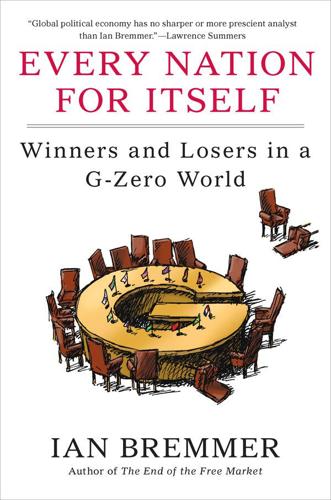
Every Nation for Itself: Winners and Losers in a G-Zero World
by
Ian Bremmer
Published 30 Apr 2012
U.S. politicians championed a new form of manifest destiny, one in which an exceptional, ascendant superpower would inspire followers on every continent to remake the world in America’s image. Russia, heart of the Soviet empire, was invited to expand the G7 to a G8 to ensure that Moscow did not lurch back toward communism or turn to military rule. The Wall fell, and fears of nuclear winter gave way to a promising spring. But Cold War victory restored neither international harmony nor American preeminence. Instead, it simply speeded the rise of a new generation of increasingly self-confident emerging-market countries, each with its own values and vulnerabilities. From the ashes of the Soviet Union itself came fifteen new states.
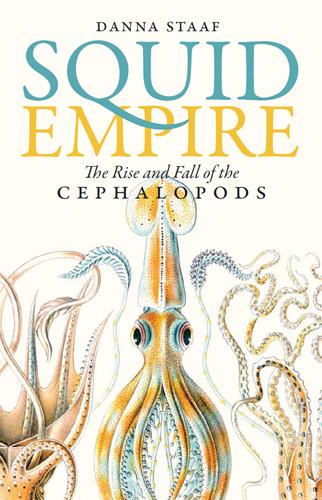
Squid Empire: The Rise and Fall of the Cephalopods
by
Danna Staaf
Published 14 Apr 2017
Scientists calculate that the crater-producing meteor must have been at least six miles in diameter, which means it could have comfortably contained Mount Everest (if the great peak had existed back then—since India was still an island, Everest had not yet protruded from the planet). The impact had impacts both short- and long-term on every habitat—except the deep sea. Earth’s surface was cooked for a few minutes by the reentry heat of particles that had been thrown out into space. Gases released into the atmosphere caused an “impact winter” in subsequent years (like the nuclear winter hypothesized by science fiction writers of the mid-1900s), as well as acid rain that dramatically changed the surface chemistry of the oceans.8 Obviously, if you happened to live at the end of the Cretaceous, you got a pretty raw deal. But the question that remains is how changes like these led to the specific changes we see in the fossil record.
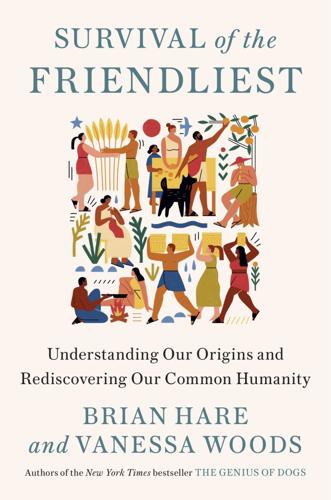
Survival of the Friendliest: Understanding Our Origins and Rediscovering Our Common Humanity
by
Brian Hare
and
Vanessa Woods
Published 13 Jul 2020
Eisenhower stormed into the room, snatched the toys from his grandchildren, and stormed out. Those were the first, frightening days of nuclear weapons. Bombs were being built that were a thousand times more powerful than the atom bomb that was dropped on Hiroshima. People built bomb shelters in their backyards and stockpiled food for a nuclear winter. Mary found out later that on the balcony, in full view of the children playing with their new toys, Khrushchev had pulled Eisenhower close and whispered, “I’ll see your grandchildren buried.” Mary cried and begged for the doll back, and her grandfather, being a soft touch, gave it to her.
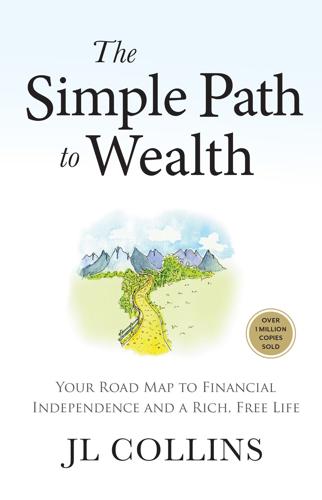
The Simple Path to Wealth (Revised & Expanded 2025 Edition): Your Road Map to Financial Independence and a Rich, Free Life
by
JL Collins
OK, let’s be clear. If the world had ended on December 21, 2012, as the Mayan calendar suggested it might, everything you had invested in Vanguard (or elsewhere) would have gone up in smoke. But, of course, that didn’t happen. If a giant meteor slams into Earth, setting the world on fire, followed by a nuclear winter, your investments are toast. If space aliens arrive and enslave us all—unless you bought human feedlot futures—it’s gonna mess up your portfolio. But these are unlikely and beyond our control, not to mention the scope of this book. That said, lesser disasters can and do happen. Vanguard is based in Malvern, Pennsylvania.

Extreme Money: Masters of the Universe and the Cult of Risk
by
Satyajit Das
Published 14 Oct 2011
Some 65 million years ago, the impact of an asteroid in Mexico, equivalent to an explosion of 100 million tons of TNT, created the Chicxulub crater, 120 miles (180 kilometers) in diameter. 300,000 years later (an eye blink in geological time), a second much larger celestial object, named Shiva, the Indian God of destruction, hit India with a force estimated at 100 times that of the Chicxulub asteroid, creating a 310-mile (500-kilometre) crater. Debris ejected into the atmosphere shut out the sun, creating a nuclear winter that prevented photosynthesis by plants, slowly starving most life and leading to the extinction of millions of species, including dinosaurs. Something similar had happened to the global economy. A lack of money slowly caused normal economic activity to stop. Money was the oil lubricating the economy.
…
See Jack Welch Never Never, 67 new austerity, 357 New Century Financial, 195, 202 New Scientist, 363 New York as a financial center, 78-79 FiDi (Financial District), 80 New York Stock Exchange (NYSE), 80 New York Times, The, 120, 196 Ayn Rand, 297 Michael Milken, 152 newspapers, 89-91 Nicholson, Eddy, 134 Nietszche, Frederich, 300 NINJA borrowers, 70 Nintendo DS, 40 NIVA (no income verified assets) loans, 182 Nixon, Richard M., 31, 104, 342 Nobel prize in Economics, 104 Black and Scholes, 122 nolo contendere (no contest), 150 normal distributions, 126 Norris, Stephen, 154 North Korea, 24 Northern Rock, 200, 205 Norway, 221 Noyer, Christian, 228 nuclear war, 34 nuclear winter, 339 O O’Neal, Stan, 178, 201, 291, 315, 319, 330 O’Neill, Eugene, 46 O’Neill, Jim, 90 O’Rourke, P.J., 293 Obama, Barack, 215, 325, 342, 358, 362 objective truths, 130 objects d’art, 176 Och, Daniel, 318 Och-Ziff Capital Management, 318 Oddsson, David, 275, 279 off-balance sheets, 190, 288 off-market interest, 224 oil, 57 banks, 57 petro-dollars, 82 rise in prices, 334, 337-338 Old Lane Partners, 319 Olso, Mancur, 294 Once in a Lifetime, 46 One Market, One God, 129 one-touch, 211 Onex Group, 156 Onion, The, 341, 361 opacity, 61 Oppenheimer, Robert, 339 options, 182, 209 Orange County, collapse of, 283 Organisation, The, 296 originate and hide, 270 originate-to-distribute models, 68 Orman, Suze, 92-93 Orwell, George, 365 Orzag, Peter, 358 Osgood, Charles, 353 Other People’s Money, 21, 40, 64 over-collateralization, 169 overcapitalization, 54 oversight, 290 Oversight Panel Report, 340 Oxley, Michael G., 154 P PAC (planned amortization class) bonds, 178 Pacioli, Luca, 285 Packard, Vance, 43 Paille, Antoine, 228 Paine, Thomas, 36 PaineWebber, 201 Pakistan, 22 Palin, Sarah, 95 Pandit, Vikram, 290, 319, 346 panic, markets, 340-341 paper losses, 203 paper money, 27-28.

Valley of Genius: The Uncensored History of Silicon Valley (As Told by the Hackers, Founders, and Freaks Who Made It Boom)
by
Adam Fisher
Published 9 Jul 2018
Everyone was just scraping by. Sean Parker: It went from being the center of the universe and all these bright-eyed, bushy-tailed people showing up from all over the country and reading Wired magazine cover stories about all of the young people who were emigrating to Silicon Valley to seek their fortune—to nuclear winter. Only the cockroaches survive, and you’re one of the cockroaches. Mark Pincus: San Francisco was a shell of a city, and all these people had come in and they left and all these companies had collapsed. It was very drastic. Po Bronson: All this money was gone and then there were investor lawsuits and then there wasn’t even the money to fund the investor lawsuits; it just all kind of became barren.
…
A good lead is a job, an interview, a date, an apartment, a house, a couch… And so Reid and I started saying, “Wow, this people web could actually generate something more valuable than Google, because you’re in this very, very highly vetted community that has some affinity to each other, and everyone is there for a reason, so you have trust.” The signal-to-noise ratio could be be very high. We called it Web 2.0, but nobody wanted to hear about it, because this was in the nuclear winter of the consumer internet. Sean Parker: So during the period between 2000 and 2004, kind of leading up to Facebook, there is this feeling that everything that there was to be done with the internet has already been done. The absolute bottom is probably around 2002. PayPal goes public in 2002, and it’s the only consumer internet IPO.
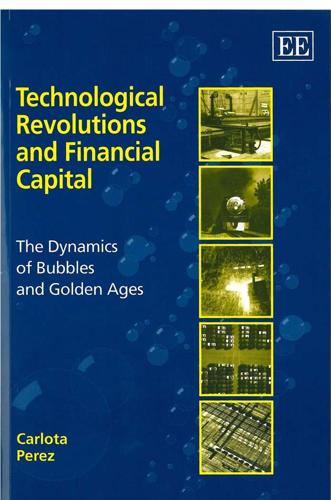
Technological Revolutions and Financial Capital: The Dynamics of Bubbles and Golden Ages
by
Carlota Pérez
Published 1 Jan 2002
The impact in Europe was delayed, but then accelerated by the consequences of the terrorist acts of September 11th, 2001. For entrepreneurs, venture capitalists and investors riding the eternally rising wave of capital gains in NASDAQ, the shock was severe. No explanation could be satisfying. A year later a venture capitalist in Silicon Valley said to The Financial Times that 2001 had been like a ‘nuclear winter’.181 Yet, just looking at the behavior of the index, as shown in Figure 11.1, should have been enough to warn of impending disaster. Chris Freeman was one of many economists arguing the inevitable outcome in his paper on ‘A Hard Landing for the “New Economy”’, 182 though he was one of the very few connecting the likely collapse with technical and institutional change issues.
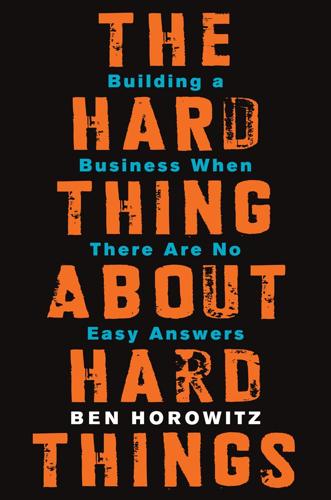
The Hard Thing About Hard Things: Building a Business When There Are No Easy Answers
by
Ben Horowitz
Published 4 Mar 2014
It was a very hard thing for him to say and only the best of friends will muster the courage to break news that horrible. It was an even harder thing for me to hear. He told me so that I could emotionally prepare myself and financially prepare the company for the inevitable funeral. The odds of landing a company-saving deal during the technology industry’s nuclear winter were close to nil. Chances were, I was dead. I never built that contingency plan. Through the seemingly impossible Loudcloud series C and IPO processes, I learned one important lesson: Startup CEOs should not play the odds. When you are building a company, you must believe there is an answer and you cannot pay attention to your odds of finding it.
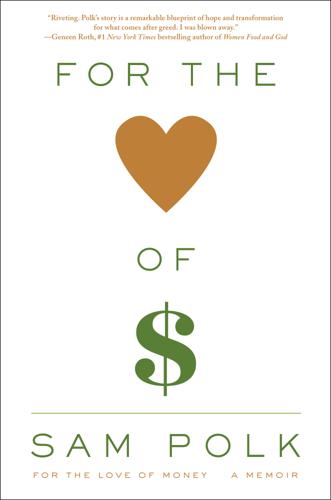
For the Love of Money: A Memoir
by
Sam Polk
Published 18 Jul 2016
While my performance was weak, there were small victories. I didn’t miss another day of work. I worked out every single morning, ate salads instead of burgers. I talked to Linda or went to a meeting almost every day. Amidst the devastation of my life, I collected these small achievements. They felt important, somehow—the first green shoots after a nuclear winter. I was, for once, more focused on taking care of myself than on fitting in or impressing people. But it was more than that. Over the past few years, every story I’d told about myself—Sam the wrestler, Sam the Columbia student, Sam the Internet entrepreneur—had been smashed. Now, stripped of the one person I loved, my Wall Street story falling apart, I began to understand that those narratives didn’t define me.

I Hate the Internet: A Novel
by
Jarett Kobek
Published 3 Nov 2016
When Baby was writing Annie Zero, he needed a conceptual space for the French Neo-Maoists to stage battles against the entrenched social order. Because Baby was realistic about the future, he couldn’t conceive of a world in which these battles happened in any traditional context. So he invented the Megaverse. In Annie Zero, after global warming and an accidental nuclear winter, all the world’s citizens live out their lives in the Megaverse. The Megaverse was a significantly upgraded version of an old online multiplayer roleplaying game called Ultima Online. When the tattered shreds of the world government modded Ultima Online into the Megaverse, there were many notable enhancements, including wetware interfaces for biological needs like fucking, eating and shitting.
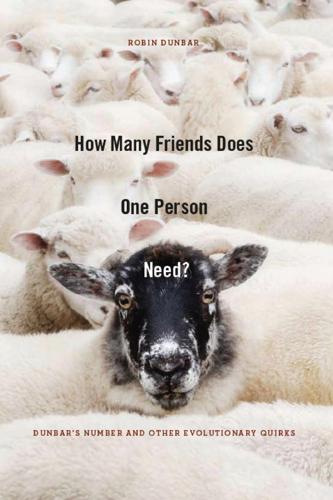
How Many Friends Does One Person Need? Dunbar’s Number and Other Evolutionary Quirks
by
Robin Dunbar
and
Robin Ian MacDonald Dunbar
Published 2 Nov 2010
Sometimes, however, environmental conditions conspire to produce a rapid burst of extinctions. Farewell, cousins... Sixty-five million years ago, a massive asteroid smashed into the corner of Mexico where the Yucatan peninsula now stands. The resulting fireball, combined with millions of tons of vaporised rock thrown up into the atmosphere, brought on a nuclear winter that changed the face of the earth for ever. As the planet slowly emerged from the catastrophe, it was to find that the dinosaurs who had [Page 143] dominated the planet for the previous 250 million years were fading fast. The dragon lords of the earth were being replaced by a small and insignificant group of animals –the mammals – that had previously skulked out of sight on the forest floor.
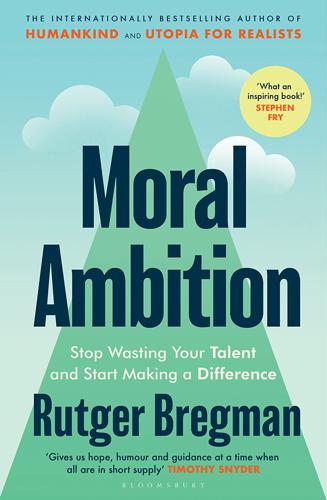
Moral Ambition: Stop Wasting Your Talent and Start Making a Difference
by
Bregman, Rutger
Published 9 Mar 2025
There are at least three looming dangers that get a lot less attention than climate change and urgently need people with moral ambition for that very reason. The first threat’s a familiar one. As I write this, over 3,000 nuclear weapons stand ready to be fired within minutes.10 A hundred or so are all it takes to cause a nuclear winter, the apocalyptic scenario where there’s so much dust in the atmosphere it blocks out the sun, the temperature on earth plummets, harvests fail, and billions of people starve to death.11 Experts estimate the odds of a nuclear weapon being used at 1 per cent per year.12 That may sound reassuring, but 1 per cent a year is 63 per cent in a century.13 More importantly, we’ve come close to nuclear conflict on a number of occasions.
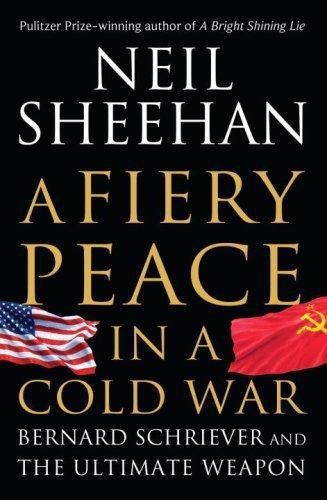
A Fiery Peace in a Cold War: Bernard Schriever and the Ultimate Weapon
by
Neil Sheehan
Published 21 Sep 2009
These ground-level bursts would hurl massive amounts of irradiated soil and the pulverized remains of masonry and concrete structures high into the upper atmosphere. The clouds of poisoned soil and debris would spread as they were carried around the earth by the upper atmospheric winds. One result would be a nuclear winter, a catastrophic change in climate of unknown duration, with frigid temperatures at the height of summer, because the dirt in the upper atmosphere would block out the sun’s rays. Agriculture, on which human beings depend for sustenance, would become impossible. Most animal and bird life would be extinguished because the plants, shrubs, and trees on which so many of these creatures depend would also die from the cold and lack of sunlight, without which plants cannot perform the photosynthesis process that nourishes them.
…
That alternative had to exist in case the president was incapacitated or beyond reach. Knowing the characters of LeMay and Power, one can again conclude that had an order to launch not been quickly forthcoming from the White House, they would not have waited. They would have turned everything loose and, in their ignorance of atmospheric radioactive fallout, nuclear winter, and the other doomsday aftereffects of nuclear war, destroyed the entire Northern Hemisphere. The recollection of a Russian officer who served in Cuba was that, if attacked, he and his comrades would have given LeMay and Power their opportunity. In October 1962, Viktor Yesin, who subsequently rose to colonel general and chief of staff of the Soviet Union’s Strategic Rocket Forces, was an engineer lieutenant with an R-12 missile regiment stationed near Calabazar de Sagua, about 160 miles east of Havana.
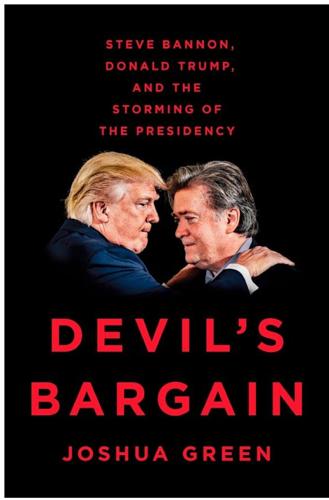
Devil's Bargain: Steve Bannon, Donald Trump, and the Storming of the Presidency
by
Joshua Green
Published 17 Jul 2017
Fox News, which aggressively promoted the Sherrod video, banned Andrew Breitbart as an on-air guest. By then, Bannon was actively involved in the site and its business. When the Sherrod story blew up, he was out raising money to expand and relaunch Breitbart News. With the negative publicity, and the taint of racism, he suddenly encountered “nuclear winter.” And yet Breitbart himself was immune to shame—or at least, to being shamed—and had no compunction about launching vicious personal attacks. Upon learning of Senator Ted Kennedy’s death, Breitbart tweeted that Kennedy was a “villain,” a “prick,” and a “duplicitous bastard,” adding: “I’m more than willing to go off decorum to ensure THIS MAN is not beatified.”
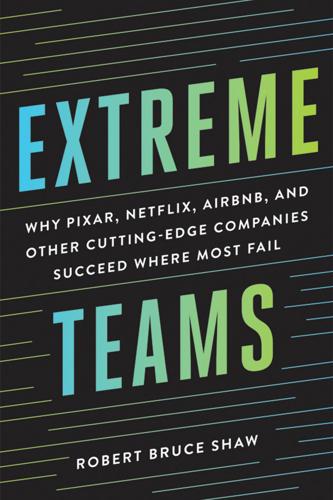
Extreme Teams: Why Pixar, Netflix, AirBnB, and Other Cutting-Edge Companies Succeed Where Most Fail
by
Robert Bruce Shaw
,
James Foster
and
Brilliance Audio
Published 14 Oct 2017
Aug 31, 2015 22See Geoff Colvin, (New York: Portfolio, 2008). 23Andre Agassi, (New York: Vintage, 2010). 24See the group’s website, www.workaholics-anonymous.org/. 25Xiao-Ping Chen, “Company Culture and Values Are the Lifelines of Alibaba: An Interview with Jack Ma, Founder and Executive,” Executive Perspectives, August 2013, www.iacmr.org/V2/Publications/CMI/LP021101_EN.pdf. 26Graham describes the best founders as being cockroach like—in that they will survive anything, including a nuclear winter, while others perish. See Airbnb, “Conversation with Paul Graham,” YouTube. www.youtube.com/watch?v=nrWavoJsEks. 27“Innovation lessons from Pixar: An interview with Oscar-winning director Brad Bird,” McKinsey Quarterly Hayagreeva Rao, Robert Sutton, and Allen P. Webb. April 2008. 28Anthony Lane, “The Fun Factory: Life at Pixar,” New Yorker, May 16, 2011.
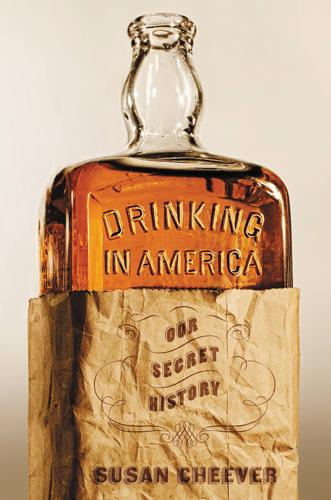
Drinking in America: Our Secret History
by
Susan Cheever
Published 12 Oct 2015
Truman fired Forrestal and Forrestal killed himself, jumping from his sixteenth-floor room at Bethesda Naval Hospital. What had Forrestal known? What if he had information that had been denied to the public? If the Russians weren’t about to land, they were armed to begin a catastrophic war that would lead to the end of the world. Nuclear winter was unavoidable. McCarthy’s license to attack, maim, and hurt the innocent began a politics of reaction to threats, which is very much a feature of our modern world. Since September 11, 2001, we have been living with the same kind of fear that characterized the 1950s. They were fighting a war on the terror of communism; we are fighting a war on the terror of jihad.
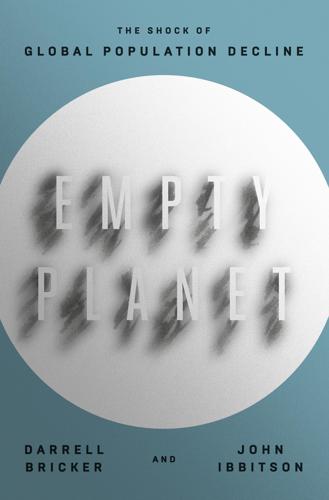
Empty Planet: The Shock of Global Population Decline
by
Darrell Bricker
and
John Ibbitson
Published 5 Feb 2019
There were only a few thousand humans left, maybe fewer, clinging to the shores of southern Africa, on the brink of oblivion.5 The catastrophic eruption of Mount Toba in Sumatra 70,000-odd years ago—there’s been nothing its equal since—spewed 2,800 cubic kilometers of ash into the atmosphere, spreading from the Arabian Sea in the west to the South China Sea in the east, and giving the earth the equivalent of six years of nuclear winter. Toba “is considered by some scientists to be the most catastrophic event the human species has ever endured.” 6Homo sapiens was already in trouble; although we had mastered tools and fire during our 130,000-year history to that point, the earth was in a cooling cycle that had wiped out much of the food supply.
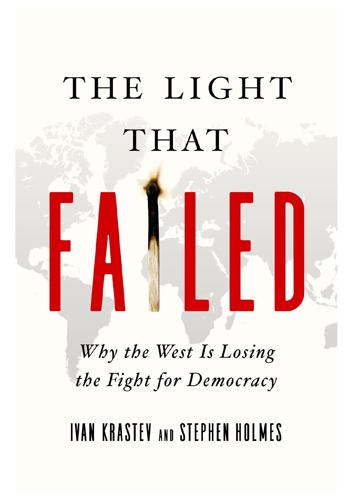
The Light That Failed: A Reckoning
by
Ivan Krastev
and
Stephen Holmes
Published 31 Oct 2019
Because they would be diverting their energies into becoming economic rather than military powerhouses, these two former enemies of America would be willing to forgo the development of nuclear weapons and would accept an American nuclear umbrella in exchange for joining America’s anti-Soviet system of alliances. Whatever else ‘the liberal world order’ represents, it includes the post-Second World War exclusion of Germany and Japan from the club of nuclear-armed nations. But Trump seems utterly unconcerned about nuclear winter or a Third World War. He has other dragons to slay, namely the stupendous successes of export-led economic growth in Germany and Japan after the Second World War and in China after the Cold War. America won the wars but lost the post-wars by exporting its capacity to export to foreign competitors.
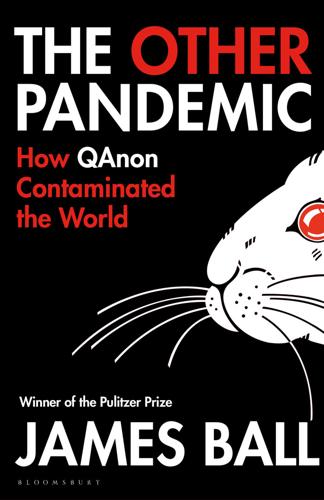
Other Pandemic: How QAnon Contaminated the World
by
James Ball
Published 19 Jul 2023
For him, the answer comes from looking at Cold War-era cults, which anticipated imminent nuclear war and centred around making plans for what would happen afterwards. These obviously involved immense suffering – the deaths of much (if not most) of society during the initial attacks, hardships from fallout and nuclear winter, and so on. But people also imagined different societies afterwards: such as a romanticised return to their vision of hunter-gathering, with everyone knowing their place. Or they could picture a world in which alpha males (like them?) could have easy access to women – it being everyone’s duty to repopulate humanity.
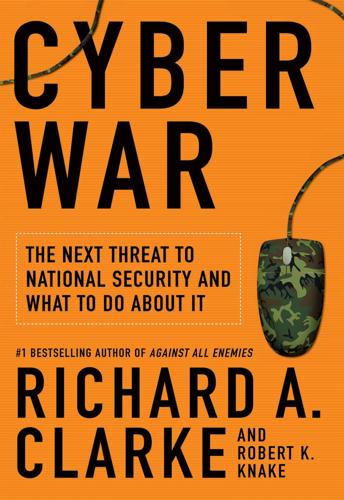
Cyber War: The Next Threat to National Security and What to Do About It
by
Richard A. Clarke
and
Robert Knake
Published 15 Dec 2010
Thus, there was near certainty that by one side’s using nuclear weapons, it was inviting some degree of its own nuclear destruction. What would happen after a massive exchange of nuclear weapons was subject to debate, but few doubted that the two nuclear combatants would have inflicted on each other a level of damage unparalleled in human history. Many believed a large-scale exchange would trigger a “nuclear winter” that could cause the end of all human life. Almost all experts believed that a large-scale exchange by the two superpowers would cause what were termed “prompt deaths” in the scores of millions. (Kahn dryly noted, “No one wants to be the first to kill a hundred million people.”) Any use of nuclear weapons, it was feared, could escalate unpredictably into large-scale use.
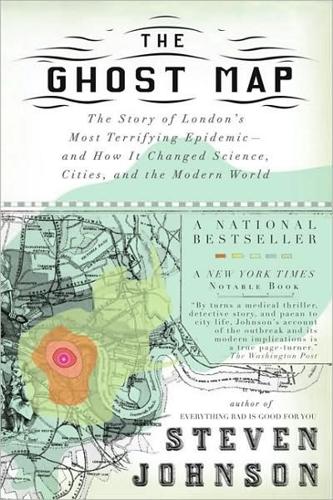
The Ghost Map: A Street, an Epidemic and the Hidden Power of Urban Networks.
by
Steven Johnson
Published 18 Oct 2006
One such attack would probably not impede the metropolitan migration—after all, Hiroshima and Nagasaki didn’t stop Tokyo from becoming the world’s largest city. But several detonations might well tip the balance. Turn our metropolitan centers into genuine nuclear targets and you risk a whole other kind of “nuclear winter”: a season of mass exodus unrivaled in human history. It would be bad news, in other words. And this bad news is likely to arrive courtesy of a walk-on part on the world-historical stage, somebody driving a rigged SUV into Soho and pulling the trigger. There are 20,000 nuclear weapons in the world capable of inflicting this level of damage.
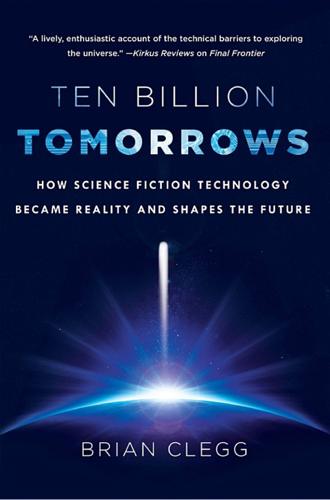
Ten Billion Tomorrows: How Science Fiction Technology Became Reality and Shapes the Future
by
Brian Clegg
Published 8 Dec 2015
We know that humanity has nearly been wiped out several times in the past as ice has crept down over the continents, and another ice age has presented a credible threat, whether as a natural resumption of the current ice age (we are just in a period of interglacial warming at the moment) or some kind of nuclear winter. But now, of course, the big chill has largely been replaced by global warming. So common is science fiction with a climate change theme at the moment, particularly for the young adult market, that it has been given a subcategory of its own, known as cli-fi. There is plenty to work on as a result of the dire warnings of the climate scientists.

The Allotment Chef: Home-Grown Recipes and Seasonal Stories
by
Paul Merrett
Published 3 Sep 2014
The allotments themselves are fascinating: some are beautifully laid out with rows of cabbages, beetroot, onions, potatoes; others appear to be totally neglected. Unfortunately, our plot is in the latter category. It is completely overgrown with brambles and something called cooch (or couch) grass, which I realise I shall have to find out about because Keith seems to feel its effect on growing is only marginally better than a nuclear winter. There is, however, a strip down the centre of our plot that has been cleared and covered with a plastic sheet. Keith tells us this was done the previous year by three Lithuanian students. I am not sure why this small strip among the forest of brambles and weeds was cleared or why the clearers were Lithuanian, but it does seem obvious that the reason we have been offered a plot at all is because it is not a plot at all.

I, Warbot: The Dawn of Artificially Intelligent Conflict
by
Kenneth Payne
Published 16 Jun 2021
In the early days of the Cold War, the US rolled out an early warning system, designed to deliver advance notice of incoming Soviet missiles. There was no way to shoot these down, and civil defence measures offered only limited prospects of success. Analysts calculated that millions would die in the initial blasts, and millions more from radioactive fallout in the weeks to come, as a ‘nuclear winter’ set in. But if the missiles could be reliably detected, at least there was a chance of protecting key decision-makers and of issuing orders to retaliate. A robust early warning system bolstered deterrence, because it strengthened the likelihood that a ‘second strike’ retaliation would be mounted.
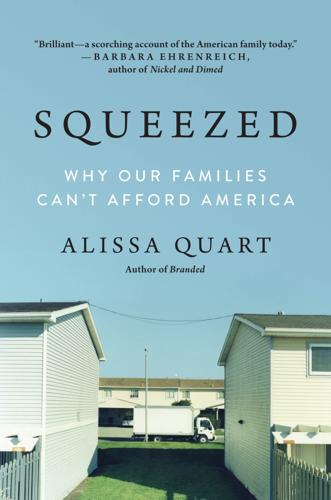
Squeezed: Why Our Families Can't Afford America
by
Alissa Quart
Published 25 Jun 2018
Even though automated tax preparation may one day make doing your taxes cheaper, it’s also ultimately another bit of code that reprograms America’s middle class out of existence. I’m reminded of the Ray Bradbury short story “There Will Come Soft Rains,” about a computer-controlled house on a morning in 2026. No living residents remain in this rich and empty home after an unspecified catastrophe, perhaps a nuclear winter, but programmed toasters and robotic house cleaners still tend to the daily chores for a nonexistent family. (The story made quite an impression on me as a preteen.) However, this potential reprogramming of the middle class partially out of existence doesn’t seem to bother everyone. “We see the robot as a tool for automation,” Anthony Melanson, the marketing doyen of the TUGs maker Aethon, told me.
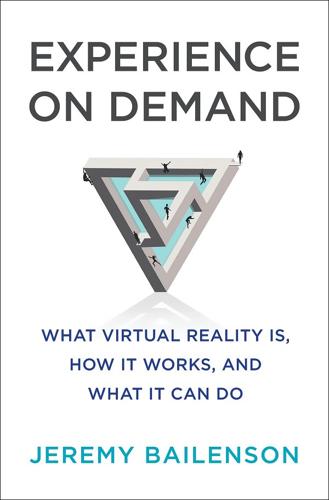
Experience on Demand: What Virtual Reality Is, How It Works, and What It Can Do
by
Jeremy Bailenson
Published 30 Jan 2018
The interface was hard to control. I got stuck in a wall because of bad collision detection. It was nothing at all like what I’d thought.” But the potential was there. And after considering how quickly computers were advancing, he figured that by 2000 it would be in good shape. Then came what Skip describes as the “nuclear winter” of VR, the post-hype Dark Ages of the late ’90s, in which VR all but disappeared from the public imagination while researchers like Skip experimented in the cloisters of universities and corporate labs. At that point, Skip was using VR to treat Alzheimer’s patients by doing innovative research in virtual object manipulation and developing training scenarios for kids with ADHD.
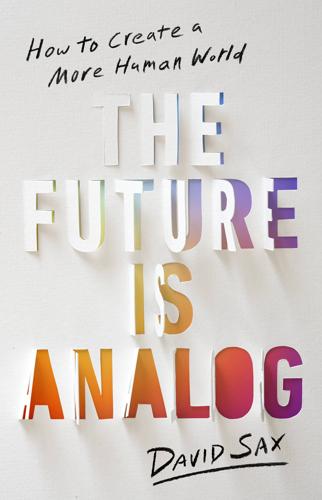
The Future Is Analog: How to Create a More Human World
by
David Sax
Published 15 Jan 2022
The vibe was loud and bustling, as couples and friends sat tightly packed in the converted auto garage, eating parsley-flecked golden falafel and creamy baked ground lamb to a soundtrack of indie rock and full-throated laughter. Though I was nursing the beginning of what felt like a cold, we ate and drank like we knew it would be a long time until we could do this again. If retail stores faced a nuclear winter from shopping restrictions and Amazon competition, restaurants took the asteroid hit head-on. For places like Parallel, there was nowhere to hide. Dining in wasn’t just impractical; it was illegal. A restaurant could have the best chefs and managers, a stellar reputation, loyal customers, and plenty of cash in the bank, but without a way to serve food, it was as good as dead.
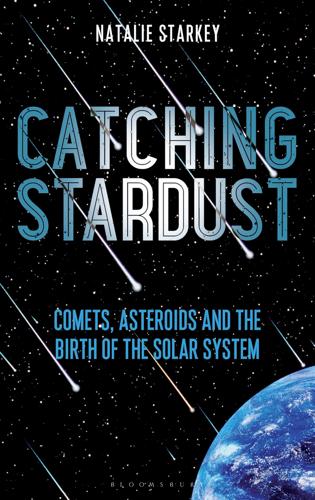
Catching Stardust: Comets, Asteroids and the Birth of the Solar System
by
Natalie Starkey
Published 8 Mar 2018
Scientists think that the demise of the dinosaurs was caused by a large meteor strike that changed our planet’s atmosphere forever, throwing up huge amounts of debris when it impacted Earth’s surface with such immense force that it would have melted the bedrock. The fragile ecosystems of our planet couldn’t cope with this colossal shock any better today than they did in the era of the dinosaurs. Day becomes night, causing what scientists refer to as a ‘nuclear winter’. Although the dinosaurs were the largest group of animals to go extinct 65 million years ago, the impact and ensuing chaos eventually led to the extinction of around 80 per cent of all animals living on Earth at the time. We take for granted that our daily lives go on as they do thanks to the rotation of our planet and its journey around the Sun, meaning we experience day and night, and seasons that provide the more fortunate of us with plentiful food and resources to survive.
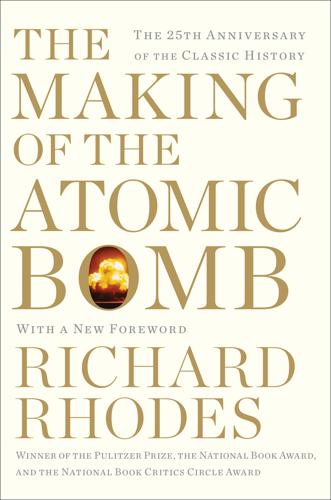
The Making of the Atomic Bomb
by
Richard Rhodes
Published 17 Sep 2012
We will confront such risk again, and may we be so lucky the next time, and the next after that. Or perhaps the disaster will break in some other hemisphere and the millions who will die will fall under another flag. It won’t take much to involve the rest of us even at a ten-thousandmile remove. In 2008, some of the scientists who modeled the original 1983 nuclear winter scenario investigated the likely result of a theoretical regional nuclear war between India and Pakistan, a war they postulated to involve only 100 Hiroshima-scale nuclear weapons, yielding a total of only 1.5 megatons—no more than the yield of some single warheads in the U.S. and Russian arsenals.
…
Phys. 32:10. 1964.) Haldane, J. B. S. 1925. Callinicus. Dutton. Harris, Benedict R., and Marvin A. Stevens. 1945. Experiences at Nagasaki, Japan. Conn. St. Medical Journal 12:913. Harrisson, Tom. 1976. Living Through the Blitz. Collins. Harrod, R. F. 1959. The Prof. Macmillan. Harwell, Mark A. 1984. Nuclear Winter. Springer-Verlag. Hashimoto, Mochitsura. 1954. Sunk. Henry Holt. Haukelid, Knut. 1954. Skis Against the Atom. William Kimber. Hawkins, David. 1947. Manhattan District History, Project Y, The Los Alamos Project, v. I. Los Alamos Scientific Laboratory. Heibut, Anthony. 1983. Exiled in Paradise.
…
Planck, Max. 1949. Scientific Autobiography. Philosophical Library. Polanyi, Michael. 1946. Science, Faith and Society. University of Chicago Press. ——. 1962. The Republic of Science. Roosevelt University. Pound, Reginald. 1964. The Lost Generation of 1914. Coward-McCann. Powers, Thomas. 1984. Nuclear winter and nuclear strategy. Atlantic. Nov. Prange, Gordon W. 1981. At Dawn We Slept. Penguin. Prentiss, Augustin M. 1937. Chemicals in War. McGraw-Hill. The Protocols of the Meetings of the Learned Elders of Zion. 1934. Trans. Victor E. Marsden, n.p. Purcell, Edward M. 1964. Nuclear physics without the neutron: clues and contradictions.

On the Edge: The Art of Risking Everything
by
Nate Silver
Published 12 Aug 2024
There’s also a well-equipped top-secret bunker under the White House, but at best you’ll emerge from it into a radioactive wasteland. You’re the American president, and you have fifteen minutes to decide whether to nuke the Russians back. Do you push the button? Strict rationality might dictate no. Why not let Russian citizens take their chances and the billionaires in New Zealand ride out the nuclear winter? You’ll be dead anyway. Or if not, whatever slim chances you have depend on de-escalating the conflict or hoping there’s been some kind of computer glitch. Your EV is negative 1 billion, but if you push the button, it declines to negative infinity. What do you do? My prediction is that about 90 percent of you would push the button.
…
*15 Putin, for instance, underestimated Ukraine’s resolve and NATO’s determination to support it through security assistance. *16 A nuclear weapon being used in combat isn’t the same thing as the destruction of civilization. But a full-scale nuclear war would be extremely bad. It might not mean the literal destruction of humanity—this depends on how you model the effects of nuclear winter, meaning the prolonged and pronounced climatic cooling that would occur because of the soot that would be ejected into the stratosphere from nuclear firestorms. “The idea that it would bomb us back to the Stone Age, and we’d never get out again, is pretty accurate,” said Paul Edwards, a Stanford climatologist who teaches a class on existential risk
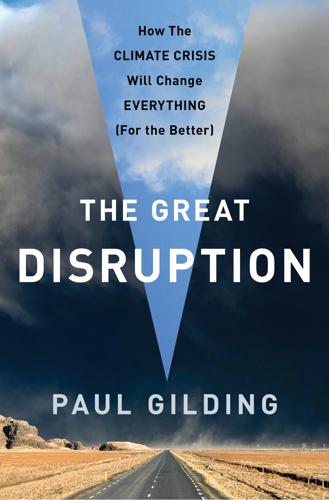
The Great Disruption: Why the Climate Crisis Will Bring on the End of Shopping and the Birth of a New World
by
Paul Gilding
Published 28 Mar 2011
It provided a deep and direct understanding of the idea of intergenerational impact and that we humans could easily and irreversibly affect the entire planetary system. I think some people today still struggle to believe we really have the power to damage the earth’s environment as a whole. Sure, we could destroy a river here and a forest there, but the planet is so big, surely we couldn’t wreck it all? The prospects of a nuclear winter—a sudden global cooling triggered by a massive nuclear holocaust coating the planet with fine dust particles—showed that in fact, yes, we could, and with just a few buttons and phone calls. It was a sobering time. We had learned to understand the implications of Rachel Carson’s comment that we had “now acquired a fateful power to destroy nature.”
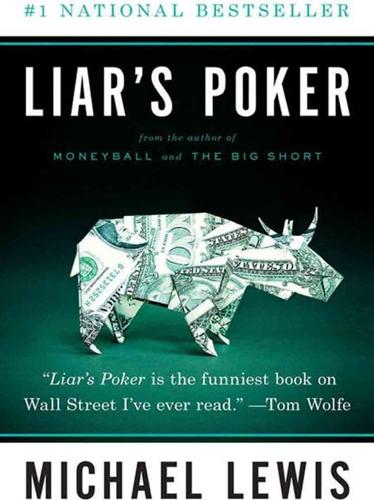
Liar's Poker
by
Michael Lewis
Published 1 Jan 1989
Huge trees snapped, power lines fell, and windows shattered from about 2:00 A.M. until dawn. Commuting into work was positively eerie. The streets were empty, and shops normally open were boarded shut. A crowd huddled beneath the awning of Victoria Station, going nowhere The trains did not run. It looked like an ABC miniseries on nuclear winter or perhaps a scene from The Tempest. Caliban could not have chosen a better day to roar. It was a bad day for 170 people in our office. People struggled over fallen trees, treacherous roads, and water hazards to make their way into work only to find, at the end of the steeplechase, no job. Others suffered slow torture, waiting literally in the dark for hours before they learned of their unemployment.

Only Humans Need Apply: Winners and Losers in the Age of Smart Machines
by
Thomas H. Davenport
and
Julia Kirby
Published 23 May 2016
Ode to AI Spring For the sellers of smart machines, if we may slightly paraphrase Gerard Manley Hopkins, nothing is so beautiful as AI spring. The observation that artificial intelligence has its seasons of enthusiasm and also (in AI winter) of despair has become commonplace; by most accounts, the term “AI winter” was first coined as an allusion to nuclear winter, a level of devastation that seemed analogous when a slew of AI-related companies that had been founded in the 1970s all went bust in the early 1980s. By later in that same decade, a thaw was beginning. (In 1988, for example, Time magazine had AI back on its cover with an in-depth story called “Putting Knowledge to Work.”)
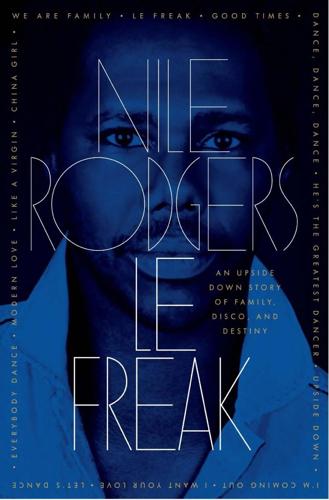
Le Freak: An Upside Down Story of Family, Disco, and Destiny
by
Nile Rodgers
Published 17 Oct 2011
I became accustomed to hearing myself talk on TV and radio, and would even go to DJ booths and shout out to the crowd on the dance floor. Though Chic rarely played clubs (which couldn’t accommodate a band of our size), clubs all around the country welcomed us with open arms as guests. This was not just limited to the hip clubs of New York, where new ones seemed to open nightly; club life was spreading around the world like nuclear winter. Our music was crossing over into every sector of society. We played in places that didn’t usually have live black acts. One town we played in hadn’t had a public pop concert (black or white) since Elvis had caused a riot two decades earlier. Chic not only played there, we got a police escort.
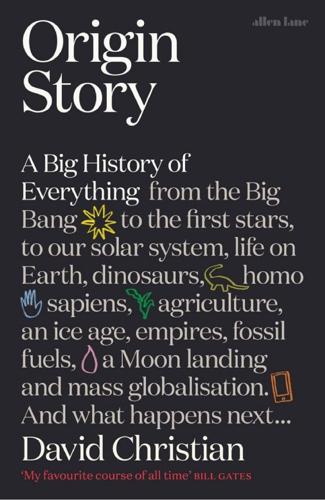
Origin Story: A Big History of Everything
by
David Christian
Published 21 May 2018
In the Hell Creek Formation, in Montana and Wyoming, you can find fossils of fish whose gills are full of glass from the asteroid impact.22 Farther away, the immediate impacts were less extreme. But within weeks, the whole biosphere had changed. Soot blocked sunlight, creating what we might describe today as a nuclear winter. Nitric acid rained from the sky, killing most of the organisms it touched. The surface of Earth would have been in total darkness for a year or two, shutting down photosynthesis, life’s lifeline to the sun. When the dust thinned, and light began to return through the haze, Earth warmed fast, because the atmosphere now contained a lot more carbon dioxide and methane.
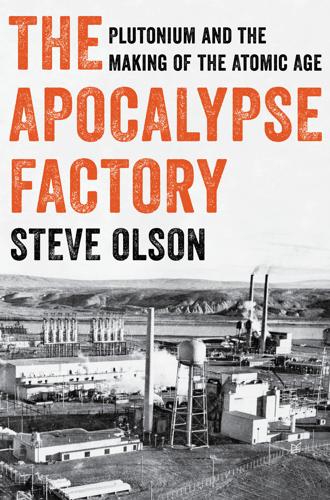
The Apocalypse Factory: Plutonium and the Making of the Atomic Age
by
Steve Olson
Published 28 Jul 2020
“Hanford and History,” keynote address at the B Reactor 60th Anniversary Banquet. Available at http://b-reactor.org/b-reactor-60th-anniversary-address. ———. 2007. Arsenals of Folly: The Making of the Nuclear Arms Race. New York: Alfred A. Knopf. ———. 2018. Energy: A Human History. New York: Simon & Schuster. Robock, Alan, Luke Oman, and Georgiy L. Stenchikov. 2007. “Nuclear winter revisited with a modern climate model and current nuclear arsenals: Still catastrophic consequences.” Journal of Geophysical Research: Atmospheres 112:D13107. Rotblat, Joseph. 1989. Interview by Martin J. Sherwin, October 16, London. Voices of the Manhattan Project. Available at https://www.manhattanprojectvoices.org/oral-histories/joseph-rotblats-interview.
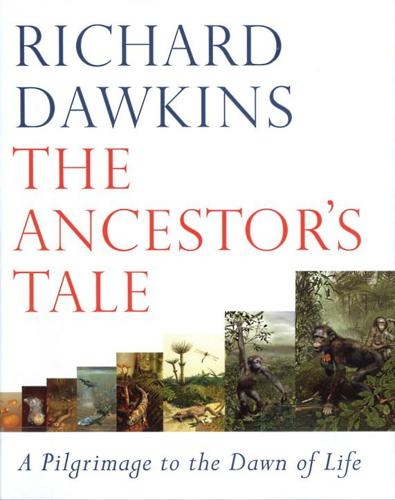
The Ancestor's Tale: A Pilgrimage to the Dawn of Evolution
by
Richard Dawkins
Published 1 Jan 2004
The noise of the impact, thundering round the planet at a thousand kilometres per hour, probably deafened every living creature not burned by the blast, suffocated by the wind-shock, drowned by the 150-metre tsunami that raced around the literally boiling sea, or pulverised by an earthquake a thousand times more violent than the largest ever dealt by the San Andreas fault. And that was just the immediate cataclysm. Then there was the aftermath -- the global forest fires, the smoke and dust and ash which blotted out the sun in a two-year nuclear winter that lolled off most the plants and stopped dead the world's food chains. No wonder all the dinosaurs, with the notable exception of the birds, perished -- and not just the dinosaurs, but about half of all other species too, particularly the marine ones.* The wonder is that any life at all survives these cataclysmic visitations.
…
Both catastrophes, and the others that have also occurred, must have been extremely unpleasant for them, and they survived by the skin of their teeth, possibly deaf and blind but just capable of reproducing, otherwise we wouldn't be here. Perhaps they were hibernating at the time, and didn't wake up until after the nuclear winter that is thought to follow such catastrophes. And then, in the fullness of evolutionary time, they reaped the benefits. In the case of the Cretaceous survivors, there were now no dinosaurs to eat them, no dinosaurs to compete with them. You might think there was a down side: no dinosaurs for them to eat.
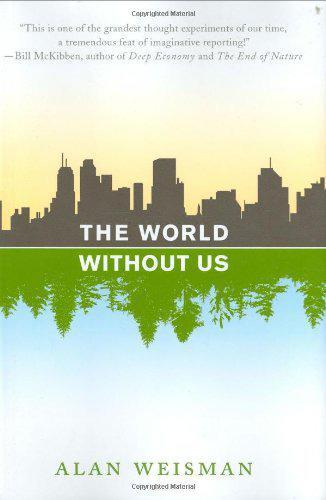
The World Without Us
by
Alan Weisman
Published 5 Aug 2008
But imagine a runaway reaction with burning plants throwing up clouds of stuff like hydrogen cyanide. There would be a massive poisoning of the air in the Texas-Louisiana chemical alley. Follow the trade winds and see what happens.” All those particulates in the atmosphere, he imagines, could create a mini chemical nuclear winter. “They would also release chlorinated compounds like dioxins and furans from burning plastics. And you’d get lead, chromium, and mercury attached to the soot. Europe and North America, with the biggest concentrations of refineries and chemical plants, would be the most contaminated. But the clouds would disperse through the world.
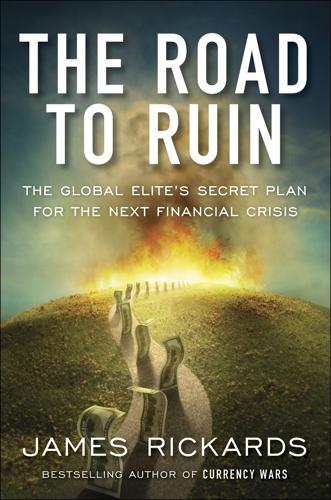
The Road to Ruin: The Global Elites' Secret Plan for the Next Financial Crisis
by
James Rickards
Published 15 Nov 2016
The novel’s plot turns on the fact that if the ice-nine is released from the vials, and put in contact with a large body of water, the entire water supply on earth—rivers, lakes, and oceans—would eventually become frozen solid and all life on earth would cease. This was a doomsday scenario appropriate to the times in which Vonnegut wrote. Cat’s Cradle was published just after the Cuban Missile Crisis, when the real world came dangerously close to nuclear annihilation, what scientists later called nuclear winter. Ice-nine is a fine way to describe the power elite response to the next financial crisis. Instead of reliquefying the world, elites will freeze it. The system will be locked down. Of course, ice-nine will be described as temporary the same way President Nixon described the suspension of dollar-to-gold convertibility in 1971 as temporary.

Genius Makers: The Mavericks Who Brought A. I. To Google, Facebook, and the World
by
Cade Metz
Published 15 Mar 2021
So the government cut funding across the field, ushering in what researchers would later call an “AI winter.” This was when the hype that built up behind high-minded notions of artificial intelligence ran into the field’s modest technological gains, leading concerned government officials to pull back on additional investment, which slowed progress even further. The analogy was a nuclear winter, when soot covers the skies after a nuclear war, blocking the rays of the sun for years on end. By the time Hinton was finishing his thesis, his research was on the fringes of a shrinking field. Then his father died. “The old bastard died before I was successful,” Hinton says. “Not only that, he got a cancer with a high genetic linkage.
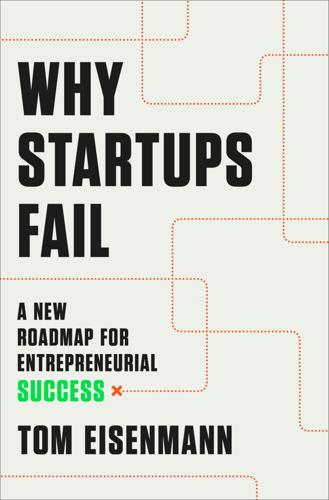
Why Startups Fail: A New Roadmap for Entrepreneurial Success
by
Tom Eisenmann
Published 29 Mar 2021
Several years ago, when startup valuations were booming, I worried that my current students—who were in middle school when the late 1990s Internet bubble burst—were launching startups without appreciating the implications of another industry bust. I feared they were running headfirst, like a herd, toward a bruising outcome. So, I wrote to a number of my former students who’d launched ventures during 1999 and 2000—almost all of which failed when nuclear winter set in. I asked them: Do you regret founding your startup? To my surprise, all but one alumni founder insisted they had no regrets whatsoever. Instead, they spoke about their pride in building a product, a team, and a business. They pointed to everything they had learned, and to the incredible experience they got from being a general manager, in charge of every aspect of their venture—with a level of responsibility that paled in comparison to what they would have had as an employee.
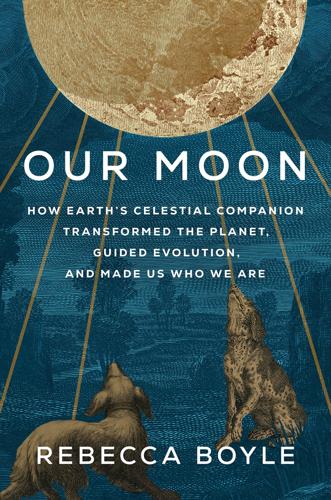
Our Moon: How Earth's Celestial Companion Transformed the Planet, Guided Evolution, and Made Us Who We Are
by
Rebecca Boyle
Published 16 Jan 2024
Around 2300 B.C.E., a volcano called Hekla, in southern Iceland, blew its top. Later eruptions from this volcano are known to have cooled global temperatures for two decades. One such event is recorded in oak tree rings preserved in Irish bogs.3 Under an ash-choked sky, trees barely grew for eighteen years.4 Researchers have suggested conditions were akin to a nuclear winter, making agricultural life all but impossible in northern Scotland.5 Perhaps people viewed the cloudy sky as a bad omen. Maybe they thought they were being punished for their skywatching. Or maybe they could no longer see the Moon behind the haze, and thought it had gone, and so they abandoned their earthen monument.
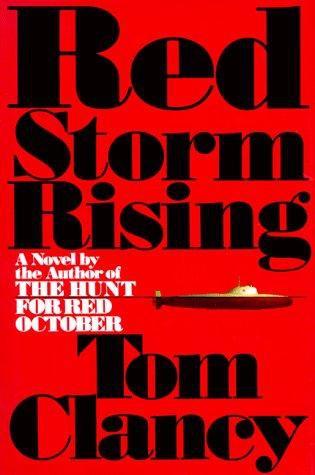
Red Storm Rising
by
Tom Clancy
Published 2 Jan 1986
"As you know, and to the disappointment of the entire world, the ongoing arms negotiations in Vienna have made no significant progress for over a year, with each side blaming the other for the lack of it. "It is well known by peace-loving people the world over that the Soviet Union has never wished for war, and that only a madman would even consider nuclear war a viable policy option in our modem world of overkill, fallout, and 'nuclear winter.' " "Damn," muttered AP bureau chief Patrick Flynn. The Soviets scarcely acknowledged "nuclear winter" and had never mentioned the concept in so formal a setting. His antennae were already twitching at whatever there was in the wind. "The time has come for substantive reductions in strategic arms. We have made numerous, serious, sincere proposals for real arms reductions, and despite this the United States has proceeded with the development and deployment of its destabilizing, openly offensive weapons: the MX first-strike missile, so cynically called the 'Peacekeeper'; the advanced Trident D-5 first-strike sea-launched ballistic missile; two separate varieties of cruise missiles whose characteristics conspire to make arms control verification almost totally impossible; and of course, the so-called Strategic Defense Initiative, which will take offensive strategic weapons into space.
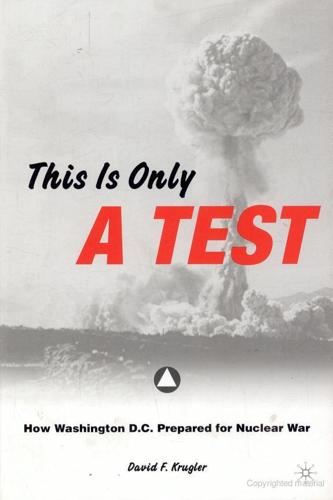
This Is Only a Test: How Washington D.C. Prepared for Nuclear War
by
David F. Krugler
Published 2 Jan 2006
Civil Defense Stalled,” WP, September 12, 1952; Engineer Commissioner memorandum, December 4, 1952, box 228, folder 4102, RG 351, BOC; DCD, Information Bulletin, September 29, 1952, Office of Civil Defense Memoranda Orders, Washingtoniana. “Public Apathy Still Cripples Defense Plans,” WS, June 8, 1951. Robert Jay Lifton, “Imagining the Real: Beyond the Nuclear ‘End,’ ” in Lester Grinspoon, ed., The Long Darkness: Psychological and Moral Perspectives on Nuclear Winter (New Haven, Conn.: Yale University Press, 1986), 79–99. Lewis Mumford, “Social Effects,” Air Affairs (March 1947): 370–82. Søren Kierkegaard, “The Sickness Unto Death,” in Robert Bretall, ed., A Kierkegaard Anthology (New York: Modern Library, n.d.), 344. Paul Boyer, By the Bomb’s Early Light: American Thought and Culture at the Dawn of the Atomic Age (New York: Pantheon Books, 1985), 293.

Human Frontiers: The Future of Big Ideas in an Age of Small Thinking
by
Michael Bhaskar
Published 2 Nov 2021
You couldn't predict 1948 very easily in 1938; but Enlightenment dreamers could still sense the potential and direction of history, the pressures of ideas mixing and igniting as conditions built on the ground, the drift of opinion, the weight of a big thought growing. Ultimately those deeper structural factors were what told, what enabled Roosevelt, Malik and the rest to do their work. It is to those structural factors, both impeding and spurring on ideas, that we now turn. Part II BIG IDEAS TOMORROW 5 The Idea Paradox The Other Nuclear Winter 3 September 1948, Oak Ridge, Tennessee It was a nervous day. Nuclear power was back. It had ended the Second World War, but its legacy was the mushroom cloud, radiation sickness and the threat of Armageddon. Could it have a better use? There was, hopefully, to be a literal lightbulb moment: a vast reactor, built under the greatest wartime secrecy to produce plutonium from uranium, was now to power a single lightbulb.

Super Thinking: The Big Book of Mental Models
by
Gabriel Weinberg
and
Lauren McCann
Published 17 Jun 2019
Or think about how many species depend on coral reefs for their survival: when the reef disappears, so do most of the organisms that rely on it. It’s not all bad, though; these are natural laws that can be used for good or bad. The nuclear critical mass can be used for relatively safe, essentially unlimited nuclear energy, or the nuclear critical mass could be the delivery mechanism of a catastrophic nuclear winter. In any case, these mental models are playing an increasing role in society as we get more and more connected. As technologies and ideas spread, you will be better prepared for them if you can spot and analyze these models—how S curves unfold, where tipping points occur, how network effects are utilized.

New Laws of Robotics: Defending Human Expertise in the Age of AI
by
Frank Pasquale
Published 14 May 2020
Conflict expert Paul Scharre warns that automation creates a possibility of war robots making a “million mistakes a second.”36 Malfunctioning or hacked software could spark, rather than avoid, war. Even in the 1980s, white supremacist terrorists dreamed of provoking an American nuclear war with Russia as a way to end emerging multiculturalism and to install their own genocidal regime.37 To such madmen, civilization-destroying nuclear winter was a small price to pay for racial purity. More prosaically, growing tensions in the Middle East, the South China Sea, Kashmir, and Ukraine give powers like the United States, Russia, India, Pakistan, and China ample opportunities to incrementally escalate the deployment of surveillance and armed drones on air, land, and sea.
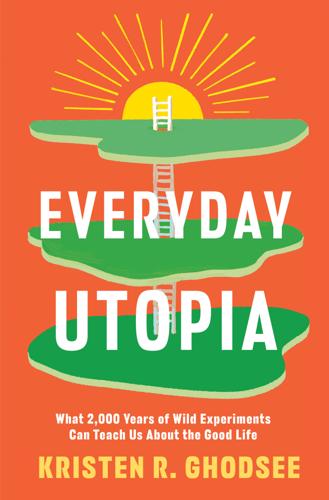
Everyday Utopia: What 2,000 Years of Wild Experiments Can Teach Us About the Good Life
by
Kristen R. Ghodsee
Published 16 May 2023
At the tail end of the Reagan and Thatcher eras, the United States and the Union of Soviet Socialist Republics maintained weapons arsenals sufficient to destroy the earth and all life upon it multiple times over. Back then, hawkish Americans championed the idea of tactical first strikes, but those of us clearheaded enough to understand the science of nuclear winter accepted the nihilistic truth: humanity was toast if the superpowers started World War III. The last episode of the first season of The Next Generation, “The Neutral Zone,” finds the USS Enterprise-D on the edge of Federation space. They encounter a satellite with three cryogenically frozen humans from the twentieth century: Americans from the late 1980s.
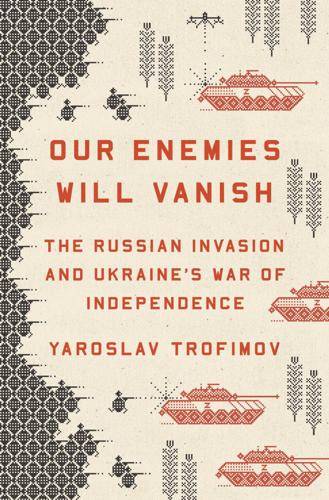
Our Enemies Will Vanish: The Russian Invasion and Ukraine's War of Independence
by
Yaroslav Trofimov
Published 9 Jan 2024
“All our pets have burned alive,” she said quietly. “Two cats. One dog. One hamster.” Chapter 16 Mariupol’s Neighborhood of Apocalypses On the evening of March 11, we left Kharkiv. There was a snowstorm, with a chilling wind whipping down the deserted streets. Constant explosions marked the rising toll. It felt hopeless, like nuclear winter. Putin had expected the city to welcome his embraces, and he was bludgeoning it for refusing to surrender. Any Russian pretenses of caring about Russian-speakers were forgotten. Cut off from reinforcements, and slowly strangled, Mariupol was subjected to a similar retribution. Russian propaganda usually insisted, perversely and against all evidence, that residential neighborhoods in the two cities were being bombed by Ukrainian “Nazis” rather than Russian artillery and aircraft.
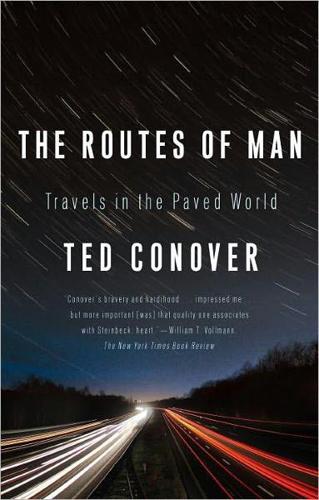
The Routes of Man: How Roads Are Changing the World and the Way We Live Today
by
Ted Conover
Published 15 Jan 2010
Cormac McCarthy’s harrowing novel The Road takes the dystopic premise of those films and subtracts sunshine and mirth and cars that still run. And it adds starvation, depravity, plenty of corpses, and the terror felt by a dying parent and an orphan-to-be. In The Road, highways become the setting for everything that still happens in the world, which means the wanderings of forlorn survivors of nuclear winter, people trying to scratch out a survival from the wreckage of houses, boats, and cars in a new dark age. Some of the pavement is scorched and buckled; some is covered with slush and ice; none of it, the protagonists find, is easy to traverse with a loaded grocery cart full of one’s worldly belongings.
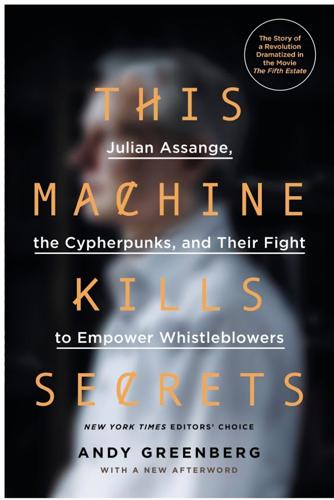
This Machine Kills Secrets: Julian Assange, the Cypherpunks, and Their Fight to Empower Whistleblowers
by
Andy Greenberg
Published 12 Sep 2012
Jon Karlung, the gray-stubbled and blue-eyed founder of the Internet service provider Bahnhof, leads me into a tunnel cut into the hill, past a pair of twenty-inch-thick steel doors, and into the White Mountain Data Center, a digital bunker first built as a Cold War nuclear shelter and now converted into one of the world’s most secure places to store information. We walk past two backup power generators originally designed for German submarines, a hydroponic garden, and a network operations center housed in the room that would have been used to run Sweden’s civil defense in the event of a nuclear winter. In a cave full of servers cooled by roaring fans, a glass-walled conference room hangs above the racked computers, embedded in the ceiling rock with thirteen-foot steel bolts. Climbing up a set of stairs, through a tiny door that forces the tall Swede to stoop and bend, and past a wall of gallon-size lead batteries, we arrive at our destination in a messy storage room.
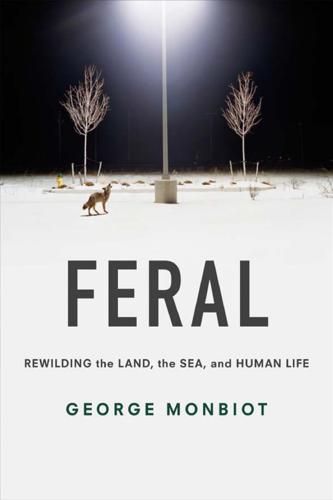
Feral: Rewilding the Land, the Sea, and Human Life
by
George Monbiot
Published 13 May 2013
Another document published by the wildlife trust stated that cattle were to be kept on the grassy part of the reserve ‘until there is an average sward height of 10cm’.3 The trust revealed that ‘to maximize the impact of the cattle, the grassland was strip-grazed’. This apparently, is how nature should best be protected in what this organization calls its ‘flagship’ reserve.4 It is by these means that, at great expense, it sustains the ambience of a nuclear winter. So why is this happening? The answer is like the Ouroboros, the snake swallowing its own tail. When you have followed it all the way round you find yourself back where you started. The stated purpose of this brutal management regime is to maintain the heath and bare bog it contains ‘in favourable conservation status’ (it is failing dismally, but let us put that to one side for now).
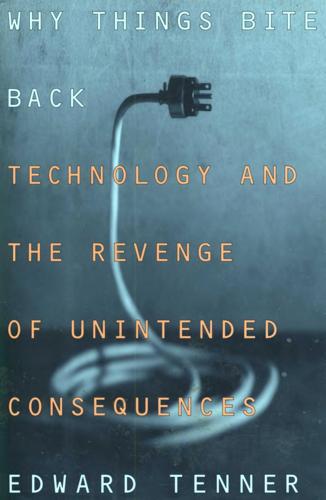
Why Things Bite Back: Technology and the Revenge of Unintended Consequences
by
Edward Tenner
Published 1 Sep 1997
Still, as the historian of science Spencer Weart has pointed out, while there were grounds for deep concern as early as 196o, the greenhouse effect did not become a major scientific and lay issue until the late 1980s. The risk from thermonuclear weapons had an almost built-in maintenance compulsion. The deferred consequences of climate change did not.38 As with the change from nuclear winter to solar summer, we usually (though not always) come late to the chronic. And many revenge effects amount to a conversion of sudden impacts that we perceive immediately into long-term problems far more difficult to remedy. As the twentieth century ends, the very devices that helped diagnose, treat, and prevent acute and catastrophic conditions become causes and portents of chronic ones.
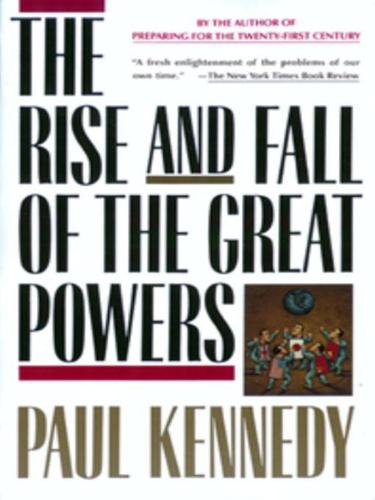
The Rise and Fall of the Great Powers: Economic Change and Military Conflict From 1500 to 2000
by
Paul Kennedy
Published 15 Jan 1989
Besides, it is argued, a large army and navy did not bring Japan “security,” whether of the military or the economic sort, in the 1930s; and it is difficult to see at present how an increase in defense spending could prevent a possible cutoff of Arab oil—which is a far greater danger to Japan strategically than, say, the hypothetical nuclear winter, and explains Tokyo’s desperate efforts to “lie low and say nothing” whenever there is a crisis in the Middle East. Is it not better, then, for Japan to abjure the use of force and to resolve all international disputes peacefully, as a cosmopolitan “trading state” should? Since modern war is so costly and is usually counterproductive, the Japanese feel that there is a lot of merit in their zenhoi heiwa gaiko (“omnidirectional peaceful diplomacy”).
…
In particular, the possession by each side of a great number of submarine-launched ballistic missiles, located in underwater craft which are difficult to detect,177 makes it inconceivable for either side to assume that it could knock out its enemy’s nuclear-weapons capacity all at once. This fact, more than—or at least as much as—fears of a “nuclear winter” will stay the hand of decision-makers, unless they are dragged down by some accidentally induced escalation. It therefore follows that each side is locked into a nuclear stalemate from which it cannot retreat—it being practically impossible either to disinvent nuclear technology or for one (or both) superpowers to give up possession of the weapons—and from which it cannot gain real advantage—since each power’s new system is countered or imitated by the other, and since it is too risky actually to use the weapons themselves.
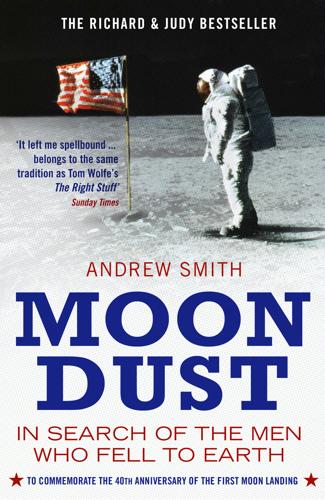
Moondust: In Search of the Men Who Fell to Earth
by
Andrew Smith
Published 3 Apr 2006
“ – or they have big holes in the ground; and they show that the last four major extinctions were caused by impacts and we also have super volcanoes around the planet Earth – you know there’s a lot of volcanic activity all over the solar system, there’s hundreds of volcanoes on Venus and some on Mars and the Moon has a bunch – there’s no active volcanism on the Moon right now, but it had a lot of old volcanism on it and right in the United States there’s three potential super volcanoes; Long Valley Caldera and the big crater there, that Los Alamos sits on top of, and Yellowstone … theoretically Yellowstone goes off every 600,000 years, and it was 640,000 years ago that it last went off, and when it did that, it put two and a half metres of ash in Nebraska, 1,200 kilometres away, so if you get a super volcano it causes the same thing that impacts cause … nuclear winters, wiping out life – ” And from here I pretty much lose it, just registering odd phrases. “ – and the last one, Toba in Sumatra, put 2,800 cubic kilometres of ash in the stratosphere and wiped out – ” “ – I mean, that’s why we all have the same DNA pretty much, because Earth’s population went down to several thousand people and that’s not me talking, this is scientific evidence – ” “ – the statistics right now for impacts are 1 in 5,000 chances that in the next hundred years we’ll get an impact that’ll wipe out civilization – ” “ – the chances of a super volcano occurring, which are independent events, are 1 in 500 in the next hundred years, so if you take those two together, the chances of a civilization-ending event occurring in the next hundred years is 1 in 455.”
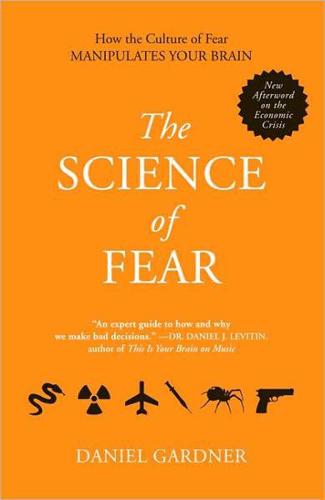
The Science of Fear: How the Culture of Fear Manipulates Your Brain
by
Daniel Gardner
Published 23 Jun 2009
Bigger asteroids get really scary. At a little more than a half mile across, an asteroid could dig a crater 9 miles wide, spark a fireball that appears twenty-five times larger than the sun, shake the surrounding region with a 7.8 earthquake, and possibly hurl enough dust into the atmosphere to create a “nuclear winter.” Civilization may or may not survive such a collision, but at least the species would. Not so the next weight class. A chunk of rock 6 miles across would add humans and most other terrestrial creatures to the list of species that once existed. This is what did in the dinosaurs. Fortunately, there aren’t many giant rocks whizzing around space.
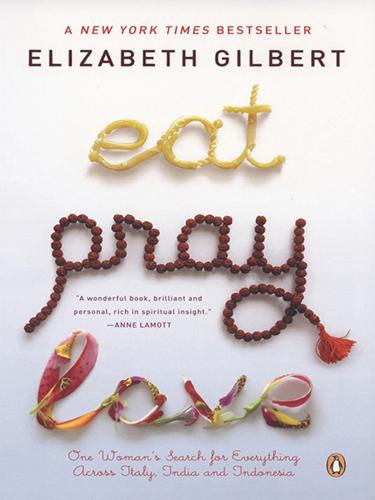
Eat, Pray, Love: One Woman's Search for Everything Across Italy, India and Indonesia
by
Elizabeth Gilbert
Published 1 Jan 2000
To be losing David right after the failure of my marriage, and right after the terrorizing of my city, and right during the worst ugliness of divorce (a life experience my friend Brian has compared to “having a really bad car accident every single day for about two years”) . . . well, this was simply too much. David and I continued to have our bouts of fun and compatibility during the days, but at night, in his bed, I became the only survivor of a nuclear winter as he visibly retreated from me, more every day, as though I were infectious. I came to fear nighttime like it was a torturer’s cellar. I would lie there beside David’s beautiful, inaccessible sleeping body and I would spin into a panic of loneliness and meticulously detailed suicidal thoughts.
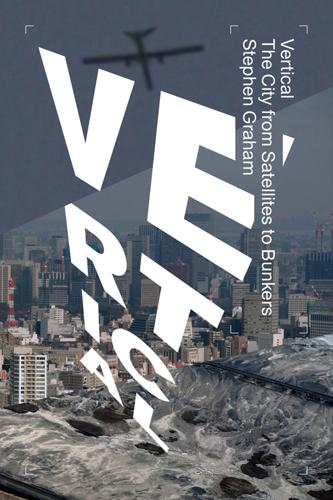
Vertical: The City From Satellites to Bunkers
by
Stephen Graham
Published 8 Nov 2016
In March 2015, state censors took Chai Jing’s remarkable film on the subject – tellingly titled Under the Dome – off the Internet in China after it had drawn hundreds of millions of viewers and galvanised huge pressures on the government.33 Pollution crises sometimes interrupt apparently inexorable logics of urban warming. In a particularly prolonged smog event in February 2014, Chinese scientists warned that the smog blanketing the Beijing region was becoming so bad that its effects were starting to resemble those of a nuclear winter, creating a city almost ‘uninhabitable for human beings’. Densities of suspended particles hit concentrations over twenty times maximum limits recommended by the World Health Organization. Photosynthesis rates in agricultural crops in the greenhouse-based systems within Beijing’s hinterland were halved.34 In Hong Kong, meanwhile, authorities made a move in the year 2000 to tempt the Walt Disney Corporation to build a theme park there.
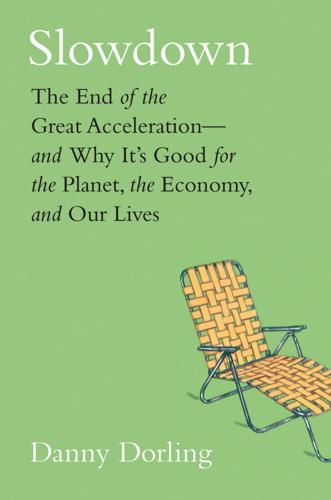
Slowdown: The End of the Great Acceleration―and Why It’s Good for the Planet, the Economy, and Our Lives
by
Danny Dorling
and
Kirsten McClure
Published 18 May 2020
Consider how we had no idea two hundred years ago that an invisible by-product of the burning of coal, carbon dioxide, would stay in the air for so long and not be quickly reabsorbed, with such a huge and toxic effect. Inevitably there will be something else we are doing today that will also have terrible repercussions of which we have as yet no conception at all. We are only animals, after all. As one well-known thinker once put it, it’s a wonder humans can even feed themselves.9 We once feared nuclear winter, and the coming of the next “natural” ice age. A few years ago, I made a list of many calamities that have been the focus of our fears over the past century. My favorite was the “killer bees” invasion once prophesied to sweep across California. As a child I heard stories about bees that came straight from the movies.
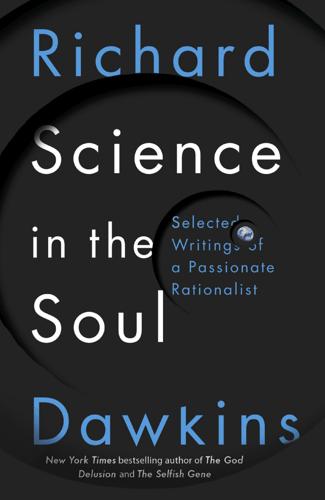
Science in the Soul: Selected Writings of a Passionate Rationalist
by
Richard Dawkins
Published 15 Mar 2017
The mass of this object (as large as a substantial mountain) and its velocity (perhaps 40,000 miles per hour) would on impact have generated energy equivalent, according to plausible estimates, to several billion Hiroshima bombs exploding together. The scorching temperature and prodigious blast of that initial impact would have been followed by a prolonged ‘nuclear winter’, lasting perhaps a decade. Together these events killed all the non-bird dinosaurs, plus pterosaurs, ichthyosaurs, plesiosaurs, ammonites, most fish and many other creatures. Fortunately for us a few mammals survived, perhaps protected because they were hibernating in their equivalent of underground bunkers.
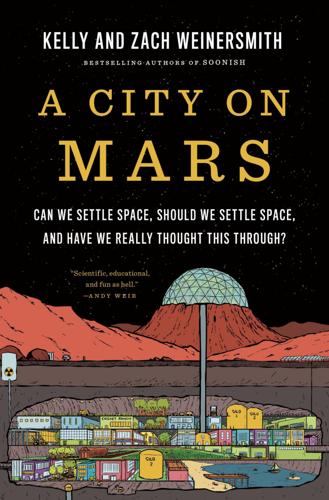
A City on Mars: Can We Settle Space, Should We Settle Space, and Have We Really Thought This Through?
by
Kelly Weinersmith
and
Zach Weinersmith
Published 6 Nov 2023
All of this would be the old story of territorial rivalry—but this time extended into the heavens themselves.” In part thanks to Schachter’s work, this scenario was thwarted. In the four decades after his essay, space and space-like environments got new property regimes in a manner that was basically peaceful and oriented around sharing. No Mars pioneers, but then again if we had nuclear-wintered our planet in a scramble for territory, that too would’ve put a damper on our space plans. These regimes also have one nontrivial virtue—they exist. You may want a privatized property scheme in space, but in the post–World War II era, whenever humans have been called upon to regulate a gigantic area that was formerly inaccessible, we’ve gone with a commons.

The Rational Optimist: How Prosperity Evolves
by
Matt Ridley
Published 17 May 2010
The airwaves are crammed with doom. In my own adult lifetime, I have listened to implacable predictions of growing poverty, coming famines, expanding deserts, imminent plagues, impending water wars, inevitable oil exhaustion, mineral shortages, falling sperm counts, thinning ozone, acidifying rain, nuclear winters, mad-cow epidemics, Y2K computer bugs, killer bees, sex-change fish, global warming, ocean acidification and even asteroid impacts that would presently bring this happy interlude to a terrible end. I cannot recall a time when one or other of these scares was not solemnly espoused by sober, distinguished and serious elites and hysterically echoed by the media.

The Zero Marginal Cost Society: The Internet of Things, the Collaborative Commons, and the Eclipse of Capitalism
by
Jeremy Rifkin
Published 31 Mar 2014
But what if the users aren’t listening, aren’t watching, and are looking to their peers for product recommendations and validation? The Economist concludes that “the number of companies that can be sustained by revenues from internet advertising turns out to be much smaller than many people thought, and Silicon Valley seems to be entering another ‘nuclear winter.’”89 Advertising revenues are beginning to reflect the pessimism. Internet advertising accounted for $36.6 billion in 2012, while, as mentioned, total U.S. advertising revenue came in at $153 billion, bringing the Internet share of the U.S. advertising market to only around 24 percent.90 The growth in Internet advertising spending, however, appears to be slowing, indicating that the early euphoria about corporate advertising paying the bill for all the free content given away on profit-driven social media sites has softened.
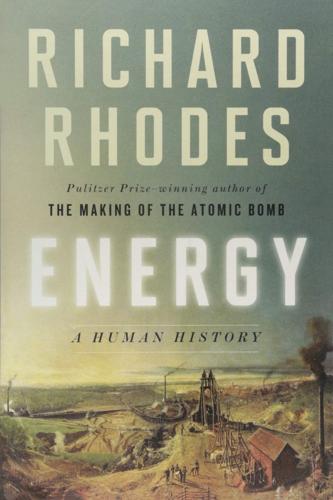
Energy: A Human History
by
Richard Rhodes
Published 28 May 2018
Académie des Sciences [Academy of Sciences]—Académie nationale de Médecine [National Academy of Medicine], 2005 (online). Ausubel, Jesse H. “The Liberation of the Environment.” Daedalus 125, no. 3 (1996): 1–17. Ausubel, Jesse H., and H. Dale Langford, ed. Technological Trajectories and the Human Environment. Washington, DC: National Academy Press, 1997. Badash, Lawrence. A Nuclear Winter’s Tale: Science and Politics in the 1980s. Cambridge, MA: MIT Press, 2009. Baekeland, Leo H. “The Synthesis, Constitution, and Uses of Bakelite.” Industrial and Engineering Chemistry 1 (1909): 149–61. Bagwell, Philip S. The Transport Revolution from 1770. London: B. T. Batsford, 1974. Bailey, Michael R., and John P.
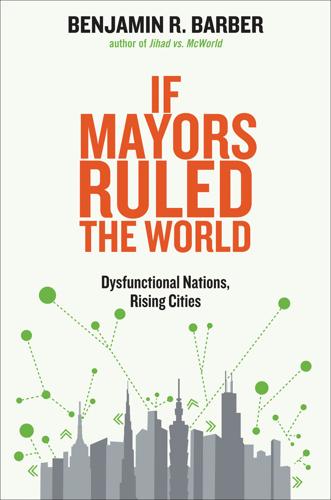
If Mayors Ruled the World: Dysfunctional Nations, Rising Cities
by
Benjamin R. Barber
Published 5 Nov 2013
It is too easy to imagine a cell securing a loose nuke or dirty bomb (clad in fissionable radioactive material) and importing it on one of those ubiquitous container ships that enter ports around the world, mostly uninspected. The second half of the twentieth century was marked by the unthinkable peril of nuclear winter, a thermonuclear exchange among state superpowers devoted to “mutual assured destruction”—the so-called MAD strategy of threatening reciprocal annihilation in order to deter conflict altogether. The first half of the twenty-first century will be marked by the “lesser” peril of a singular random act by a terrorist madman, a peril that may however seem even more horrific to urban dwellers.

Consumed: How Markets Corrupt Children, Infantilize Adults, and Swallow Citizens Whole
by
Benjamin R. Barber
Published 1 Jan 2007
Griffith creating United Artists in 1919.21 In its first half-century, this studio made such celebrated films as Wuthering Heights, Stagecoach, Spellbound, The Apartment, Arthur Miller’s The Misfits, One Flew Over the Cuckoo’s Nest, Network, Apocalypse Now, and way before Brokeback Mountain, the New York man-boy hustler movie Midnight Cowboy. These were all films that helped define Hollywood filmmaking at its best in terms of excellence and entertainment but also with respect to the breaking of taboos and the assuming of a social agenda. Other studios made risky political films such as the nuclear-winter nightmare On the Beach (five survivors contemplate the aftermath of nuclear war) and sardonic black Armageddon comedies like Peter Sellers’s Dr. Strangelove (directed by Stanley Kubrick). A handful of bankable stars including Robert Redford and Warren Beatty used the fame and fortune they acquired from acting to develop film projects that pressed Hollywood’s tolerance for politically and culturally transgressive films—notably, Warren Beatty’s Reds (a semidocumentary narrative history of early Communism) and his more recent satire on congressional hypocrisy called Bulworth.
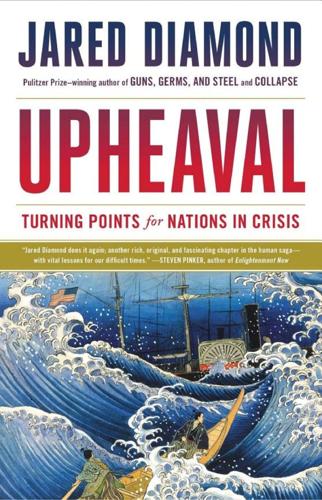
Upheaval: Turning Points for Nations in Crisis
by
Jared Diamond
Published 6 May 2019
Even if bomb explosions themselves were confined to India and Pakistan, the atmospheric effects of detonating hundreds of nuclear devices would be felt worldwide, because smoke, soot, and dust from fireballs would block most sunlight for several weeks, creating winter-like conditions of steeply falling temperatures globally, interruption of plant photosynthesis, destruction of much plant and animal life, global crop failures, and widespread starvation. A worst-case scenario is termed “nuclear winter”: i.e., the deaths of most humans due not only to starvation but also to cold, disease, and radiation. The only two uses of nuclear weapons to date were the Hiroshima and Nagasaki bombs. Ever since then, fear of large-scale nuclear war has formed the backdrop of my life. While the end of the Cold War after 1990 initially reduced grounds for that fear, subsequent developments have increased the risk again.
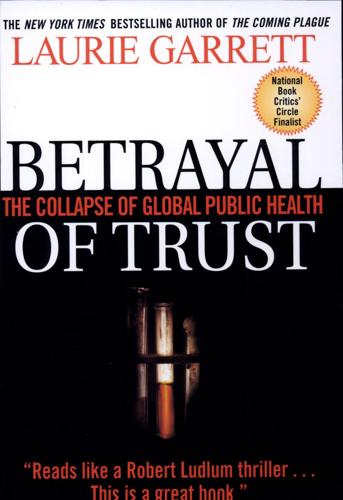
Betrayal of Trust: The Collapse of Global Public Health
by
Laurie Garrett
Published 15 Feb 2000
Henderson stuck to historical ground, outlining the destruction and terror produced by outbreaks of smallpox and anthrax during the latter half of the twentieth century. He kept the academic litany remarkably dry, given the horror he was describing. And he concluded his remarks with an observation that stood in stark contrast to the almost nonchalant tone of his previous comments: “The specter of biological weapons is every bit as grim as that of nuclear winter,” a reference to the theory that use of nuclear weapons would sink the world into an ice age that would obliterate nearly every life-form on earth. Osterholm wasn’t satisfied. He pushed his mentor for more. And he got it six months later at an enormous public meeting in Atlanta. D. A. Henderson decided that the time had come to speak his mind in the manner Osterholm had urged.
…
In 1982, based on the meager and flawed information at its disposal, the World Health Organization estimated that a thermonuclear exchange between the United States and USSR would directly and indirectly—via radiation, epidemics, and starvation—kill two billion people. That estimate was adjusted upward in the later 1980s when a group of astronomers, physicists, atmospheric researchers, and vulcanologists set forth the nuclear winter hypothesis. In their scenario, blasts involving bombs in excess of 100 kilotons would trigger an Ice Age few species would survive. 218. In 1961 Mahoney’s successor, Dr. Leona Baumgartner, stated her position on the nuclear fallout question and how it affected New Yorkers: “Widespread realization of the potential hazards of ionizing radiation grew out of atomic bomb development.

Superintelligence: Paths, Dangers, Strategies
by
Nick Bostrom
Published 3 Jun 2014
It appears that a war would probably have fallen short of causing human extinction, even if it had been fought with the combined arsenals held by all the nuclear powers at the height of the Cold War, though it would have ruined civilization and caused unimaginable death and suffering (Gaddis 1982; Parrington 1997). But bigger stockpiles might be accumulated in future arms races, or even deadlier weapons might be invented, or our models of the impacts of a nuclear Armageddon (particularly of the severity of the consequent nuclear winter) might be wrong. 13. This approach could fit the category of a direct-specification rule-based control method. 14. The situation is essentially the same if the solution criterion specifies a goodness measure rather than a sharp cutoff for what counts as a solution. 15. An advocate for the oracle approach could insist that there is at least a possibility that the user would spot the flaw in the proffered solution—recognize that it fails to match the user’s intent even while satisfying the formally specified success criteria.
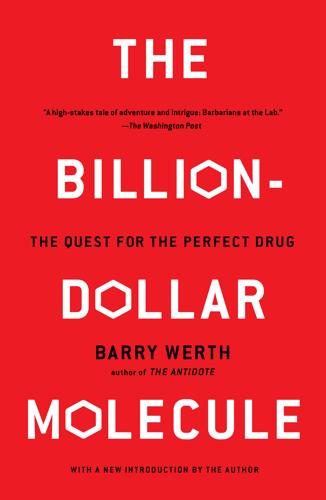
The Billion-Dollar Molecule
by
Barry Werth
The company’s morale rises and falls with the stock price, the circus atmosphere increases . . .” He paused. “Then again, you shouldn’t underestimate the value of having $50 million in the bank. You lose some people but attract others. No question Manuel would have been here faster if we had that much at the beginning.” Aldrich saw in the Regeneron offering the seeds of “another long nuclear winter in biotech” and fretted Vertex’s lateness in getting to the market. “There’s all kinds of product out there, cranking, soaking up money,” he said. But Boger was strangely uplifted. If Wall Street thought Regeneron was worth $350 million, what must Vertex be worth? As it had at the Vista eighteen months earlier, Wall Street’s breathtaking gall, its utter shamelessness, amused and intrigued him like some exotic peep show.
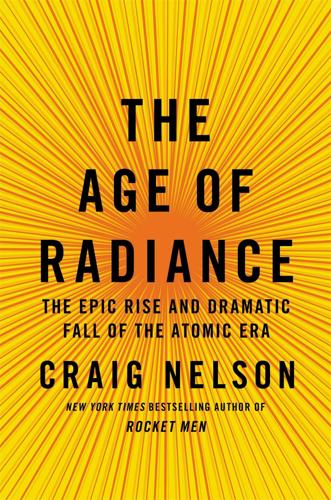
The Age of Radiance: The Epic Rise and Dramatic Fall of the Atomic Era
by
Craig Nelson
Published 25 Mar 2014
But KEEP OFF THE GRASS has a whole new meaning here; after the massive decontamination effort of the liquidators, “it’s safe where we are,” Sergei Saversky, deputy chief of zone management, explained to a recent group of tourists. “Just don’t walk where you’re not supposed to.” With the wilderness, comes the wild creatures. Contrary to expectations of nuclear winter and atomic desert, after the evacuation of ever-hungry people with their eternal agricultural war against predators, the Zone of Alienation’s 1,660 square miles became a wildlife sanctuary teeming with cormorants, cranes, herons, and sixty-six different species of mammals—bears, wild boar, wolves, red deer, roe deer, beavers, river otter, foxes, lynx, thousands of elk, and a surfeit of barsuk, the badger of central Europe.
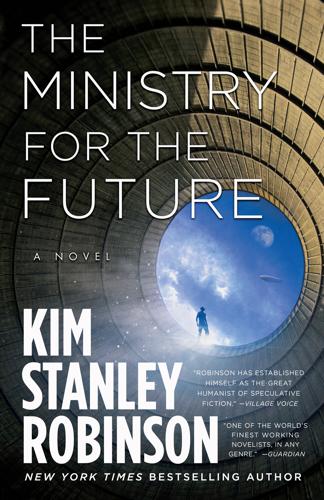
The Ministry for the Future: A Novel
by
Kim Stanley Robinson
Published 5 Oct 2020
He nodded at her in a morose greeting, pushed the ice around in his glass. “What’s the word from Delhi?” she said as she sat across from him. “It’s to start tomorrow.” She nodded at the waiter, pointed at Badim’s drink. Another whisky. “What’s the reaction?” “Bad.” He shrugged. “Maybe Pakistan will bomb us, and we’ll retaliate, and that will start a nuclear winter. That will cool the planet quite nicely!” “I should think the Pakistanis would want this as much as anyone, or even more. A heat wave like the one that just happened could kill everyone there.” “They know that. They’re just piling on. China is doing it too. We are now the pariah of the world, all for doing the needful.
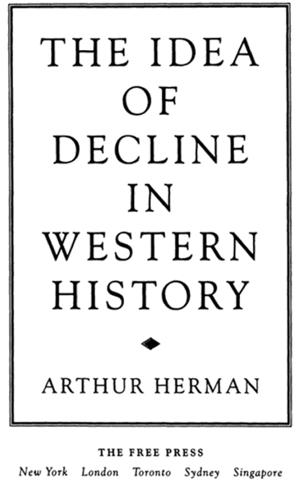
The Idea of Decline in Western History
by
Arthur Herman
Published 8 Jan 1997
APOCALYPSE AND THE NEW GREEN ORDER Earth is threatened by destruction on a world-wide scale, and only if we all work together can we defeat the forces of evil: drought and flooding, ultraviolet radiation and smog, cancer and famine, all brought on by the three horsemen of the apocalypse—the greenhouse effect, ozone depletion, and nuclear winter. —David Fisher, Fire and Ice , 1990 The notion of civilization rests on a firm rejection of the apocalyptic view of history. Enlightenment thinkers believed that the apocalyptic prophet, like the religious fanatic, was the enemy of humane civilized values; both were willing to wreck ordinary working institutions for the sake of a personal, and therefore unverifiable, vision of God’s purposes.
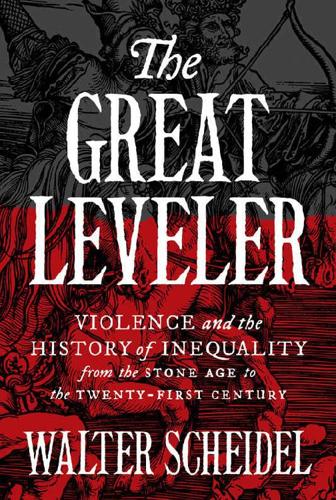
The Great Leveler: Violence and the History of Inequality From the Stone Age to the Twenty-First Century
by
Walter Scheidel
Published 17 Jan 2017
Although contemporary science fiction accounts of a postapocalyptic world sometimes envision high degrees of inequality between those in control of scarce vital resources and deprived majorities, the experience of the thoroughly impoverished and less stratified postcollapse communities of premodern history might be a better guide to conditions in a future “nuclear winter.” But this is unlikely to happen. Although nuclear proliferation may change the rules of the game in regional theaters, the same existential risks that have prevented nuclear war between major powers since the 1950s continue to apply. Moreover, the mere existence of stockpiles of nuclear weapons makes it less likely that core regions such as the United States or China will get massively involved even in conventional warfare and serves to displace conflict into global peripheries, which in turn lowers the odds of severe damage to the world’s major economies.16 Weapons technology is only part of the story.
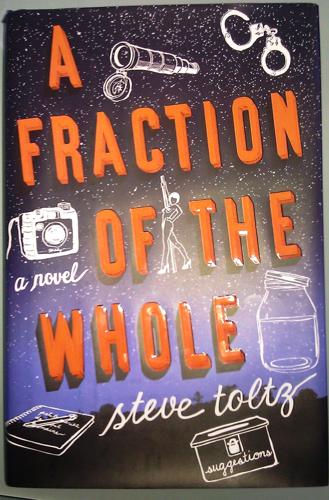
A Fraction of the Whole
by
Steve Toltz
Published 12 Feb 2008
One afternoon we watched a dark orange sun bleed into the horizon. "This is one of those sunsets made glorious by the pollution of a congested city. Someone has to say it and it might as well be me--Nature's own work pales in comparison. The same goes for mass destruction. One day we'll all be basking in the glow of a nuclear winter and God, won't it be heaven on the eyes!" In addition to heroin smuggling and prostitution, the democratic cooperative of crime's main trade was gambling on Thai boxing matches, the national sport. Terry would take me along when he bribed the boxers to take a dive. I remember thinking about his legacy in Australia, how he had been obsessed with fighting corruption in sport, and I was impressed with the way he now shat all over it like this.
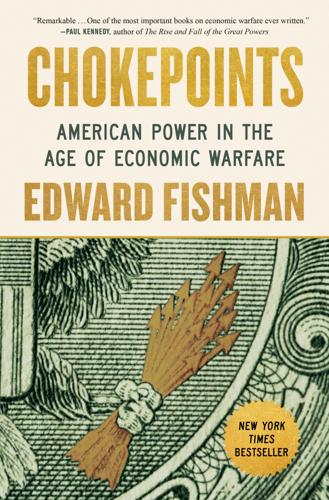
Chokepoints: American Power in the Age of Economic Warfare
by
Edward Fishman
Published 25 Feb 2025
Its experts projected that sanctions on the Central Bank of Iran would send global oil prices soaring above $200 per barrel, perhaps even higher. The United States would face inflation, unemployment, and a plummeting GDP. If the sanctions shaved off just half of Iran’s daily oil exports, the result would be “basically nuclear winter recession,” recalled a senior Treasury official who was briefed on IA’s analysis. At the same time, it was uncertain how much the move would hurt Iran, as the country would benefit from stratospheric oil prices. Tehran might even end up making more money selling less oil. Upon learning of IA’s assessment, the White House decided to vigorously oppose Congress’s push for sanctions on the Central Bank of Iran.
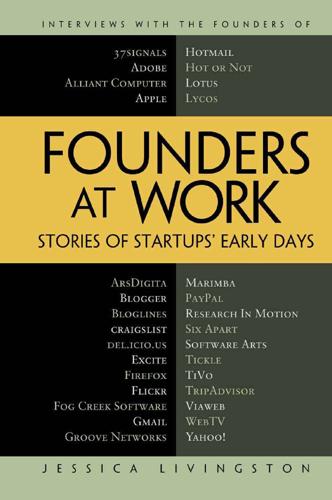
Founders at Work: Stories of Startups' Early Days
by
Jessica Livingston
Published 14 Aug 2008
Joel Spolsky 347 The consulting market is the derivative of every other market. When a company is growing, they will hire a few consultants to help them grow a little bit more rapidly. When they’re shrinking, they’ll instantly fire all consultants. If the market is even going down by 0.002 percent instead of growing—which it did, because there was a sort of dot-com nuclear winter—then the first people to go will be the consultants. So the consulting business completely collapsed, and every company in that space more or less collapsed. The ones that remained— Razorfish, Scient, Viant, whatever—all sort of conglomerated into one company with about 120 people, and that was it.
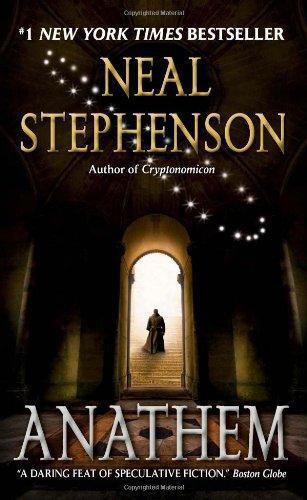
Anathem
by
Neal Stephenson
Published 25 Aug 2009
Without any explanation from me, Cord saw how sunlight entering into one face of the prism was bounced downwards through a hole in the roof to shine on some metallic construct within. “This I’ve heard of,” she said, “it synchronizes the clock every day at noon, right?” “Unless it’s cloudy,” I said. “But even during a nuclear winter, when it can be cloudy for a hundred years, the clock doesn’t get too far out of whack.” “What’s this thing?” she asked, pointing to a dome of glass about the size of my fist, aimed straight up. It was mounted at the top of a pedestal of carven stone that rose to about the same height as the prism-holding statue.
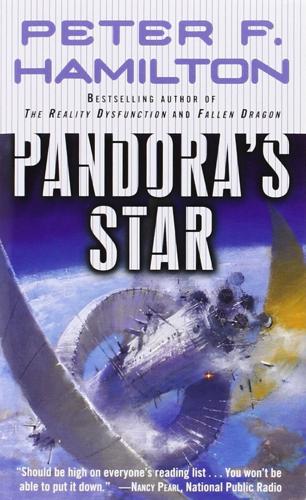
Pandora's Star
by
Peter F. Hamilton
Published 2 Mar 2004
So heavy was the unnatural rain that rivulets formed across the force field, carrying away the water to the saturated ground beyond. Whole tides of mud were slithering around the protected, sacrosanct valley. The motile regarded the new weather intently, with one thought starting to dominate its mind: Nuclear winter. .... Paula Myo took the express from Paris direct to Wessex. She had a long wait in the CST planetary station there; the train to Huxley’s Haven only ran once a day. It was dark outside when she eventually went to platform 87B, which was situated in a small annex at the end of the terminal.